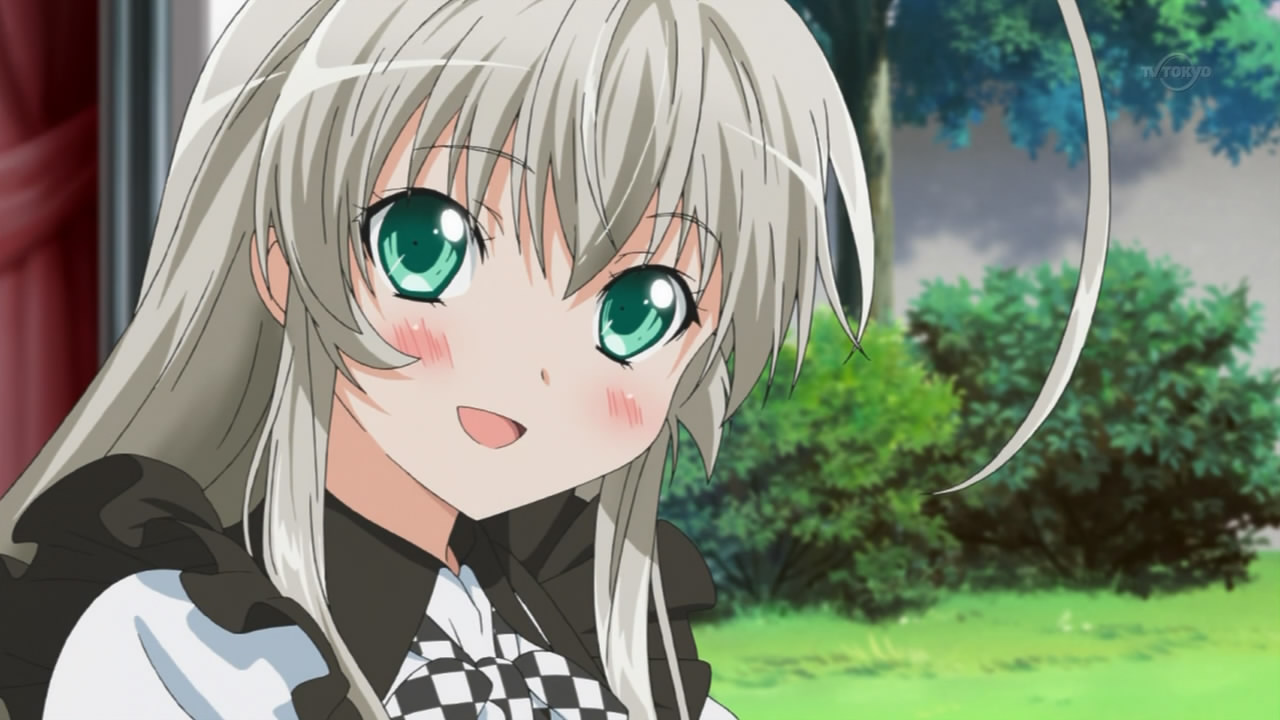Haiyore! Nyaruko-san Episode 12 References
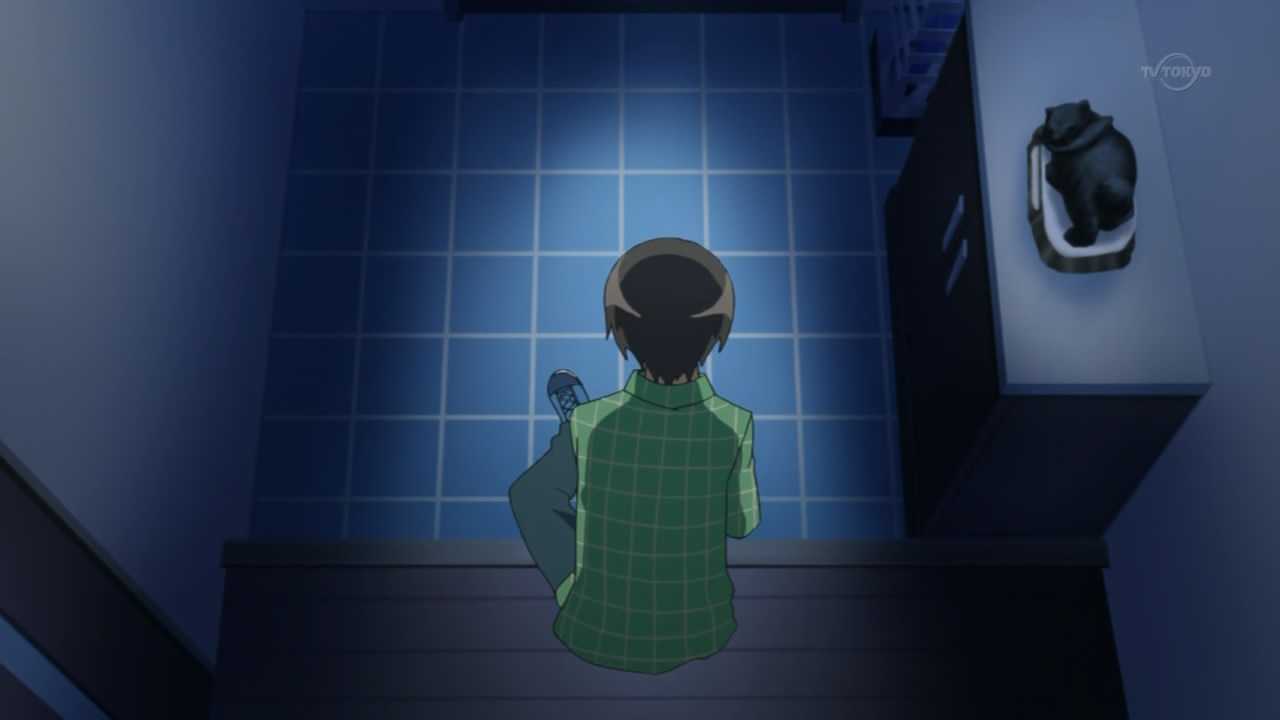
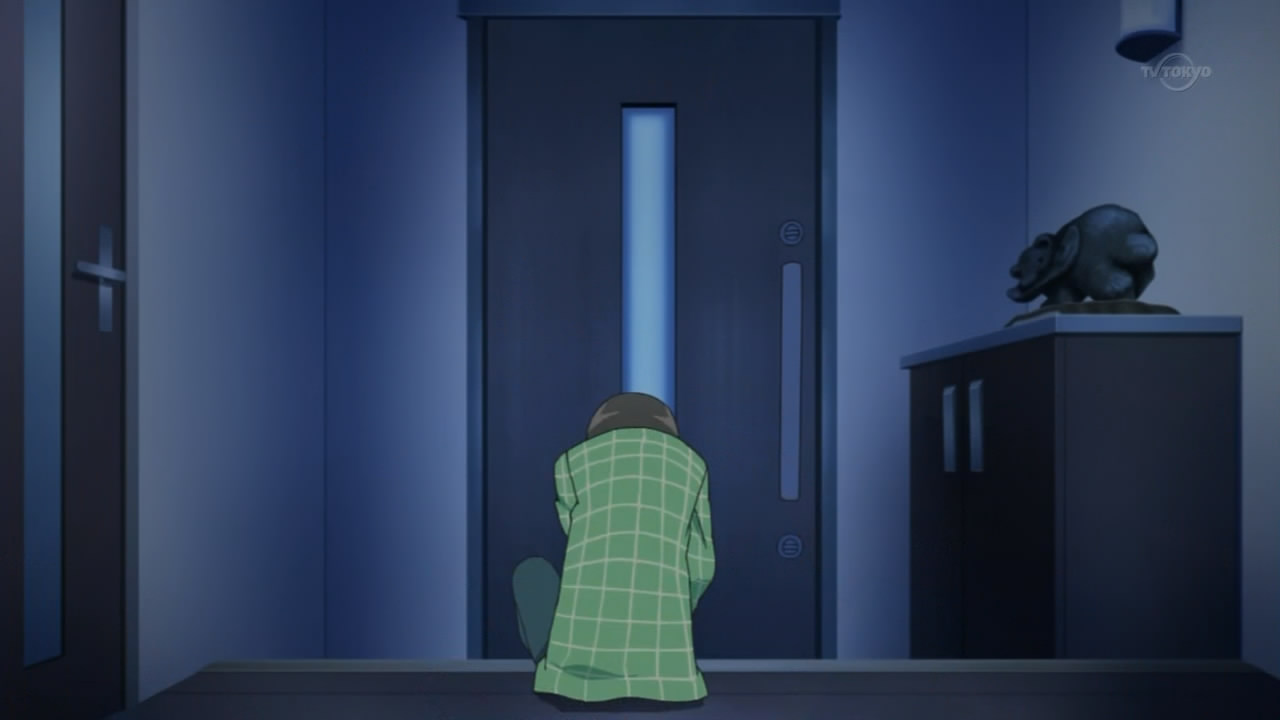
(2:48), (2:54)
Like in episode 2 at 21:02, the small statue is of a bear with a salmon in its mouth. It is known as a "kibori no kuma" (木彫りの熊), "carved wooden bear", and is a famous souvenir from Hokkaido. On a related note, the author of the "Haiyore! Nyaruko-san" light novel series, Aisora Manta (逢空万太), was born in Sapporo, Hokkaido.S1 Image for reference:
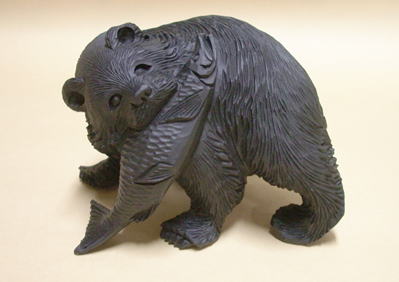
Source of image: http://yogozansu.cocolog-nifty.com/blog/2007/08/post_374a.html
Scenes
(3:25 - 4:46)
The scenes that appear while Mahiro walks through the empty city after he leaves his house are referencing "Urusei Yatsura 2: Beautiful Dreamer" (うる星やつら2 ビューティフル・ドリーマー), a movie released in 1984.S1 This movie is based on "Urusei Yatsura" (うる星やつら), a manga series written by Takahashi Rumiko (高橋留美子) and published from 1978 to 1987. Images for reference ("Nyaruko" on the left, "Beautiful Dreamer" on the right):
* The movie begins with a shot of the sky and 4 birds flying overhead.
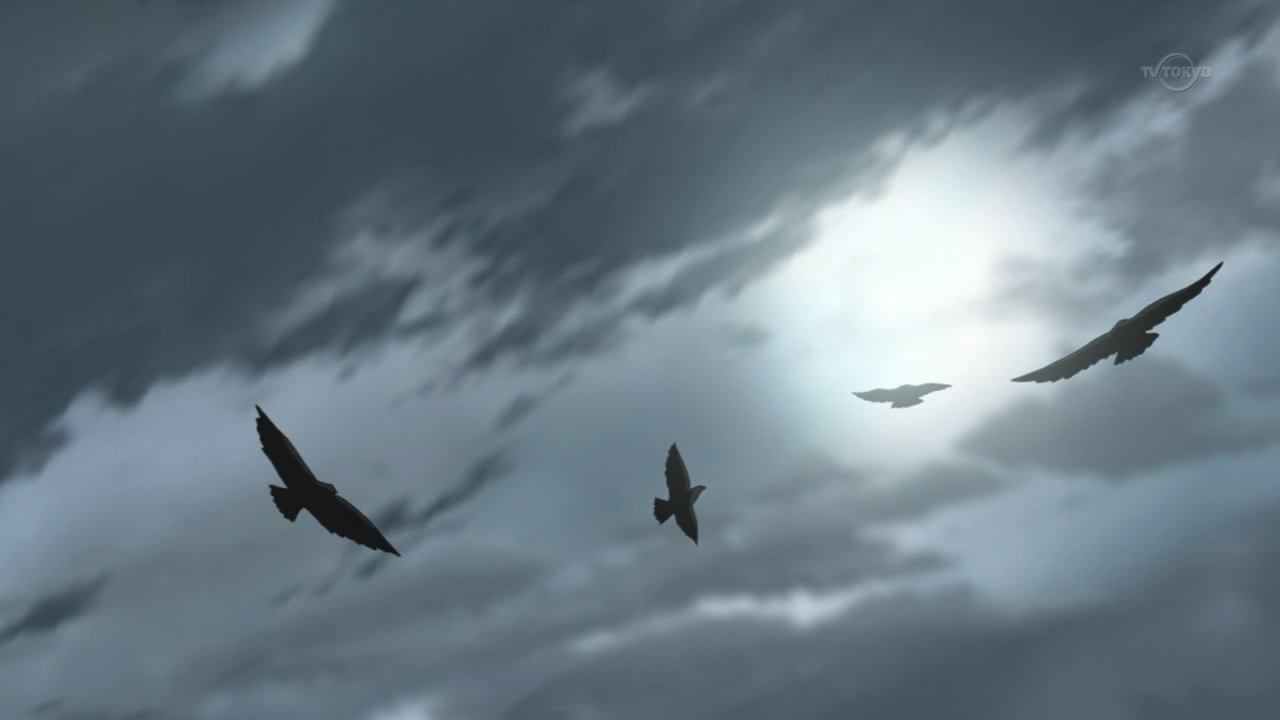
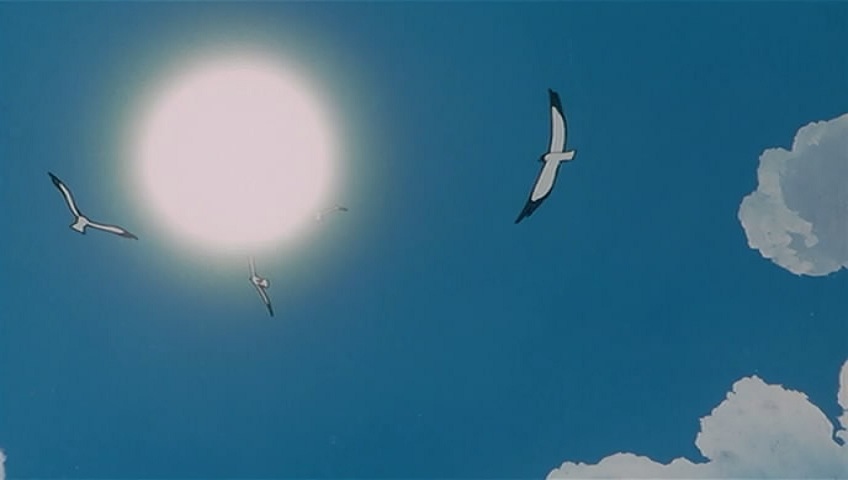
* The screen pans down to a shot of one bird.
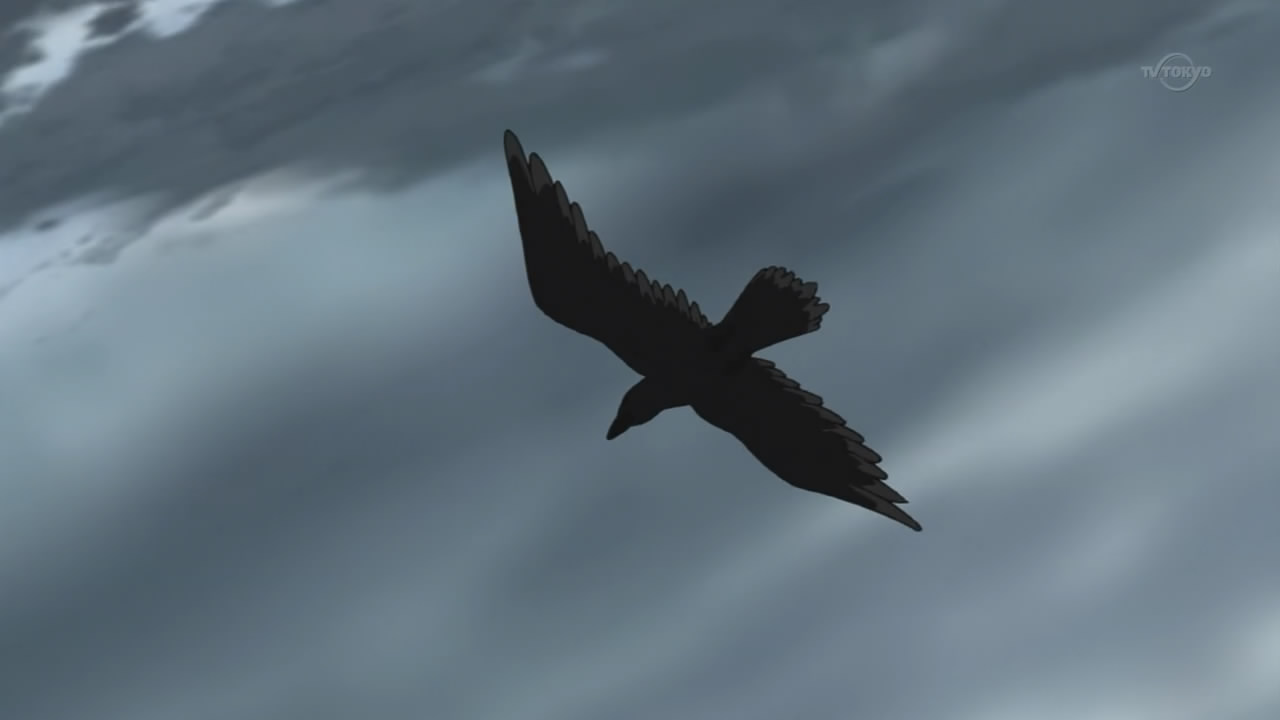

* The screen continues to pan down to reveal the city in ruins.
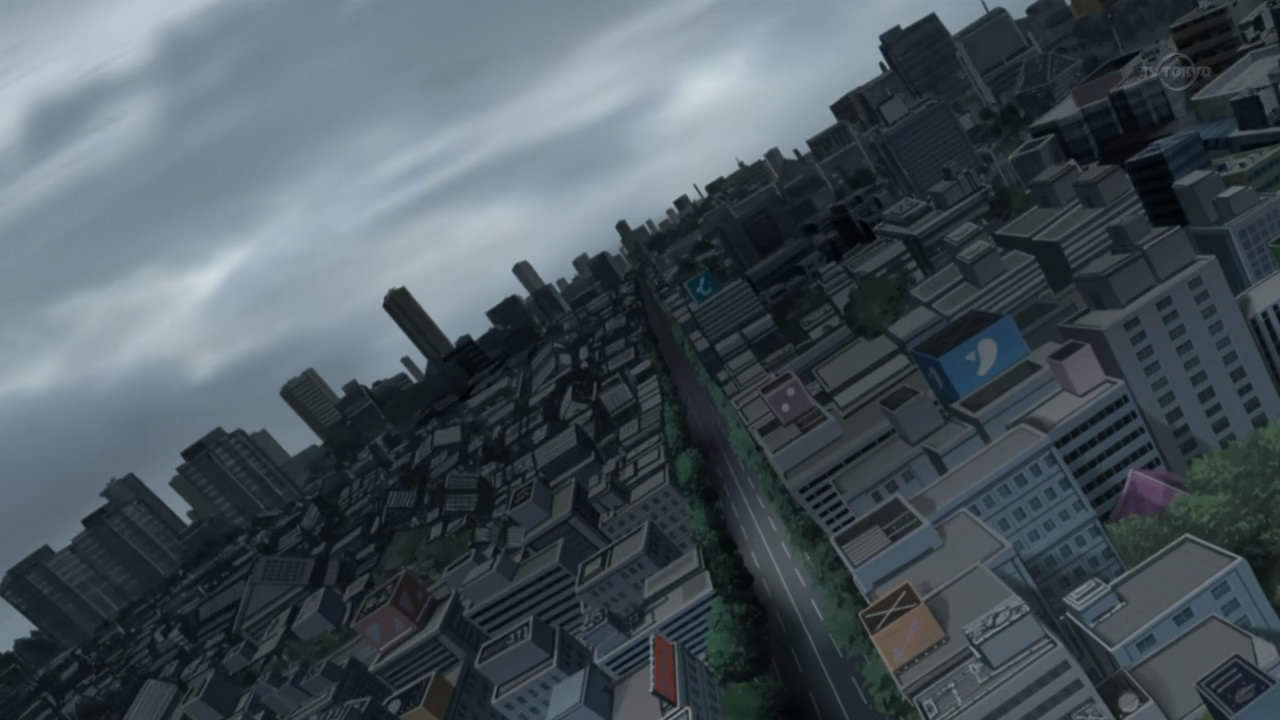
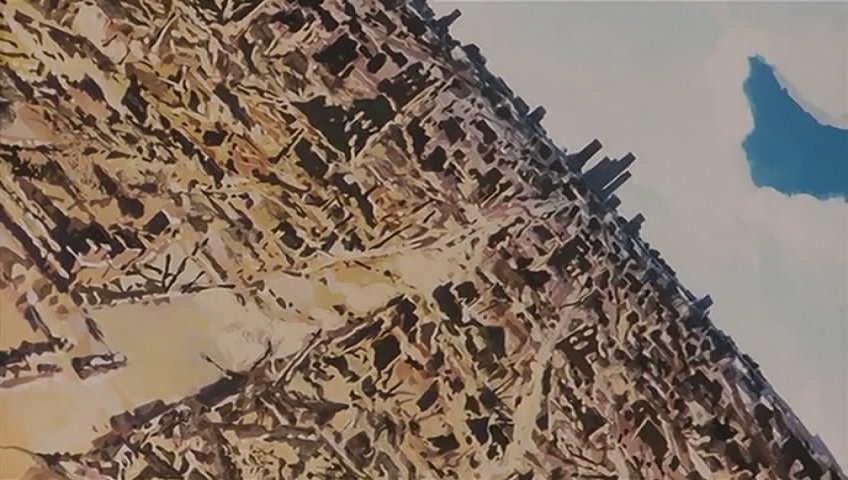
* Reflection in a pool of water left by the rain.
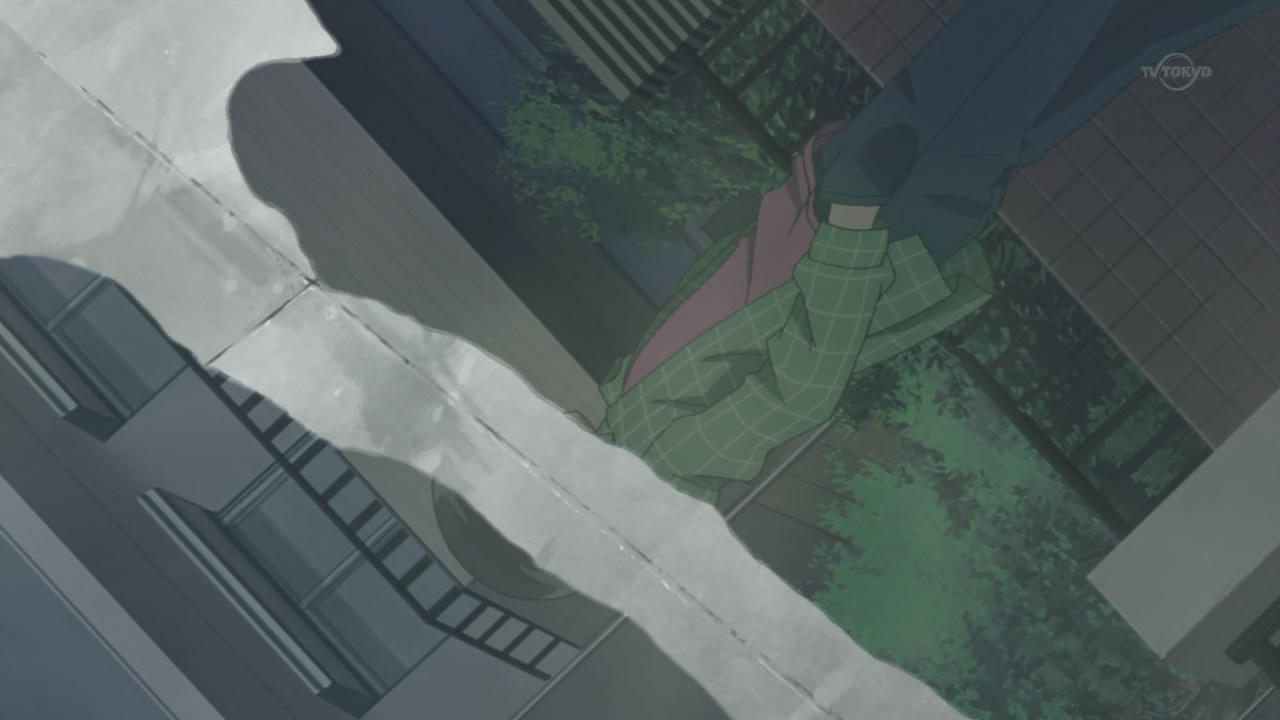
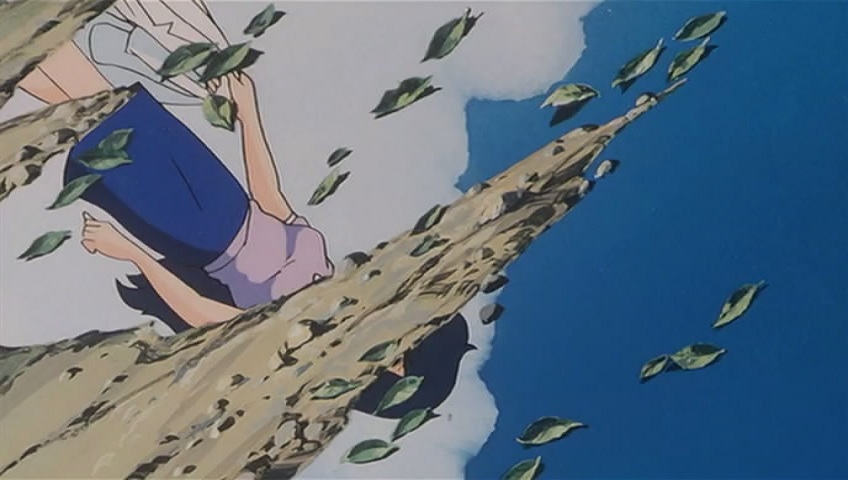
* Close up shot of a stop light.
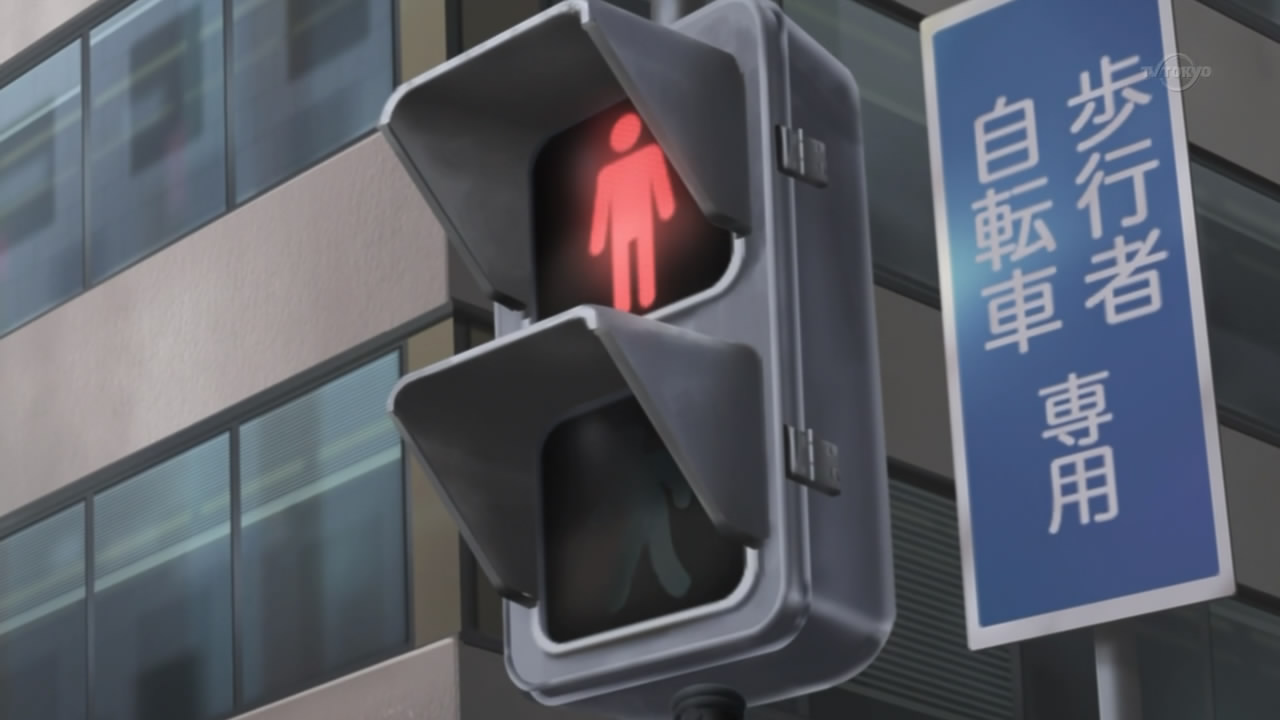
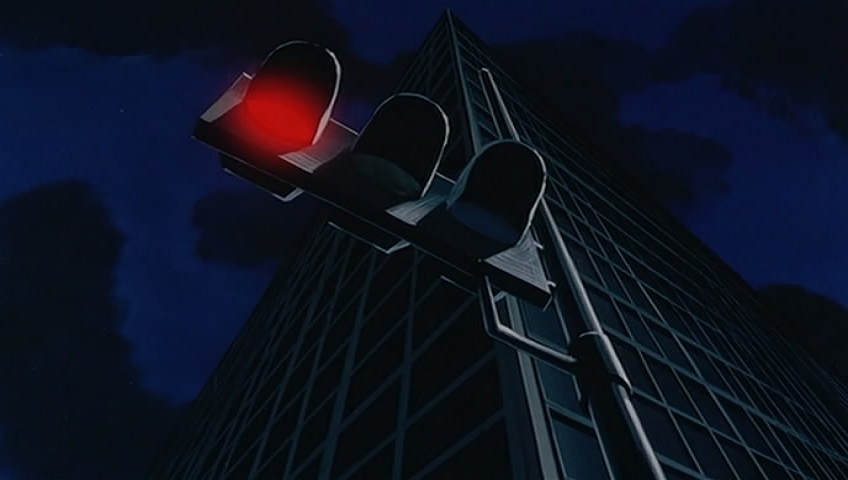
* A shot of a clock tower. The time on the clock reads 7 AM.
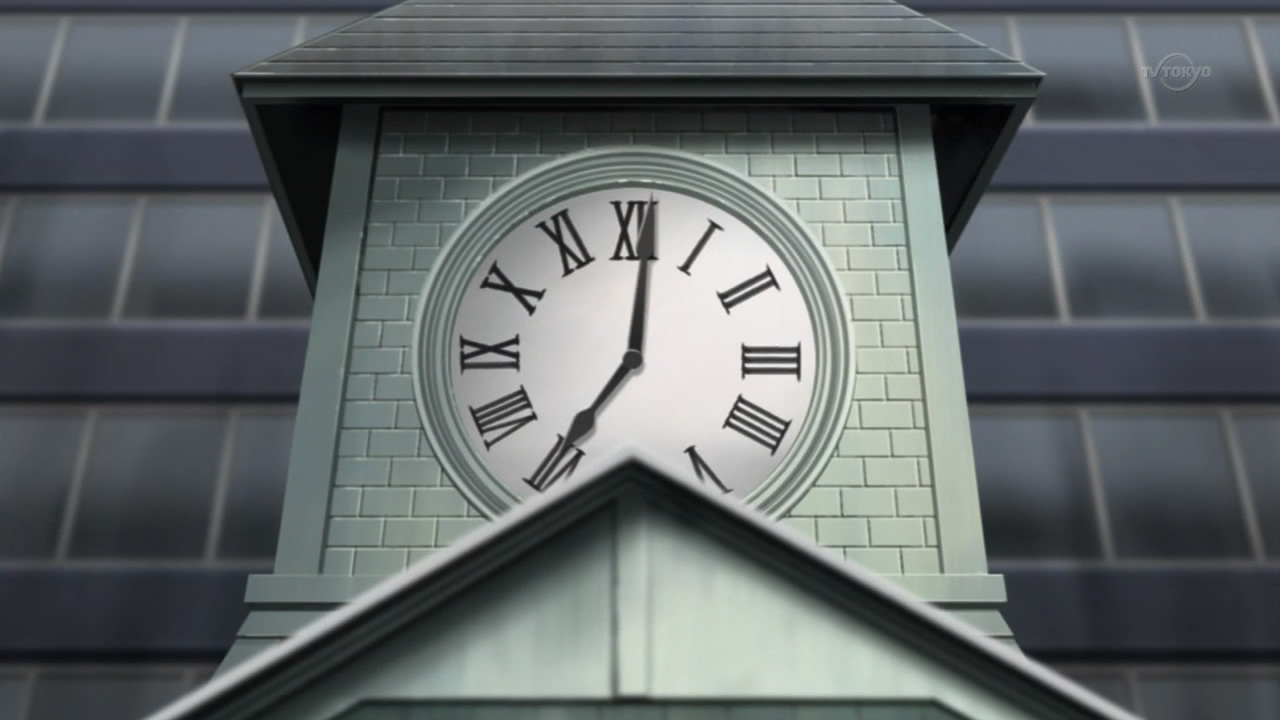
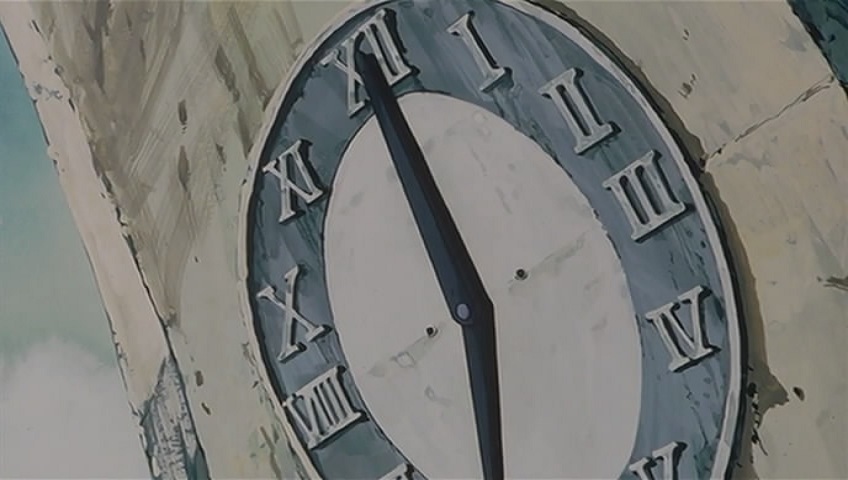
* The shadow of a bird flies over the clock face.
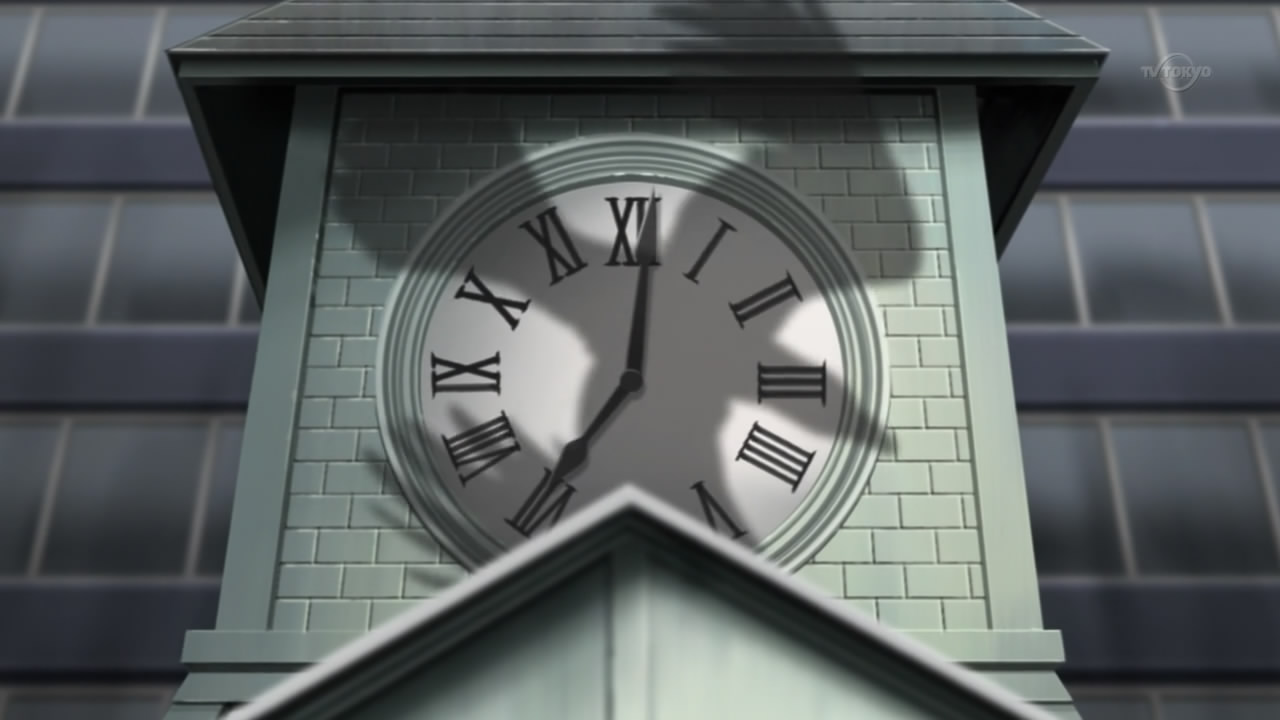

* An empty intersection.
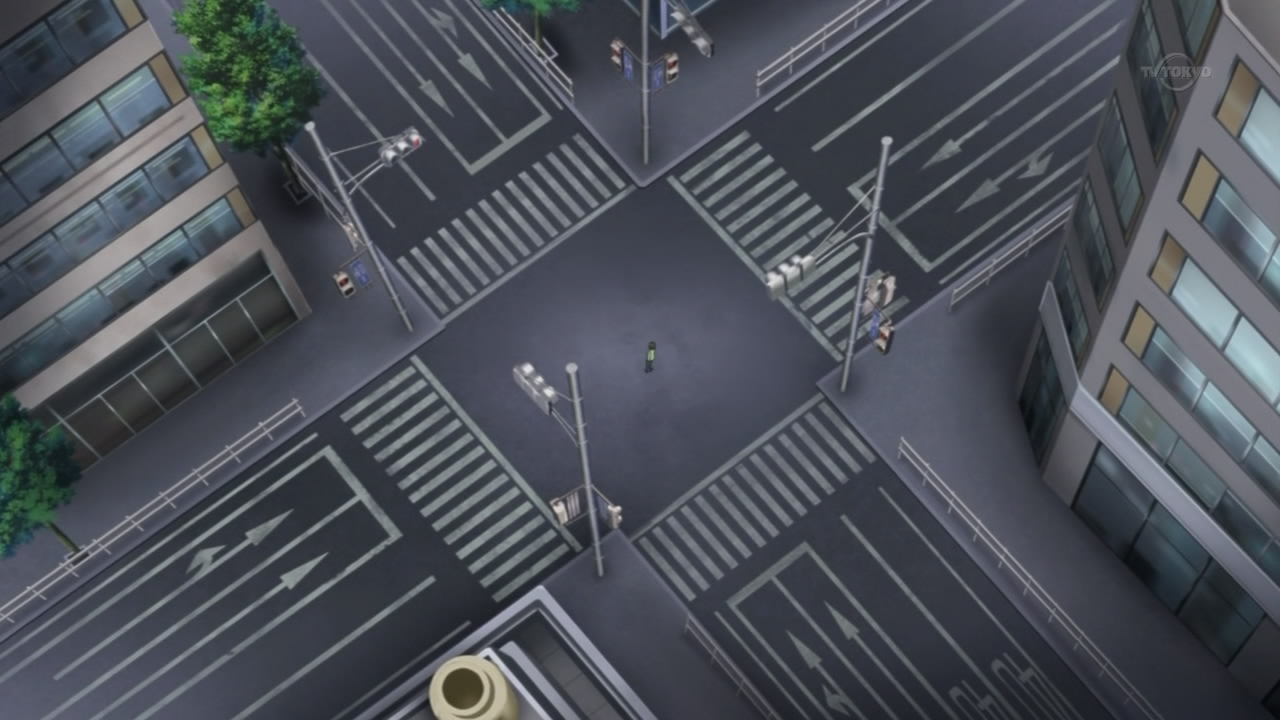
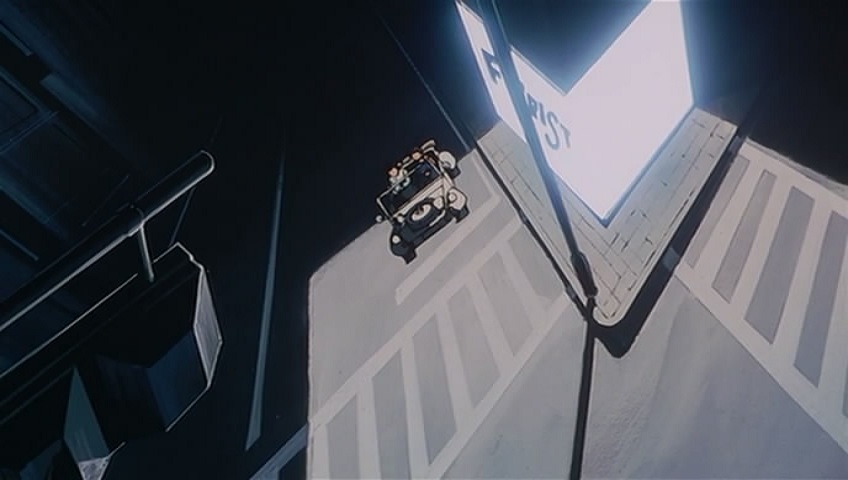
* An empty phone booth with the phone ringing and no one picking up.
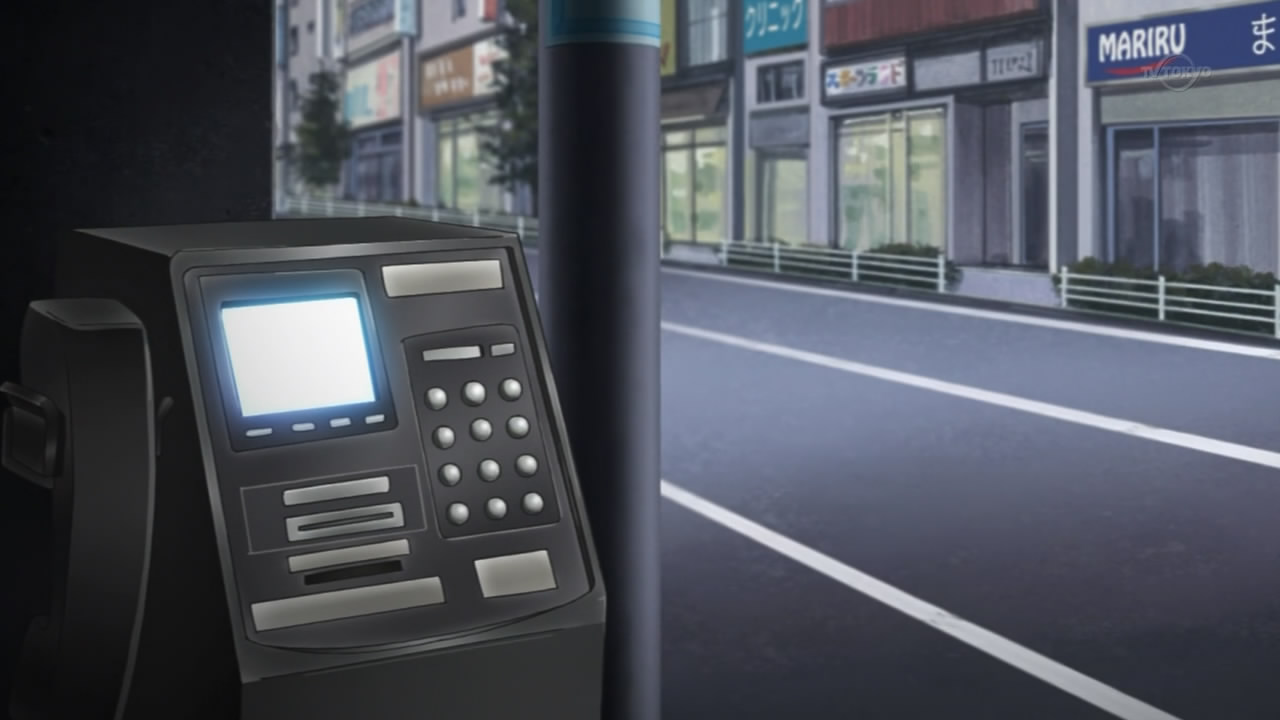
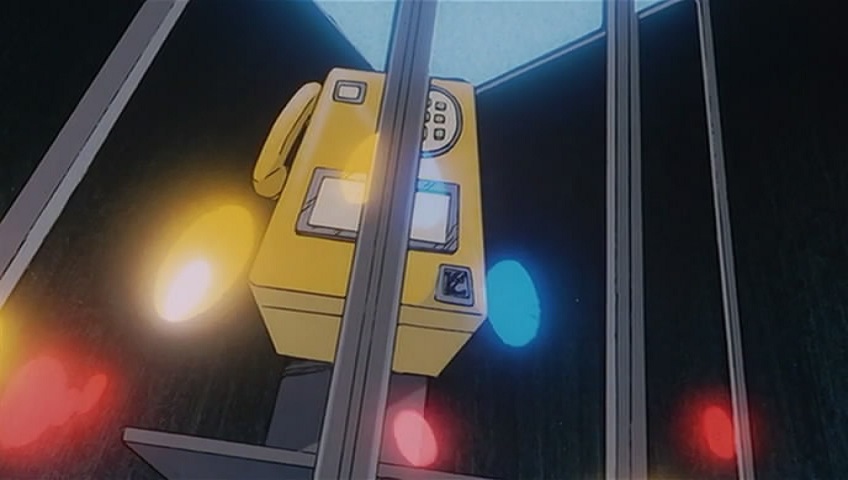
* A row of phones ringing and no one picking up.
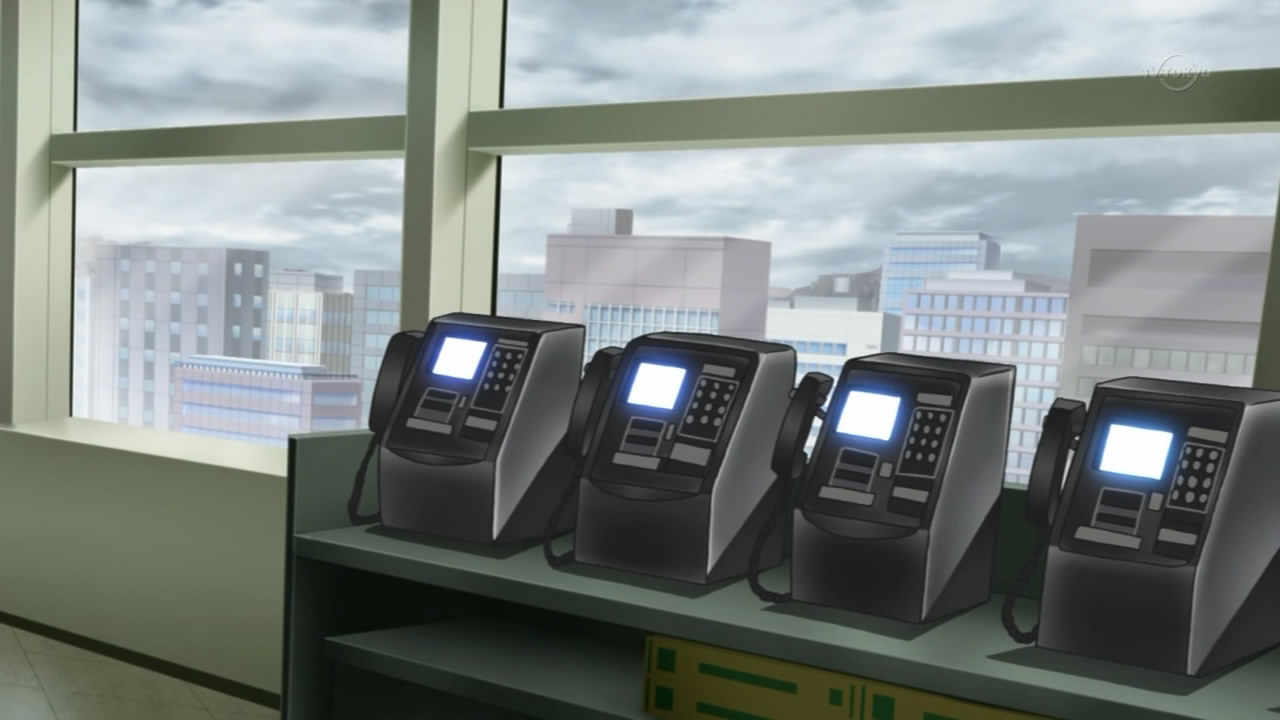
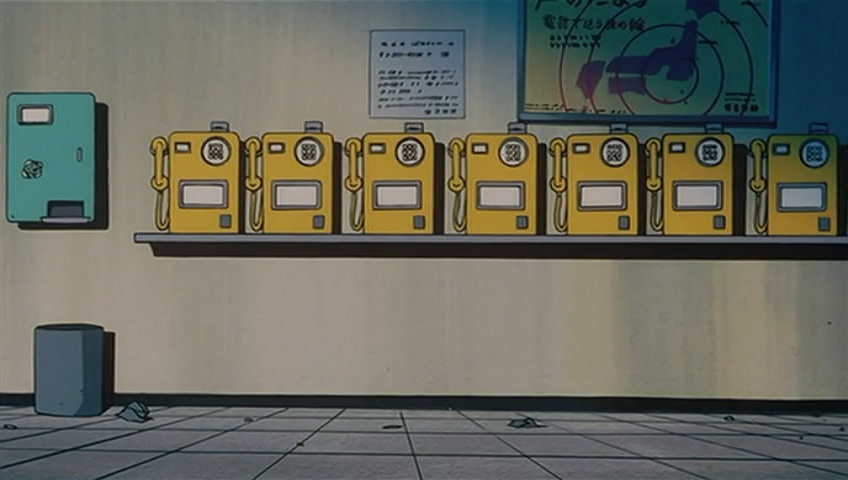
* A mysterious child sitting in the windowsill of an empty room who is kicking her feet and wearing a large sun hat that hides her face.
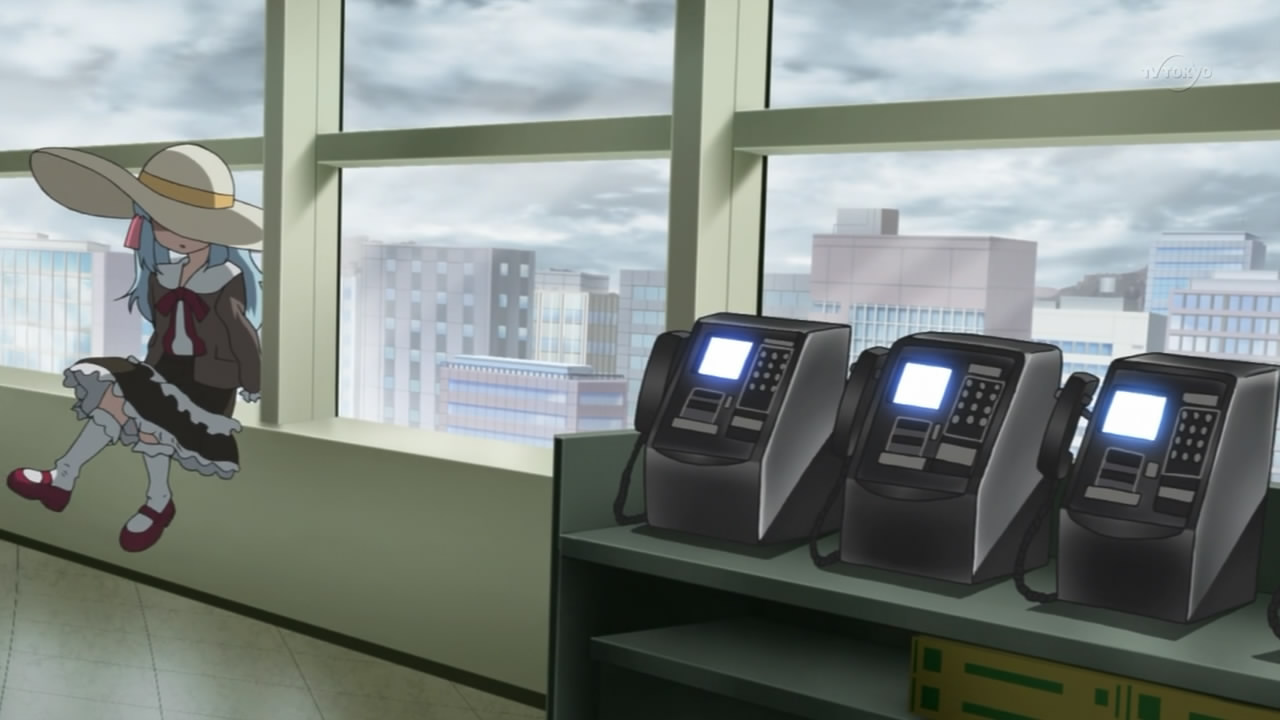

* A passing truck.
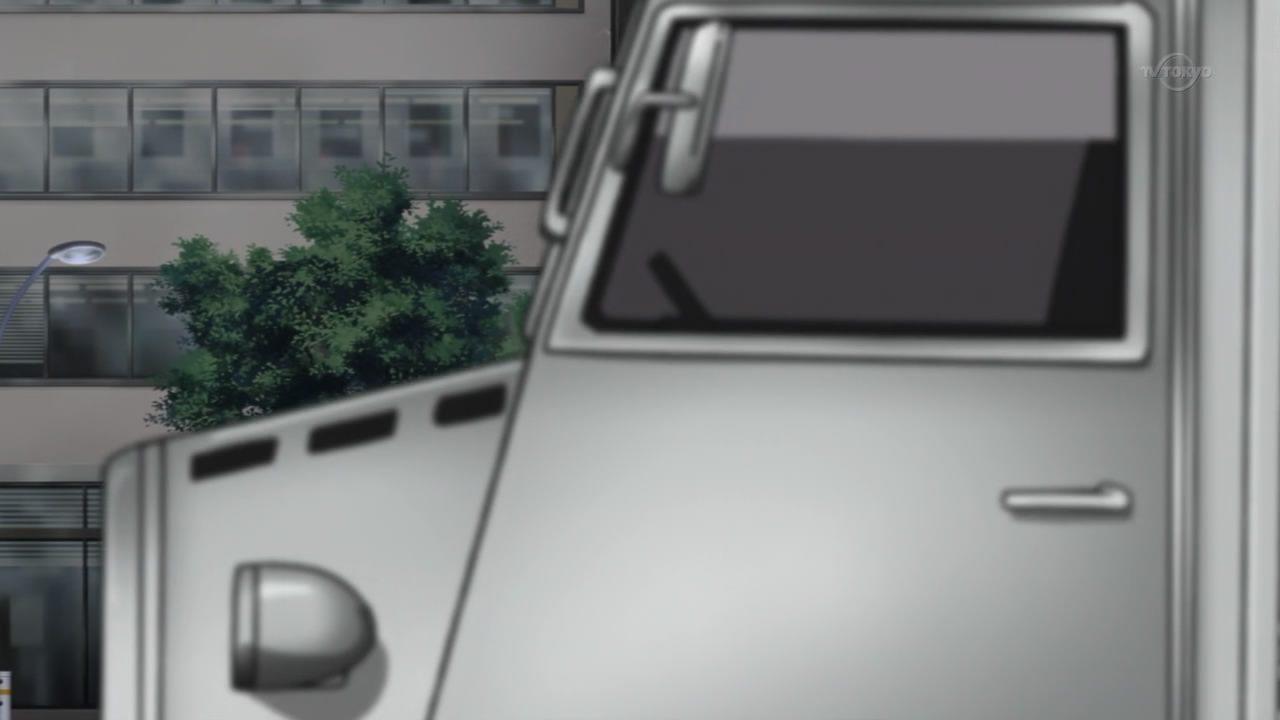
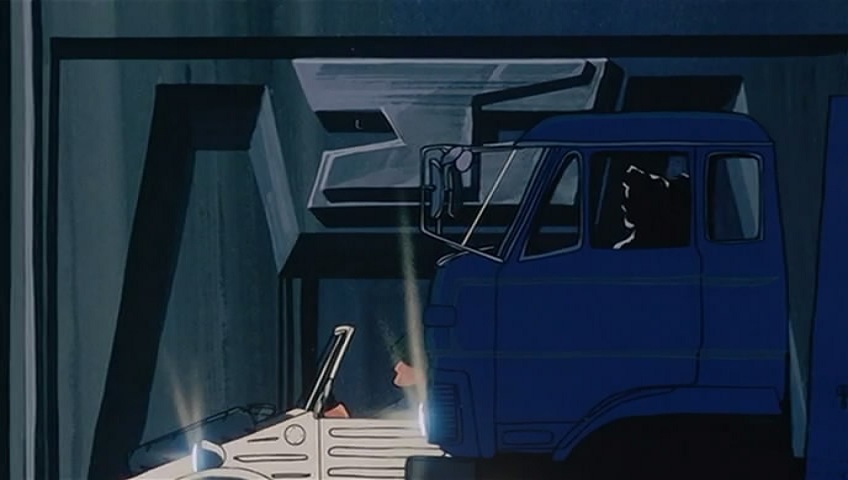
* In the movie there is a flower shop called "FLORIST".
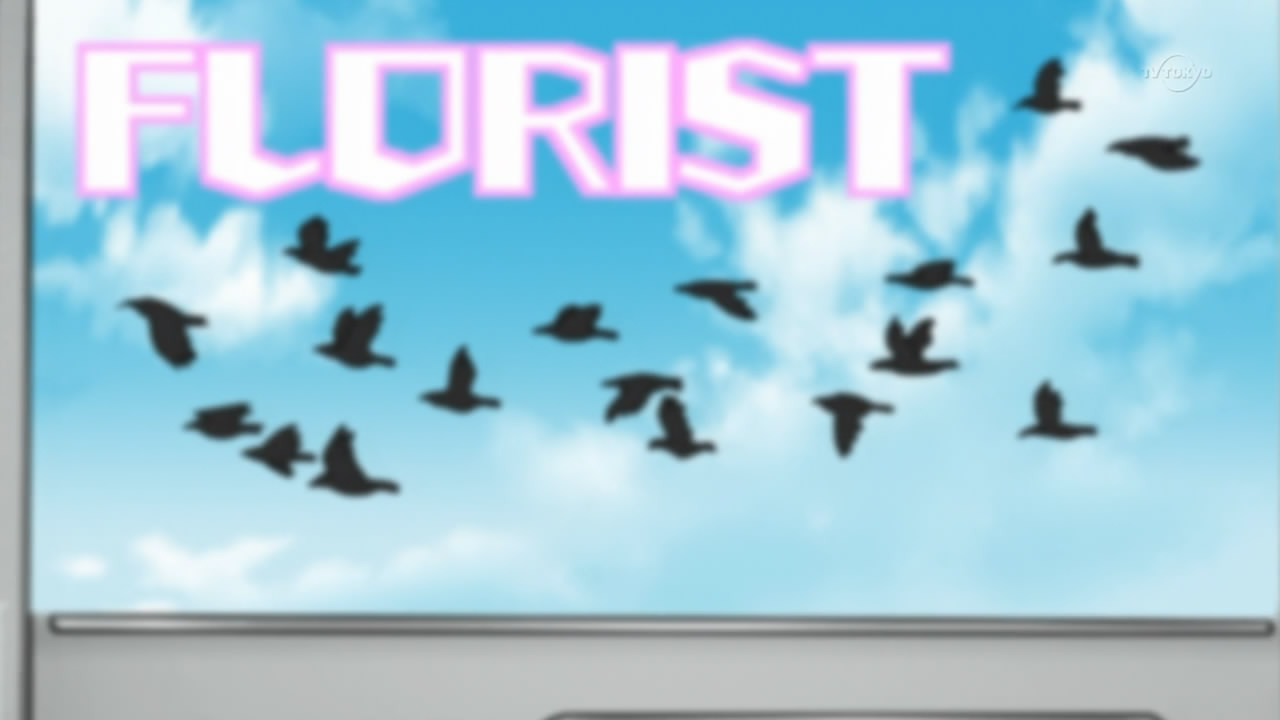
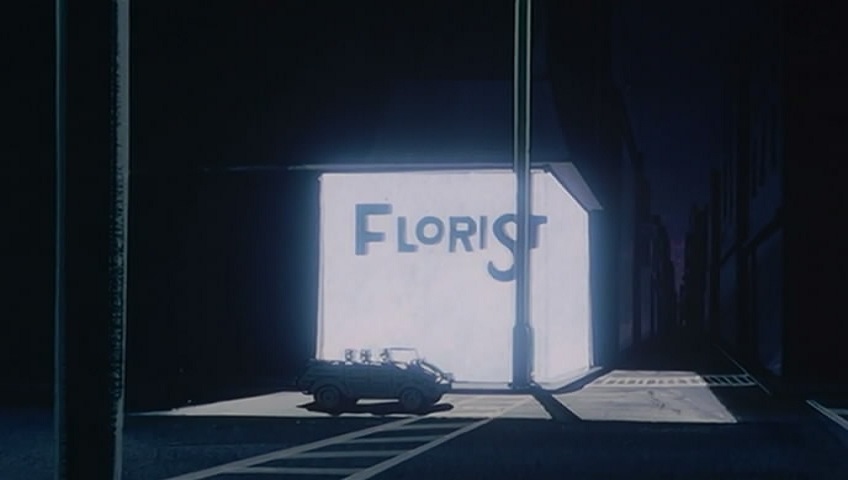
Furthermore, episode 12 of "Haiyore! Nyaruko-san" shares many similarities with "Beautiful Dreamer":
* For the first half of "Beautiful Dreamer", all of the characters are trapped in a time loop in which the same day and its events repeat endlessly. At the end of episode 11 of "Haiyore! Nyaruko-san", time has looped back to Sunday for Mahiro, and he is stuck in this dimension until he is freed by Nyaruko in episode 12.
* In the second half of "Beautiful Dreamer", the main characters are trapped in a dream world wherein everyone in the world mysteriously disappears except for the main characters.
* In the movie, when characters attempt to call other people no one answers.
* There is a mention of TV re-runs.
* The title of the movie does not show up until the end of the movie.
On a related note, a prior anime adaptation of "Haiyore! Nyaruko-san" aired from 2010 to 2011 and the title goes as follows:
「這いよる! ニャルアニ リメンバー・マイ・ラブ(クラフト先生)」This title is referencing "Urusei Yatsura 3 Rimenbaa Mai Rabu" (うる星やつら3 リメンバー・マイ・ラブ), "Urusei Yatsura 3: Remember My Love", a movie released in 1985.S2
"Haiyoru! Nyaruani Rimenbaa Mai Rabu (Kurafuto Sensei)"
"Crawling! Nyaruani: Remember My Love(craft)"
In addition, "Haiyore! Nyaruko-san" and "Urusei Yatsura" have many similarities:
* The main character of "Urusei Yatsura", Moboroshi Ataru (諸星あたる), is an average high school student.
* Lum (ラム) is a female alien who falls in love with Ataru and moves into his house.
* Lum constantly fawns over Ataru.
* Lum eventually enrolls as a student in Ataru's class at his school, much to his chagrin.
* Ataru and Lum are in Class 2-4.
* Ataru eventually develops feeling for Lum, but he generally denies them and acts coldly towards her. Only when he feels he is going to lose her does he show how much he values her.
* The series contains many puns and often references various things, such as movies, Japanese culture and mythology, and even itself. Here are the liner notes for the "Urusei Yatsura" TV series provided by AnimEigo for reference: http://www.animeigo.com/liner/out-print/urusei-yatsura-tv-series

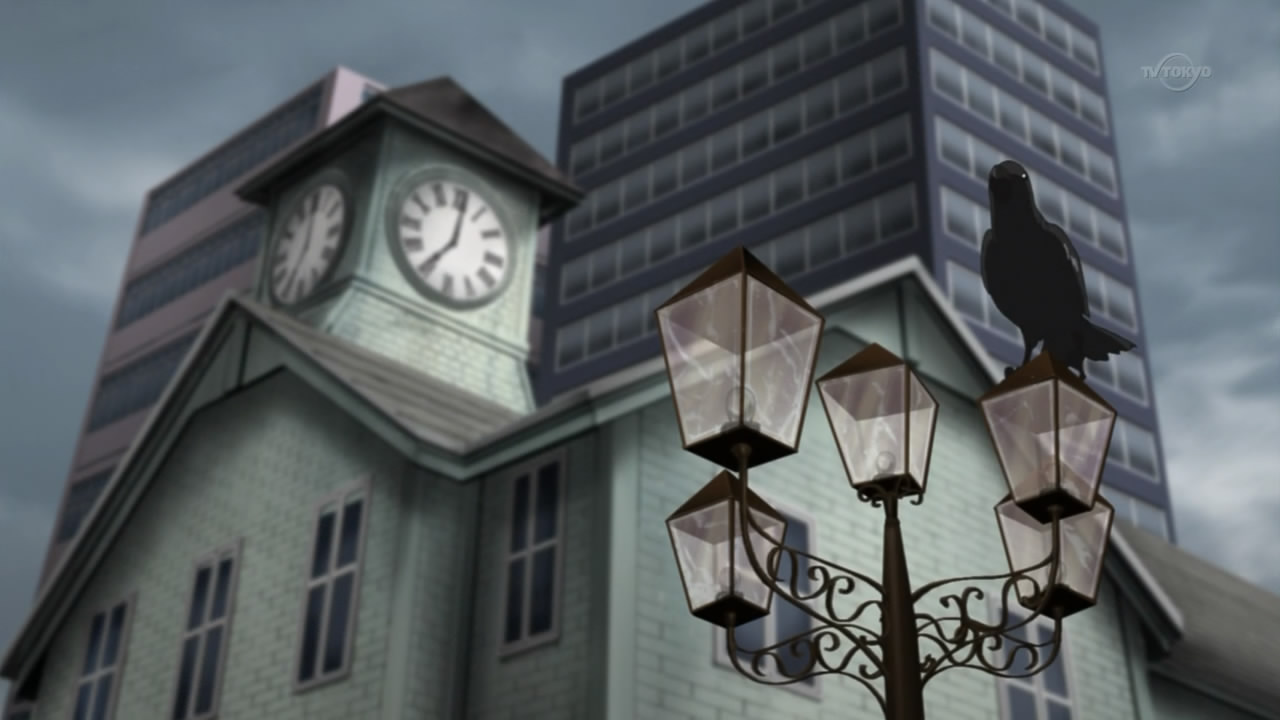
(3:36), (4:02)
The clock tower that appears here bears great resemblance to the Sapporo Clock Tower (札幌時計台), a famous clock tower in Japan.S1 Image for reference:
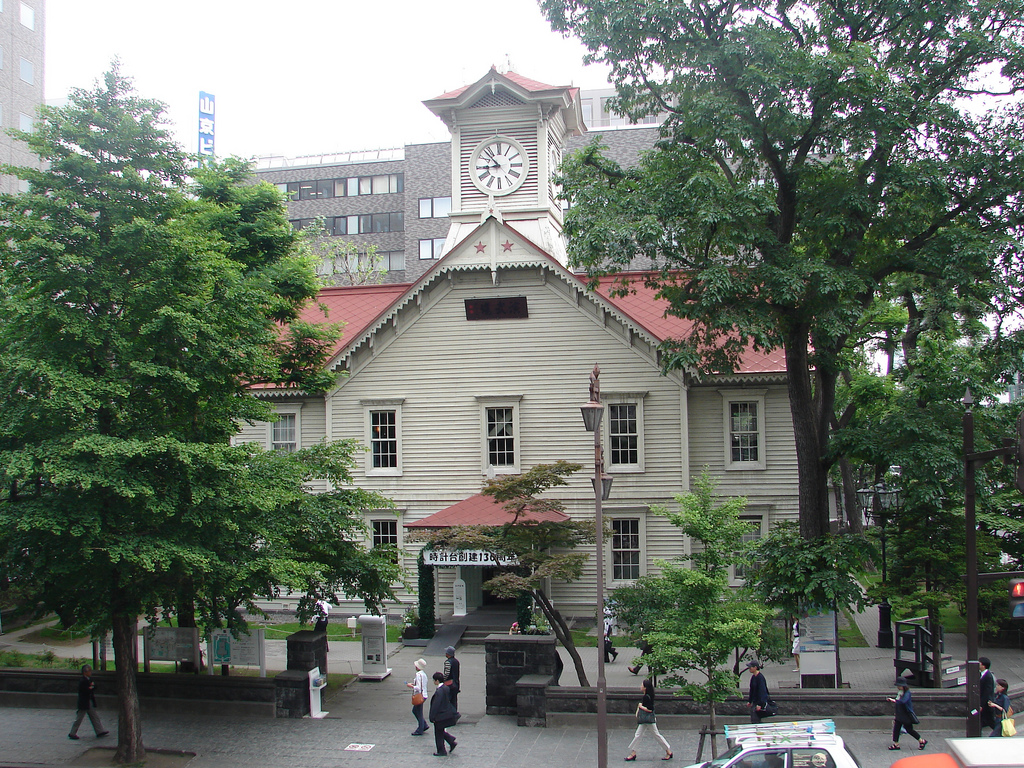
Source of image: http://blogs.dion.ne.jp/sasablog/archives/7434138.html
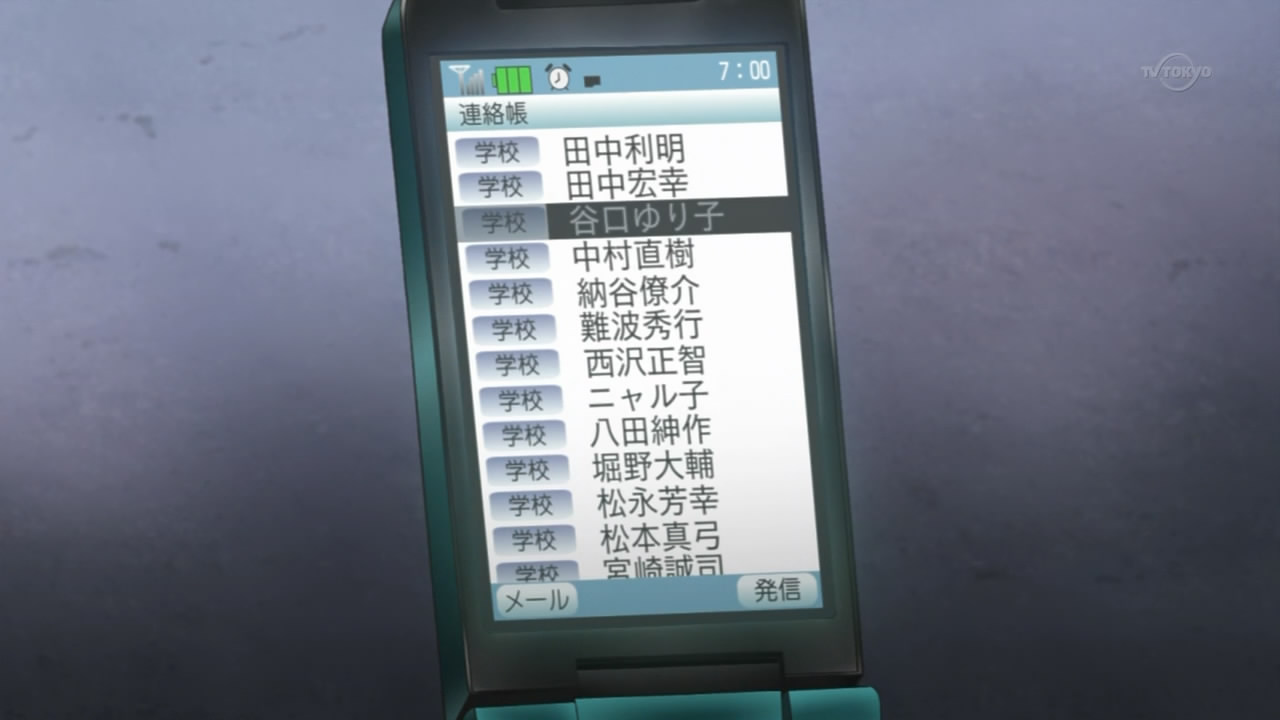
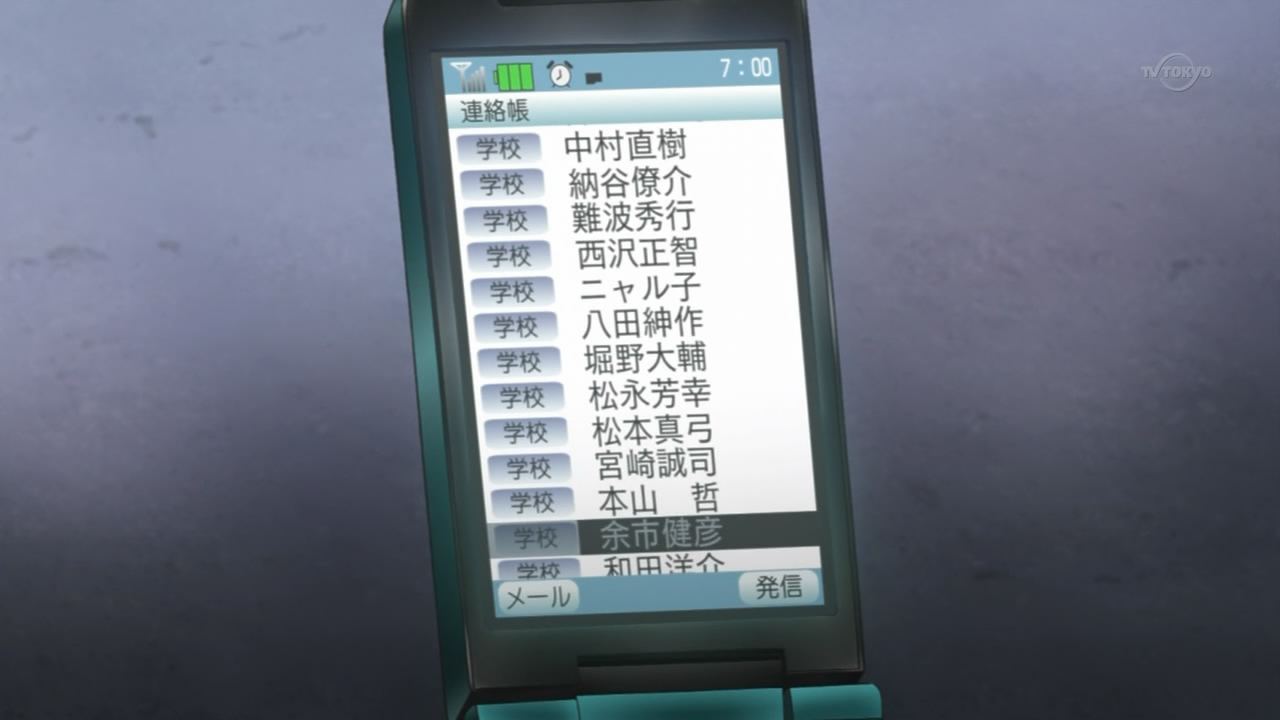
(4:18)
All of the names in Mahiro's cellphone address book except for Nyaruko and Yoichi are staff members of the "Haiyore! Nyaruko-san" anime production team.S2 They go as follows,
* 田中利明 - Tanaka Toshiaki, one of the producers
* 田中宏幸 - Tanaka Hiroyuki, one of the producers
* 谷口ゆり子 - Taniguchi Yuriko, in charge of color setting
* 中村直樹 - Nakamura Naoki, one of the people in charge of planning
* 納谷僚介 - Naya Ryousuke, planning assistant
* 難波秀行 - Nanba Hideyuki, planning assistant
* 西沢正智 - Nishizawa Matsumoto, animation producer
* ニャル子 - Nyaruko
* 八田紳作 - Hatta Shinsaku, one of the people in charge of planning
* 堀野大輔 - Horino Daisuke, director of photography
* 松永芳幸 - Matsunaga Yoshiyuki, planning assistant
* 松本真弓 - Matsumoto Mayumi, original work assistance
* 宮崎誠司 - Miyazaki Seiji, one of the producers
* 本山 哲 - Motoyama Satoshi, sound director
* 余市健彦 - Yoichi Takehiko
* 和田洋介 - Wada Yousuke, Associate producer
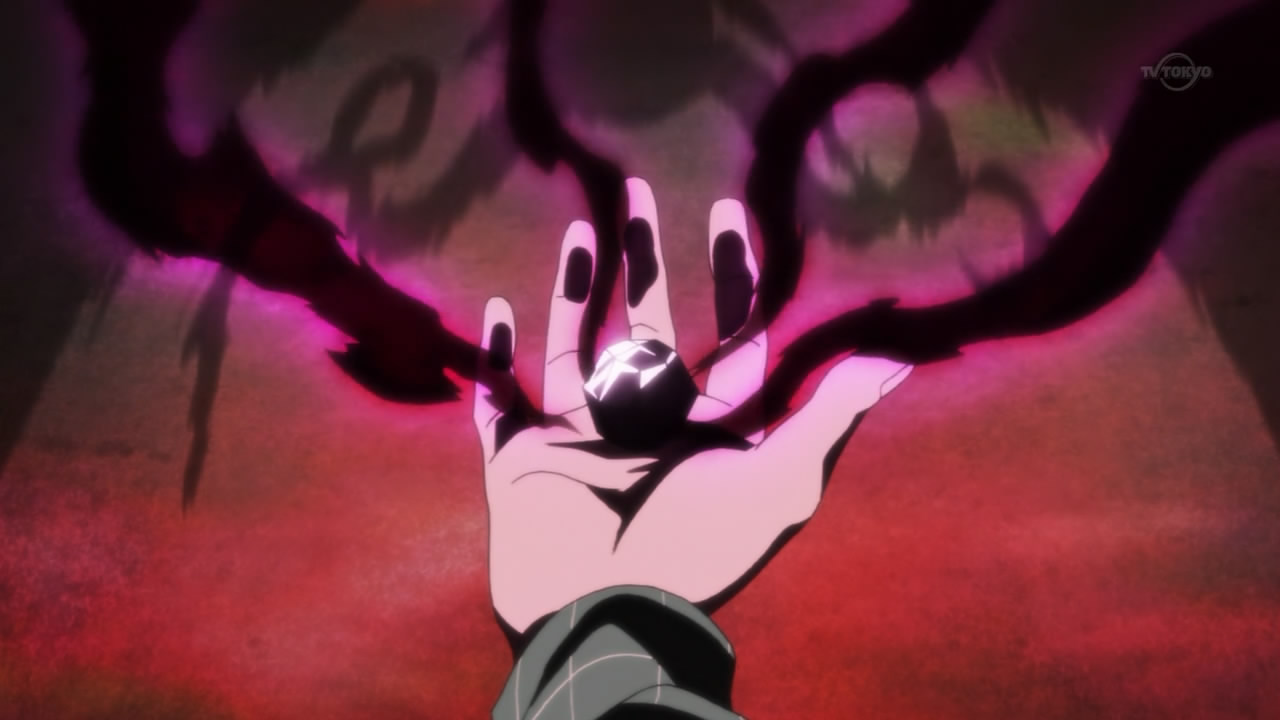
(9:43)
This is the crystal Nyaruko gave Mahiro in episode 2. It is based on the Shining Trapezohedron, a mystical crystal that serves as a window on all of space and time and first appeared in "The Haunter of the Dark", a story written by H. P. Lovecraft and first published in 1936. Like its original it is a "crazily angled stone", rather than a true Trapezohedron.
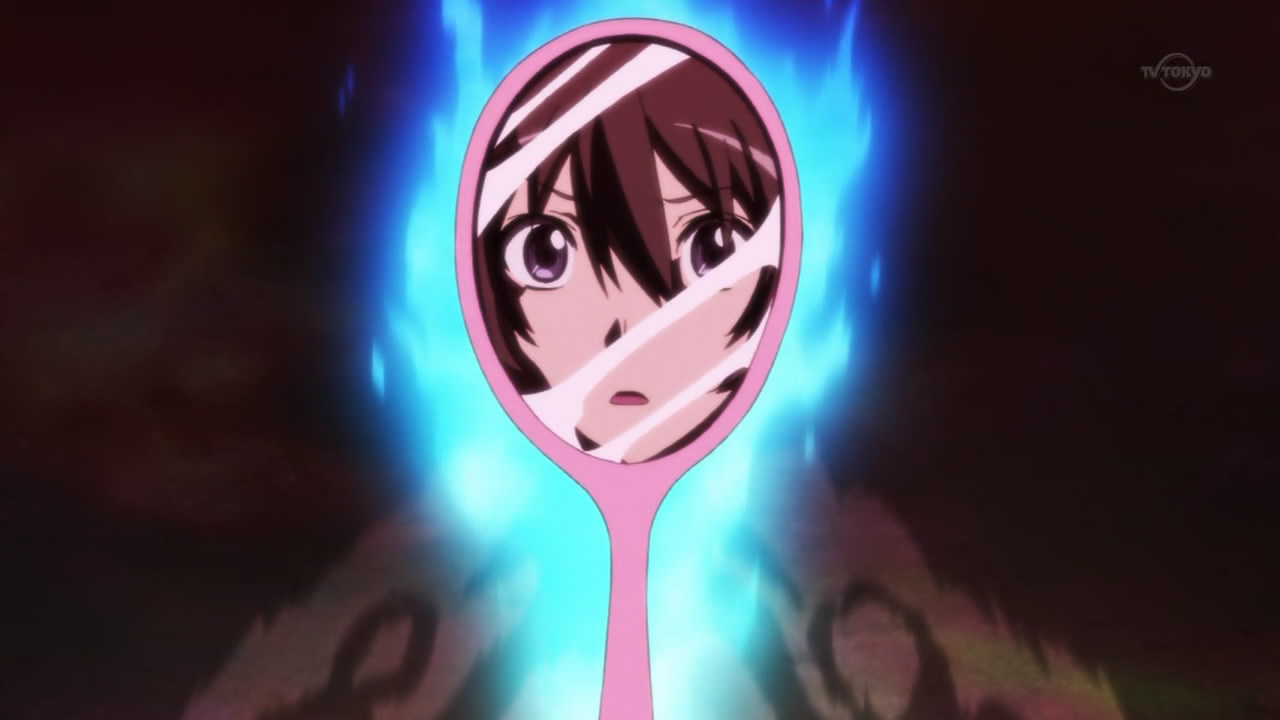

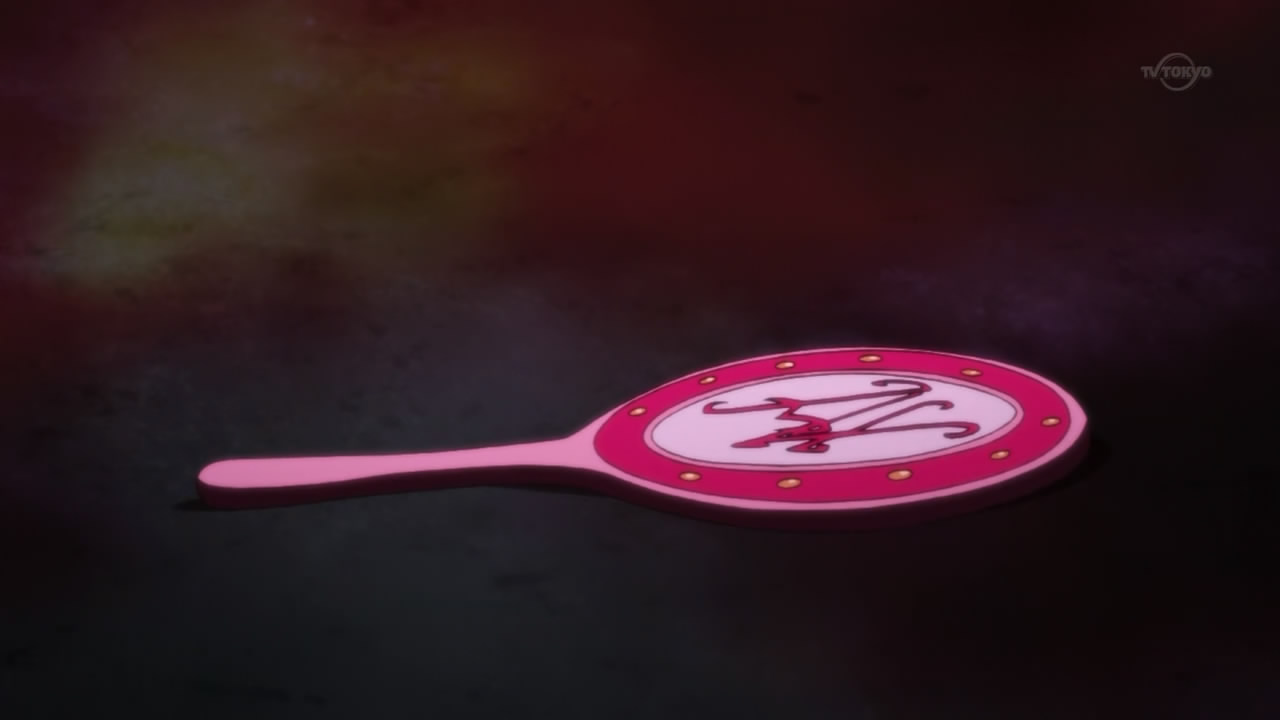
(9:44)
This is the Mirror of Nitocris that appeared in episode 11 at 8:43. Like before, there are two references here:
* The appearance of the mirror is based on that of a magical compact mirror used by Kagami Atsuko (加賀美あつ子), also known as Akko (アッコ), in "Himitsu no Akko-chan" (ひみつのアッコちゃん), "The Secrets of Akko-chan", an anime series that aired from 1988 to 1989. Images for reference:
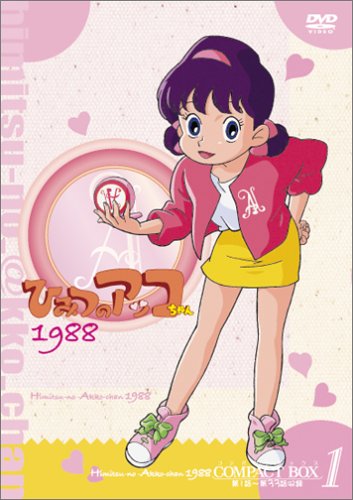

Image sources:
http://www.amazon.co.jp/dp/B0009V1D2O
http://ameblo.jp/12moya/entry-10154585050.html
* The Mirror of Nitocris is a magical mirror that appears in "The Mirror of Nitocris", a short story written by Brian Lumley and first published in 1971. In the story, the mirror is said to have belonged to Nitocris, an Egyptian Pharaoh, and the mirror is described as follows:
"... a 'gateway' to unknown spheres and worlds of hellish horror in the shape of a mirror."In addition, within the mirror dwells a blob like entity that can emerge from the face of the mirror at midnight. In the story, it is described as follows:
"A thing, a bubbling blasphemous shape from lunacy's most hellish nightmare, was squeezing its flabby pulp out through the frame of the mirror into my room—and it wore a face where no face ever should have been."When the entity emerges, it will attempt to drag anyone nearby into the mirror.
(11:36)
The lines at this time are as follows:
「ニャル子さーん!」This is referencing lines at the beginning of almost every episode of "YuruYuri" (ゆるゆり), an anime series that aired in 2011.S1 The original lines, with variation, go as follows:
「はーい!」
"Nyaruko-saan!"
"Haai!"
"Nyaruko!"
"Yes!"
「アッカリーン!」On a related note, the person who voices Ghutatan, Mikami Shiori (三上枝織), also voices Akaza Akari (赤座あかり), the main character of "YuruYuri". In addition, the person who voices Tamao, Ootsubo Yuka (大坪由佳), also voices Toshinou Kyouko (歳納京子), another main character in "YuruYuri".S1
「はーい!ゆるゆり、はっじまるよぉ~」
"Akkariin!"
"Haai!" YuruYuri, hajjimaruyoo~"
"Akarin!"
"Yes! YuruYuri is starting!"
"What?" (11:48)
The Japanese line is "Nan... da to...?" (なん・・・だと・・・?). Like in episode 3 at 17:07, this is likely referencing "BLEACH" (ブリーチ), a manga series written by Kubo Tite (久保帯人) and published from 2001 and is currently ongoing. In the series, this phrase and variations of it are often used.S2 Image for reference:
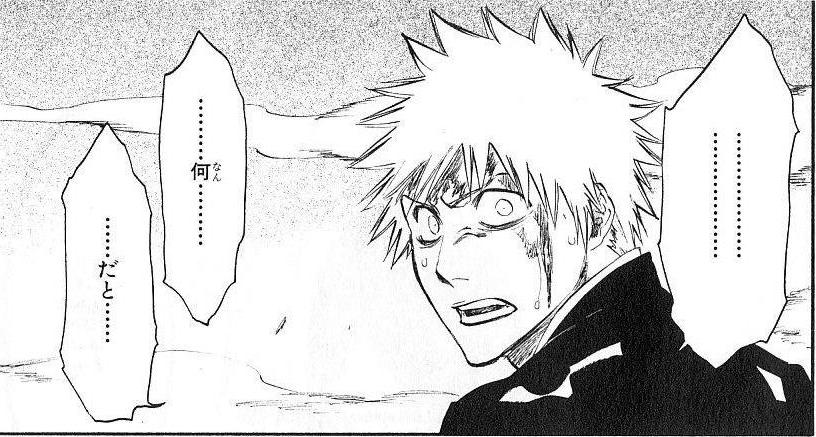
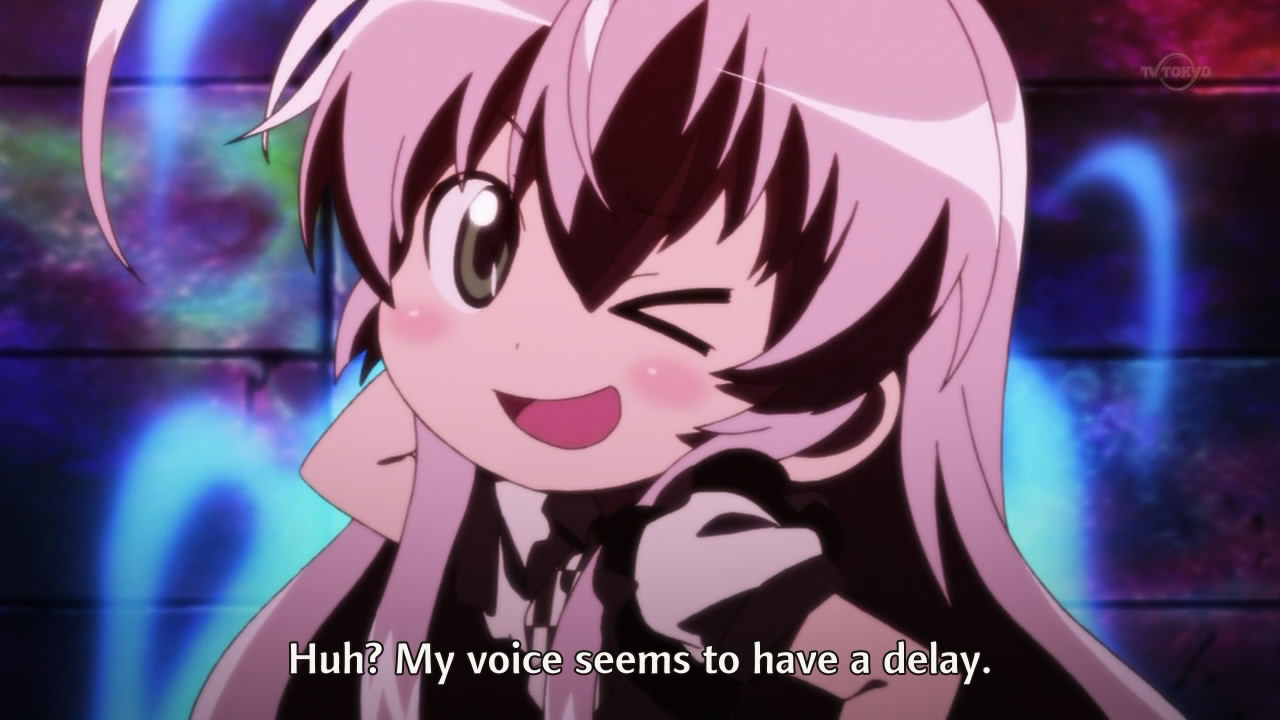
"Huh? My voice seems to have a delay." (11:55)
The Japanese line is "Are? Koe ga, okurete kikoete kuru yo" (あれ?声が、遅れて聞こえてくるよ). This is referencing a famous Japanese ventriloquist known as Ikkokudou (いっこく堂). One of his special skills is mouthing words while actually saying the words he is mouthing with a slight delay.S1 Video for reference: https://youtu.be/nEW7nYpDleo?t=2m38s
"I come whenever you call, duh duh duh dun!" (12:05)
The Japanese line is "Yobarete, tobidete, ja ja ja jaan!" (呼ばれて、飛び出て、ジャジャジャジャーン!). This is referencing "Hakushon Daimaou" (ハクション大魔王), "Hakushon The Genie", an anime series that aired from 1969 to 1970. When Hakushon Daimaou, a genie and the main character of the show, appears from his pot, he will say this exact line.S1
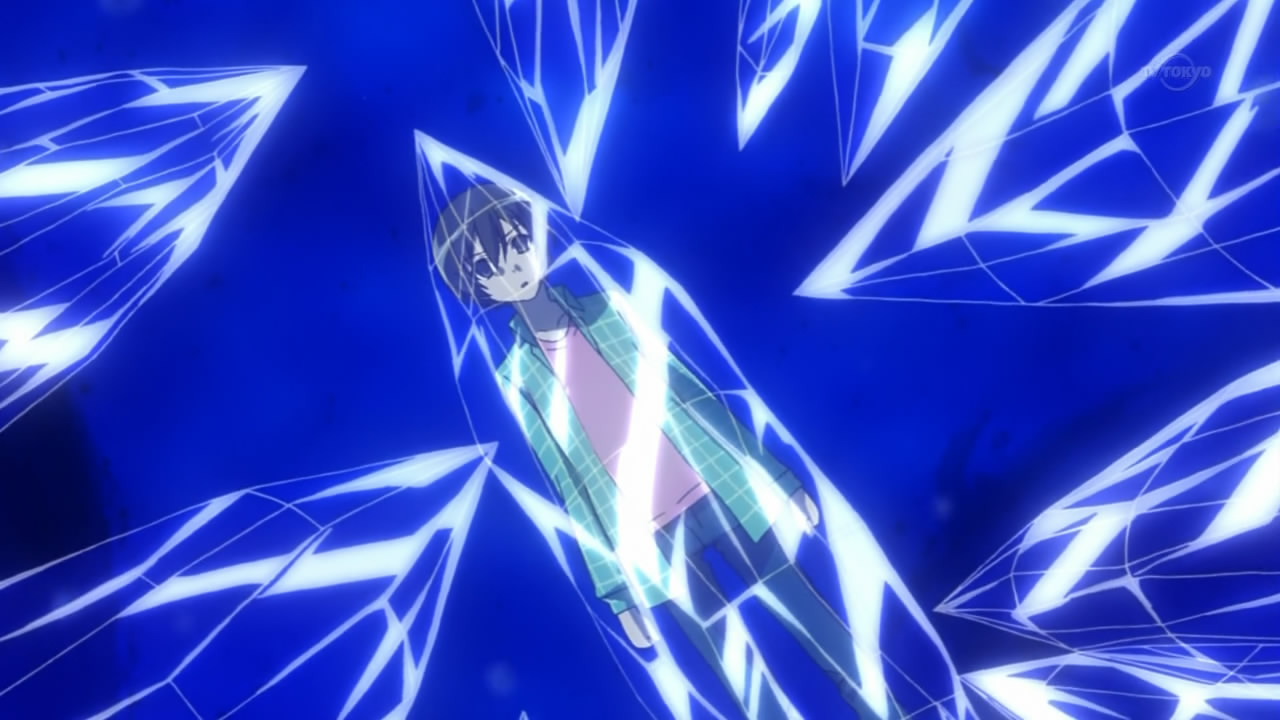
(12:30)
"This is light!" (12:37)
(12:41 - 12:47)
The Japanese line is "Kore ga, hikari desu!" (これが、光です!). Mahiro's entrapment in a crystal, Nyaruko's line, and the light that revives Mahiro are all referencing episode 52 of "Ultraman Tiga". In the preceding episode, Ultraman Tiga is petrified by Gatanozoa, a monster based on Ghatanothoa from the Cthulhu Mythos. As a result, Ultraman's human form, Madoka Daigo, is sealed within a crystal. However, the hopes and prayers of the children all over the world who believe in Ultraman manifest in beams of light and collect within the petrified Ultraman. Upon seeing the light, Daigo exclaims, "Kore ga, Kore ga hikari nan da!" (これが、これが光なんだ!), which translates to "This is, this is the light!". Thanks to everyone's support, Daigo is able to break free from his prison and Ultraman is revived.S1 Images for reference:

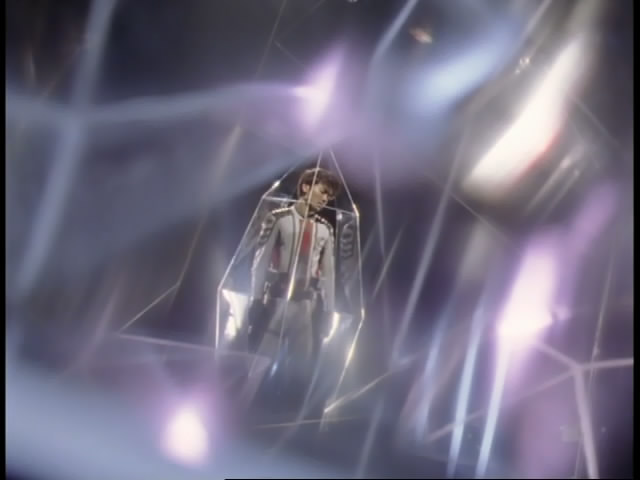

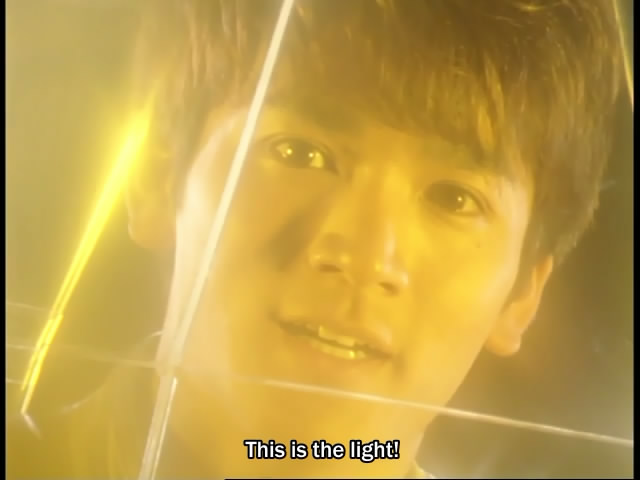
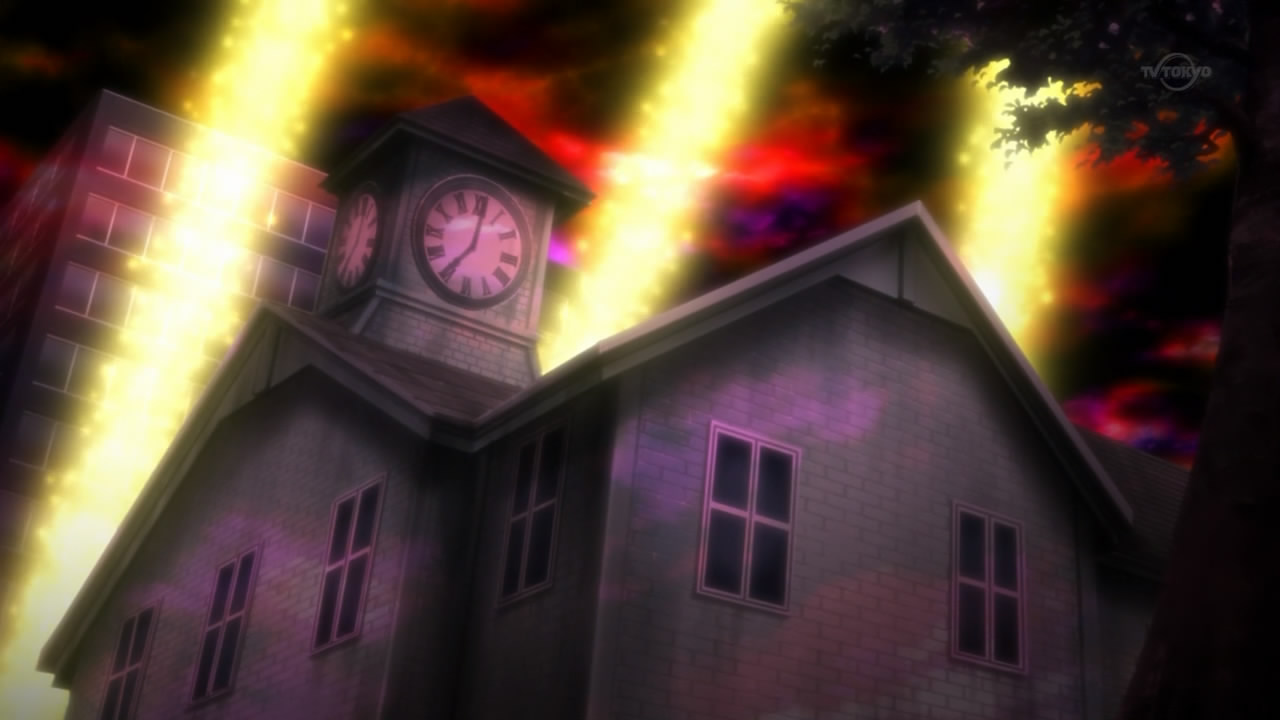
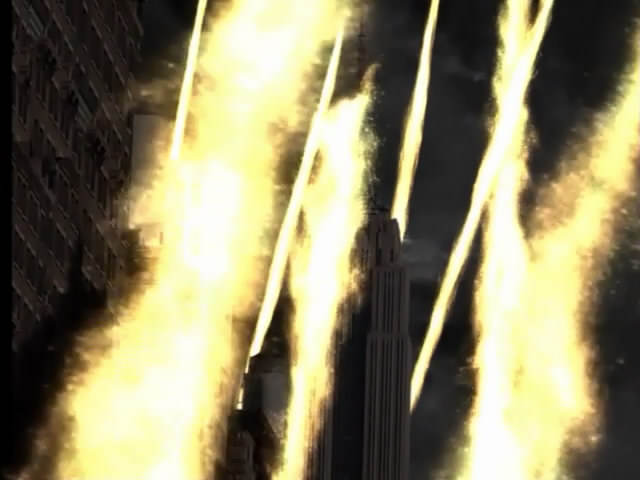
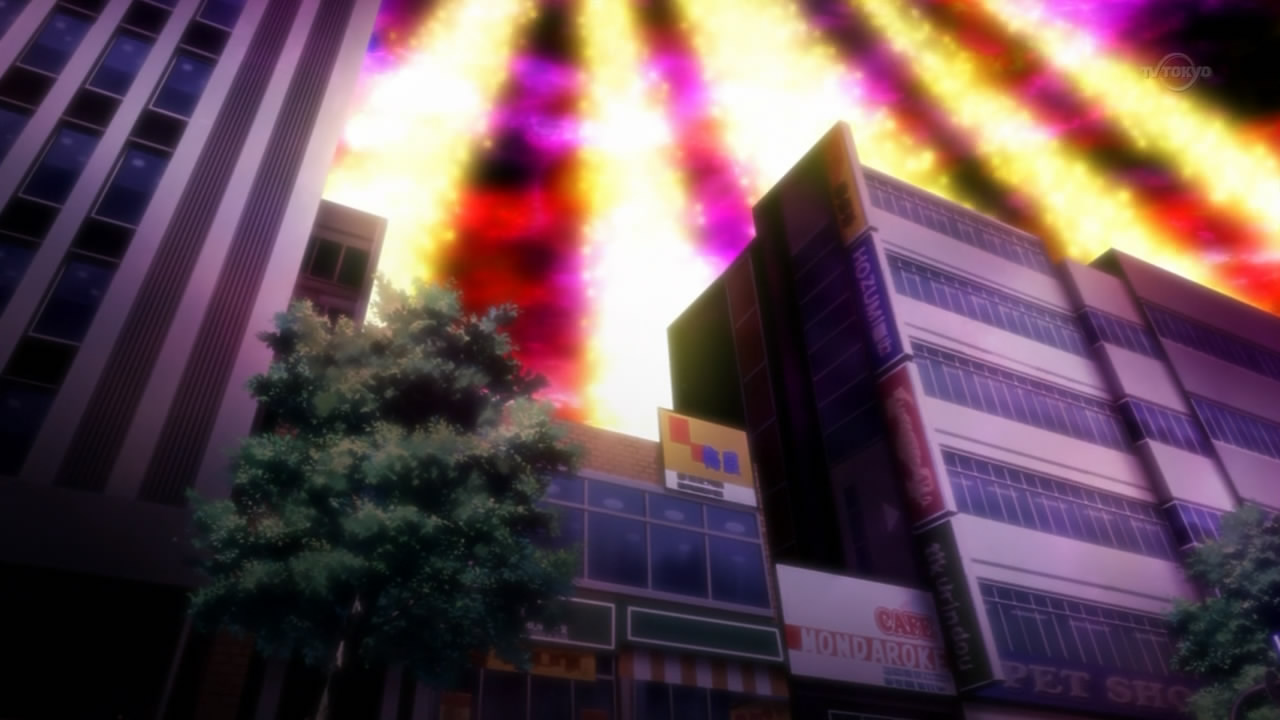
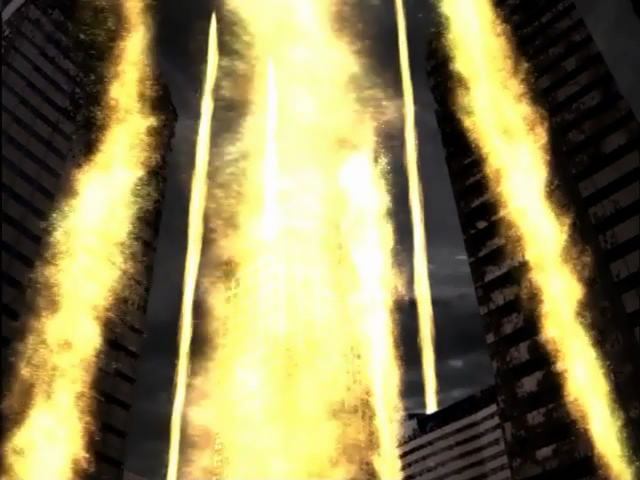
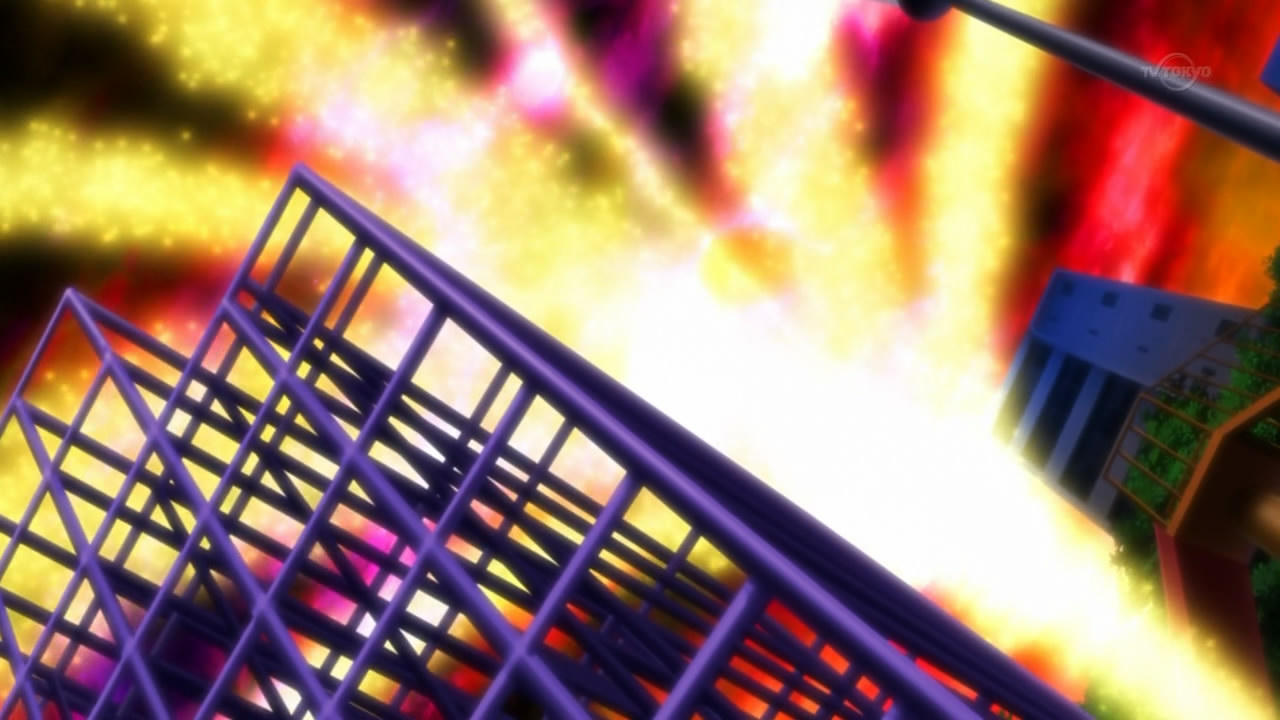
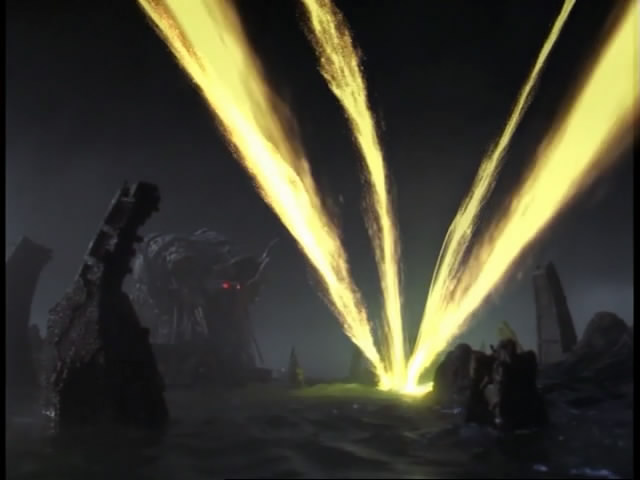
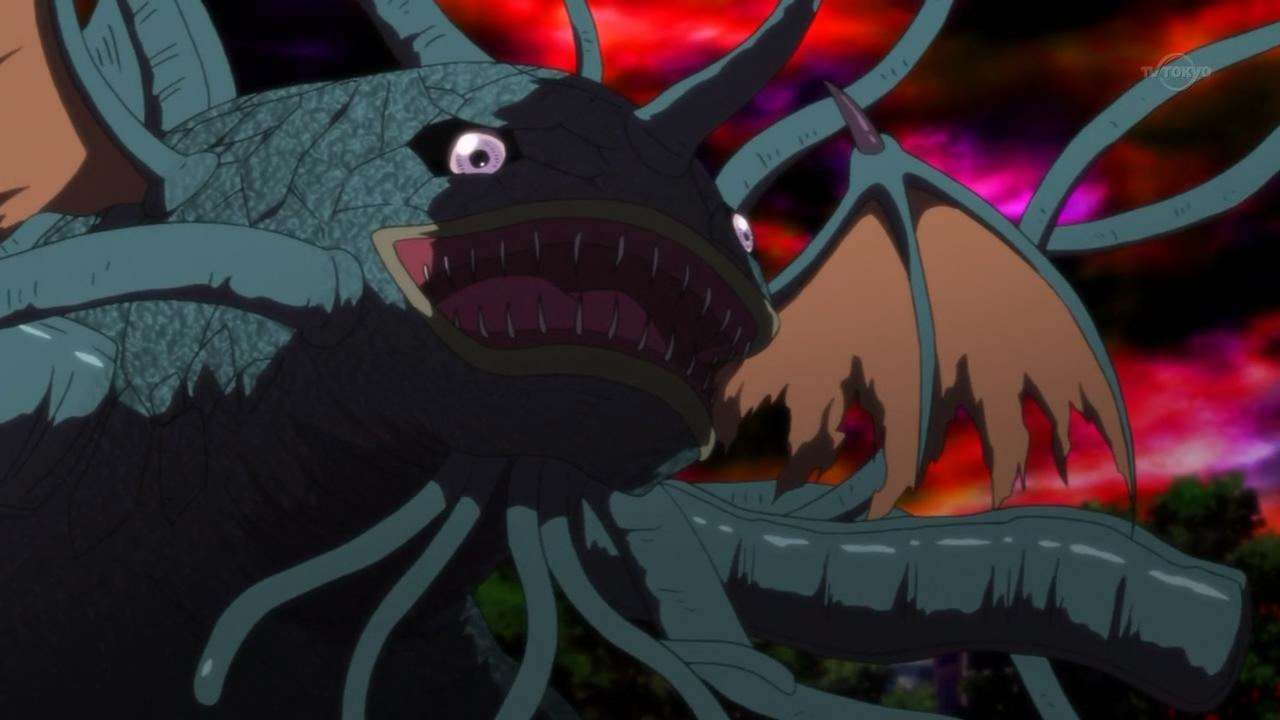
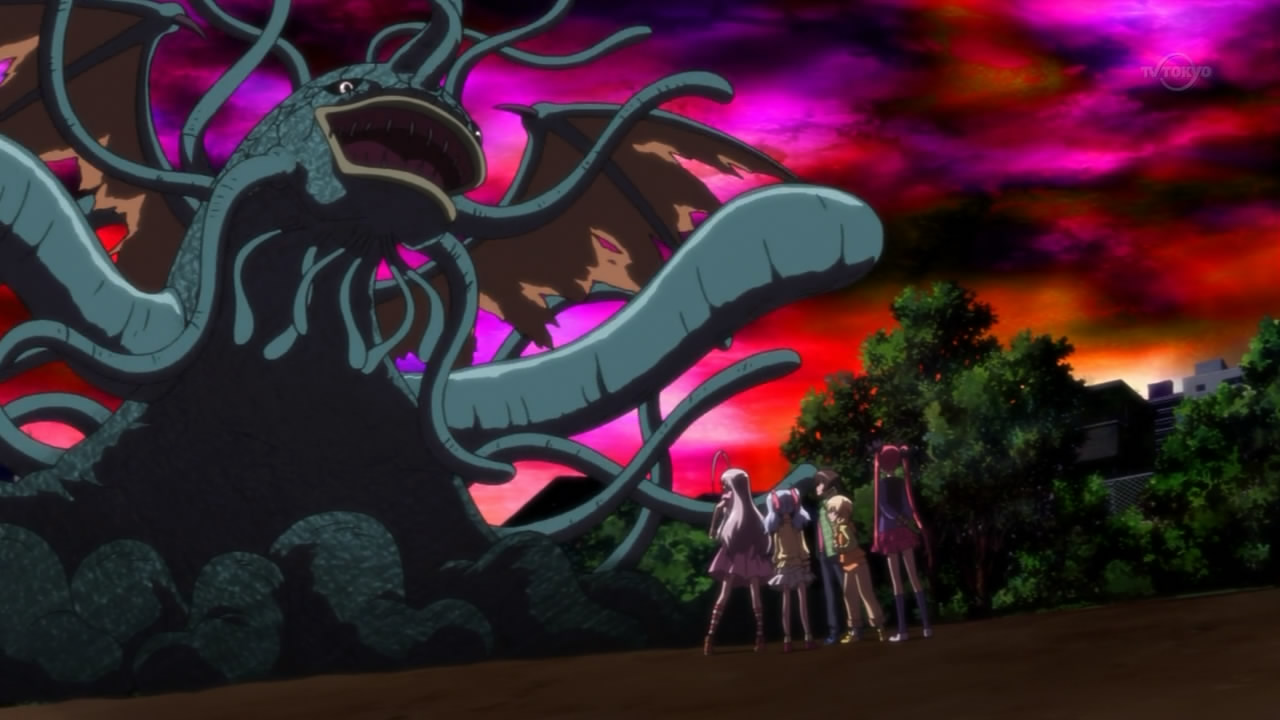
(13:13), (13:36)
The transformed appearance of Roy Fogger the Lloigor appears to be based on a depiction of Lloigor on the cover of the Japanese publication of "The Return of the Lloigor", a short story written by Colin Wilson and first published in 1969.S1 It was then published in Japanese in 1977 and titled "Roigaa no Fukkatsu" (ロイガーの復活), which translates to "The Resurrection of the Lloigor". Cover image for reference:
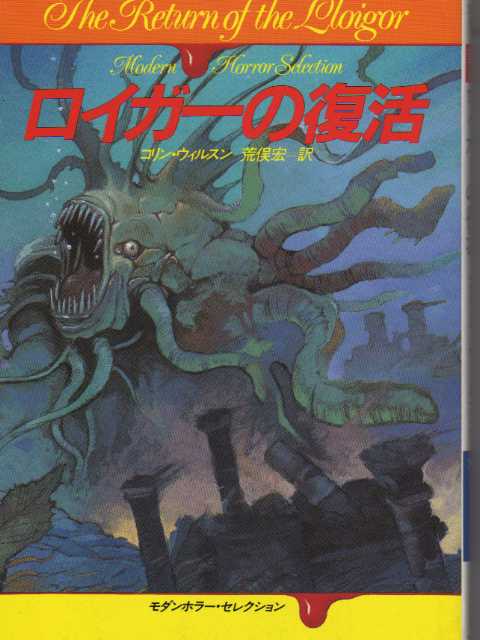
Source of image: http://bookshelf.co.jp/product_info.php/products_id/58484
"You think unpetrifying him means you've won?" (13:14)
As mentioned earlier in the episode, Ghutatan was the one who cast the spell cast upon Mahiro. This is referencing how in the Cthulhu Mythos, anyone who gazes upon the monstrous form of Ghatanothoa becomes petrified.S1 In "Out of the Aeons", a short story written by H. P. Lovecraft and Hazel Heald and first published in 1935, the following is stated:
"For no living thing could behold Ghatanothoa, or even a perfect graven image of Ghatanothoa, however small, without suffering a change more horrible than death itself. Sight of the god, or its image, as all the legends of the Yuggoth-spawn agreed, meant paralysis and petrifaction of a singularly shocking sort, in which the victim was turned to stone and leather on the outside, while the brain within remained perpetually alive—horribly fixed and prisoned through the ages, and maddeningly conscious of the passage of interminable epochs of helpless inaction till chance and time might complete the decay of the petrified shell and leave it exposed to die."
(14:03 - 14:08)
The lines at this time go as follows:
「私はエロゲが大好きだ!鍵系が好きだ!木の葉系が好きだ!巫女モノが好きだ!メイドモノが好きだ!ツンデレが好きだ!イチャラブが好きだ!ありとあらゆるエロゲが大好きだ!」This is referencing a speech said by the Major (少佐) in chapter 27 of volume 4 of Hellsing (ヘルシング), a manga series written by Hirano Kouta (平野耕太) and published from 1997 to 2009.S1 Part of the speech go as follows:
"Watashi ha eroge ga dai suki da! Kagi kei ga suki da! Konoha kei ga suki da! Miko mono ga suki da! Meido mono ga suki da! Tsundere ga suki da! Icha Rabu ga suki da! Ari to arayuru eroge ga dai suki da!"
"I love adult games. I love Key ones. I love Leaf ones. I love priestess ones. I love maid ones. I love tsundere ones. I love flirty-love ones. I love all kinds of adult games!"
「諸君、私は戦争が好きだ。諸君、私は戦争が好きだ。諸君、私は戦争が大好きだ。」Images for reference:
「殲滅戦が好きだ。電撃戦が好きだ。打撃戦が好きだ。防衛戦が好きだ。包囲戦が好きだ。突破戦が好きだ。退却戦が好きだ。掃討戦が好きだ。撤退戦が好きだ。」
「平原で、街道で、塹壕で、草原で、凍土で、砂漠で、海上で、空中で、泥中で、湿原で」
「この地上で行われるありとあらゆる戦争行動が大好きだ」
"Shokun, watashi ha sensou ga suki da. "Shokun, watashi ha sensou ga suki da. Shokun, watashi ha sensou ga dai suki da."
"Senmetsu sen ga suki da. Dengeki sen ga suki da. Dageki sen ga suki da. Bouei sen ga suki da. Houi sen ga suki da. Toppa sen ga suki da. Taikyaku sen ga suki da. Soutou sen ga suki da. Tettai sen ga suki da"
"Heigen de, kaidou de, zangou de, sougen de, toudo de, sabaku de, kaijou de, kuuchuu de, deichuu de, shitsugen de"
"Kono chijyou de okonawareru ari to arayuru sensou koudou ga dai suki da"
"Gentlemen, I like war. Gentlemen, I like war. Gentlemen, I love war."
"I like wars of extermination. I like blitzkreig. I like slugfests. I like defensive wars. I like siege warfare. I like smashing through enemy lines. I like falling back. I like mopping-up operations. I like withdrawals."
"Wars on prairies, in streets, in trenches, on grasslands, on tundra, in deserts, on the sea, in the air, in the mud, in swamps."
"I love every possible act of warfare that occurs on the face of the Earth."

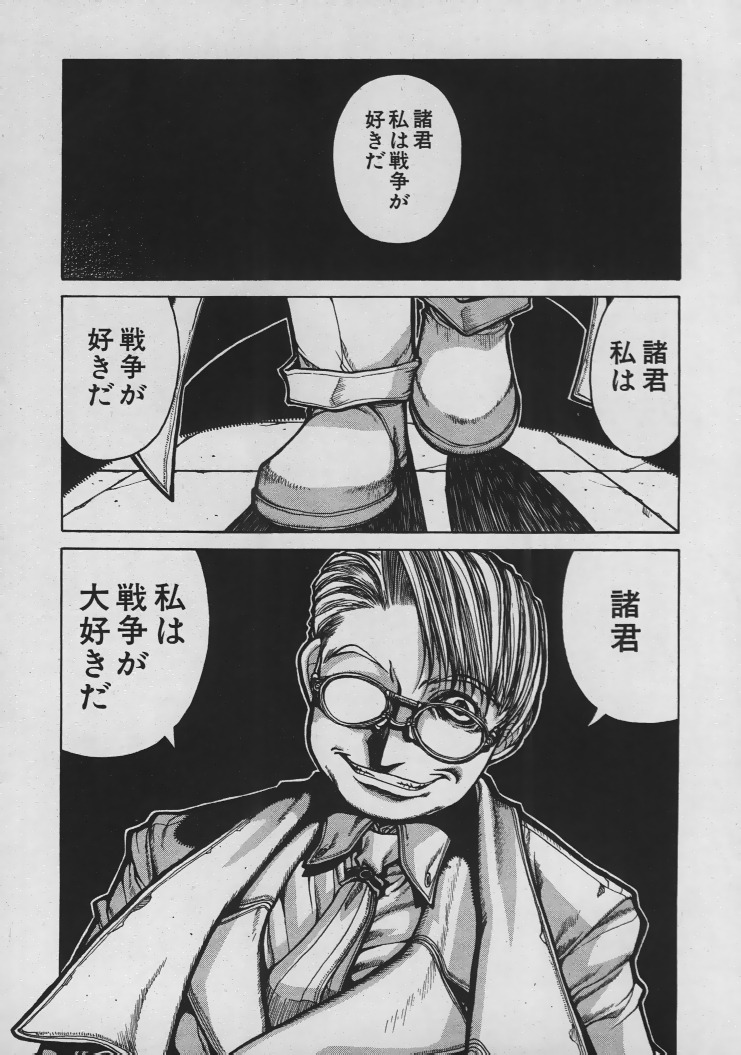
He also makes this speech in episode 4 of an anime adaptation of this series that was released from 2006 to 2012. Video for reference: http://www.nicovideo.jp/watch/sm2712545
On a related note, the voice actor who voices Roy, Nakata Jouji (中田譲治), also voices Alucard, the main character of this series.

"I love Key ones." (14:06)
The Japanese line is "Kagi kei ga dai suki da!" (鍵系が好きだ!). "Kagi" (鍵) means "key" in Japanese. This is referencing Key (キー), a Japanese visual novel studio. Nyaruko's appearance here is referencing Noumi Kudryavka (能美クドリャフカ) from "Kud Wafter" (クドわふたー), a visual novel released by Key (キー) in 2010. Image for reference:
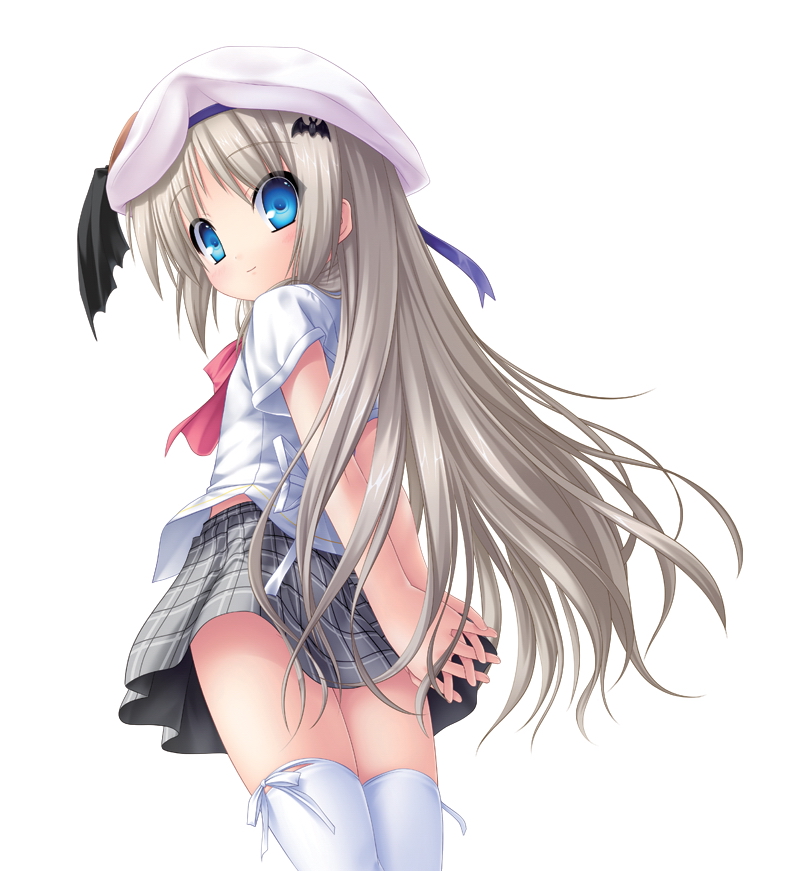

"I love Leaf ones." (14:07)
The Japanese line is "Konoha kei ga suki da!" (木の葉系が好きだ!). "Konoha" (木の葉) means "tree leaf" in Japanese. This is referencing Leaf (リーフ), a Japanese visual novel studio. Nyaruko's appearance here is referencing Amanatsu Purin (甘夏ぷりん) from "Hoshi no Ouji-kun Le prince de l'Etoile" (星の王子くん Le prince de l'Etoile), "The Prince from the Stars", a visual novel released by Leaf (リーフ) in 2011.S2 Image for reference:
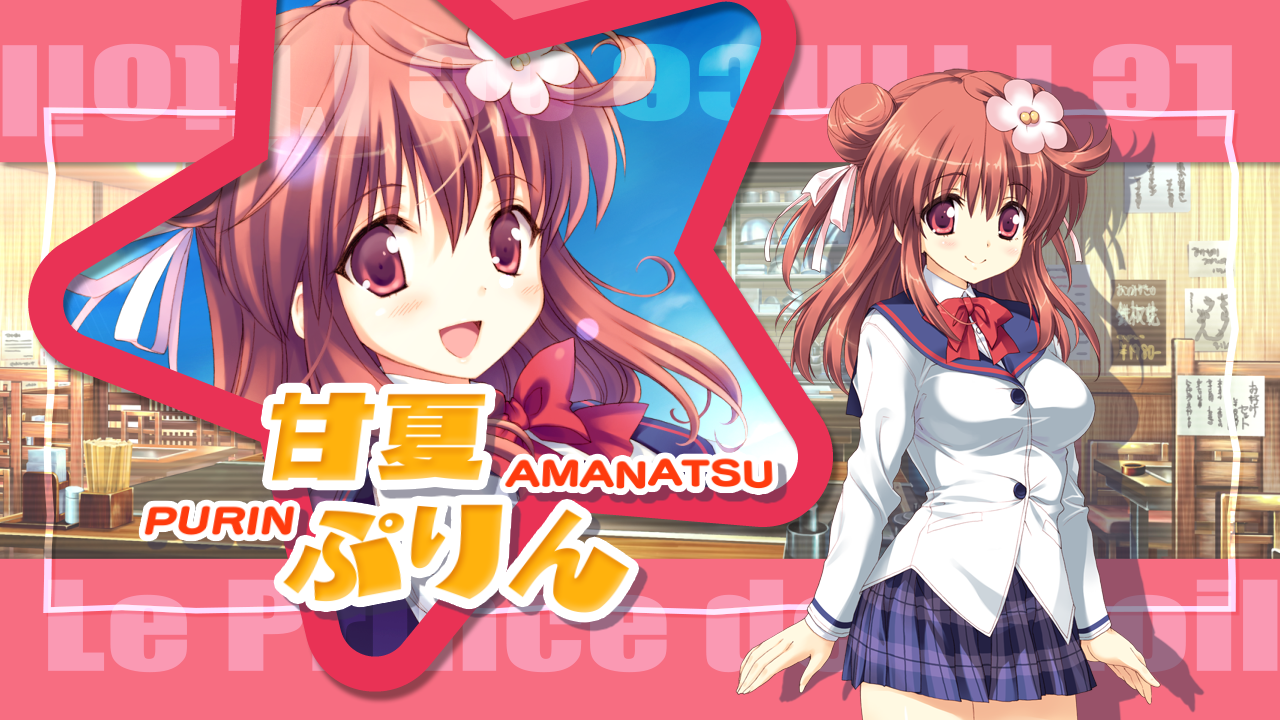
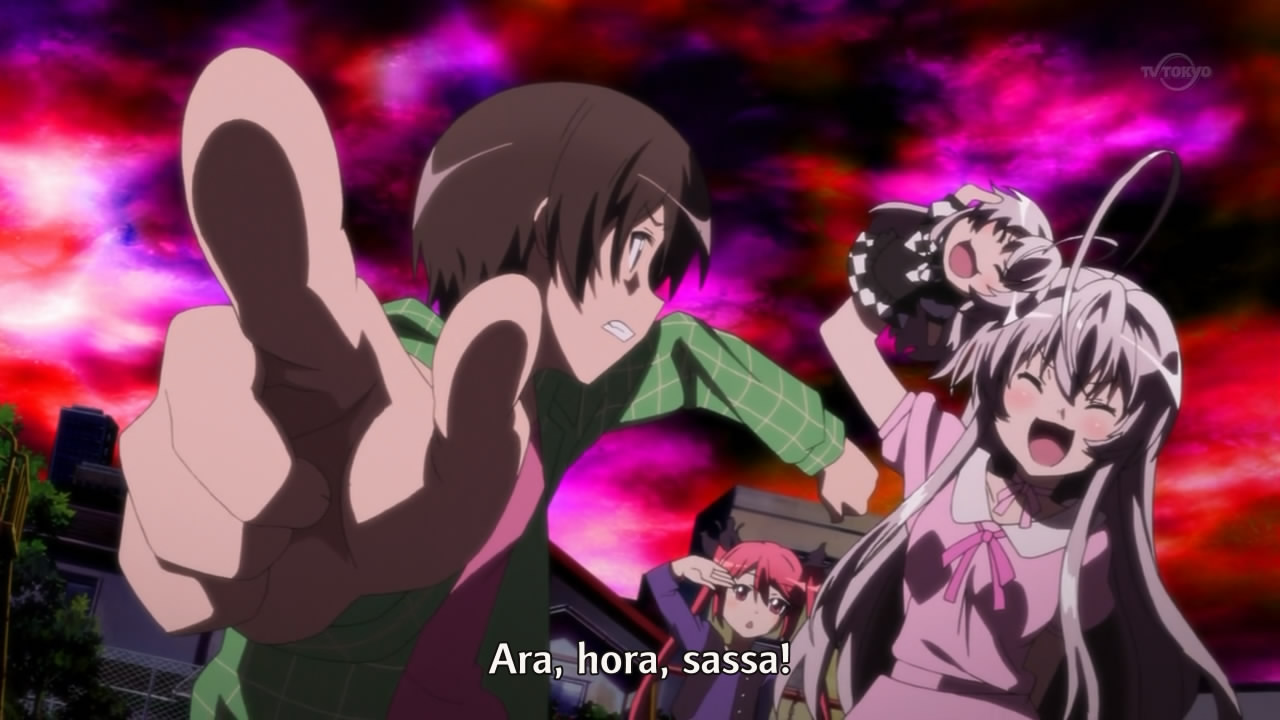
"Ara, hora, sassa!" (15:09)
The Japanese line is "Ara hora sassaa!" (アラホラサッサー!), which essentially means "Roger that!". This is the catchphrase of the Dorombo Gang (ドロンボー一味) in "Yatterman" (ヤッターマン), an anime series that aired from 1977 to 1979. This catch phrase is also used in the remake of "Yatterman" that aired from 2008 to 2009. Nyaruko's saluting pose is also mimicking the Dorombo Gang when they say this line.S1 Images for reference (1977 on the left, 2008 on the right):
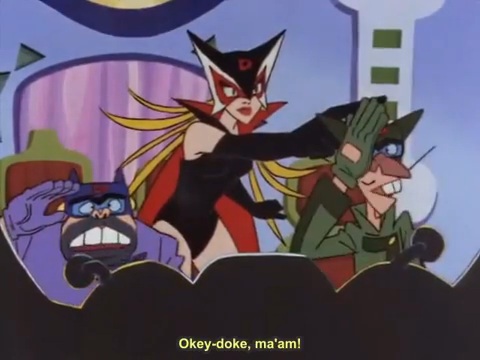
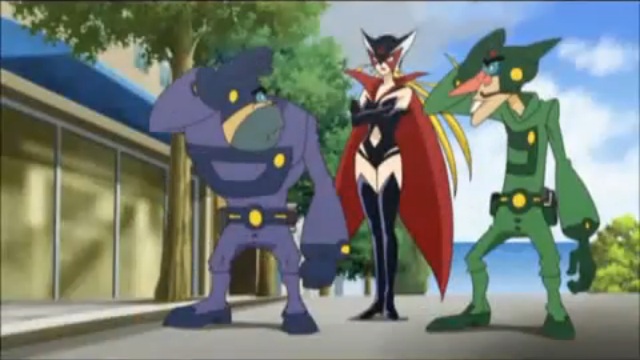
"Very well, then war it is." (15:10)
The Japanese line is "Yoroshii, naraba sensou desu" (よろしい、ならば戦争です). This is referencing a line said by the Major (少佐) in Hellsing (ヘルシング).S1 The original line is "Yoroshii, naraba kuriiku da!" (よろしい、ならば戦争(クリーク)だ), which translates to "Very well, then war it is". In the original line, the Japanese word for "war", "sensou" (戦争), is indicated to be read using the German word for "war", "krieg". Image for reference:
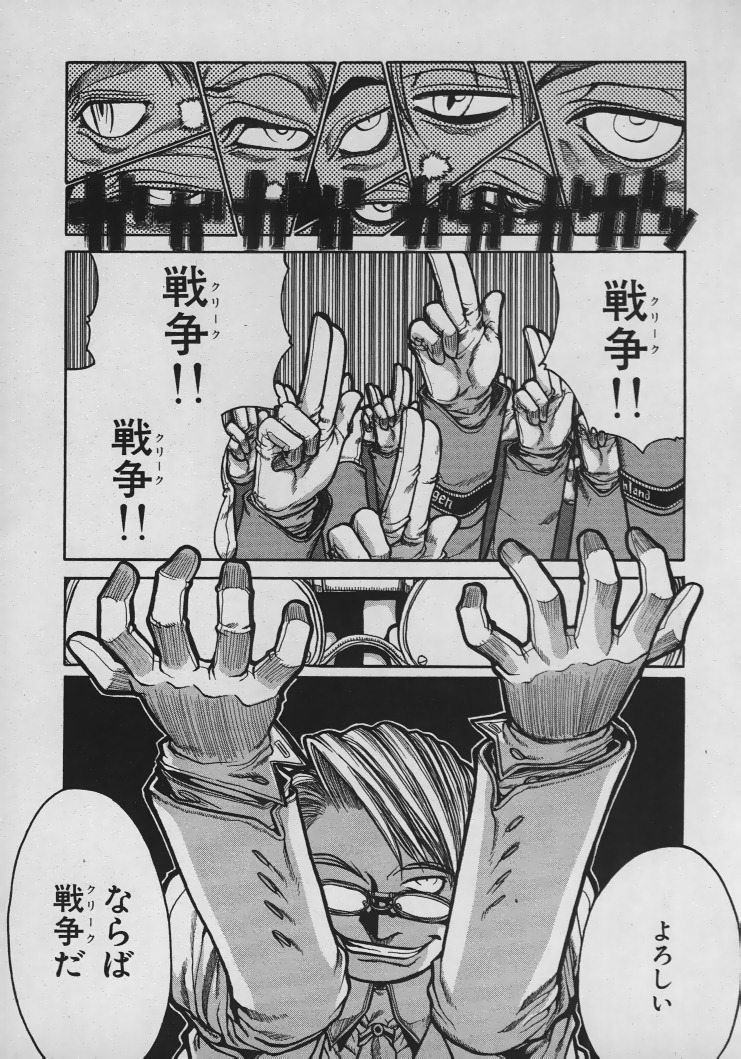
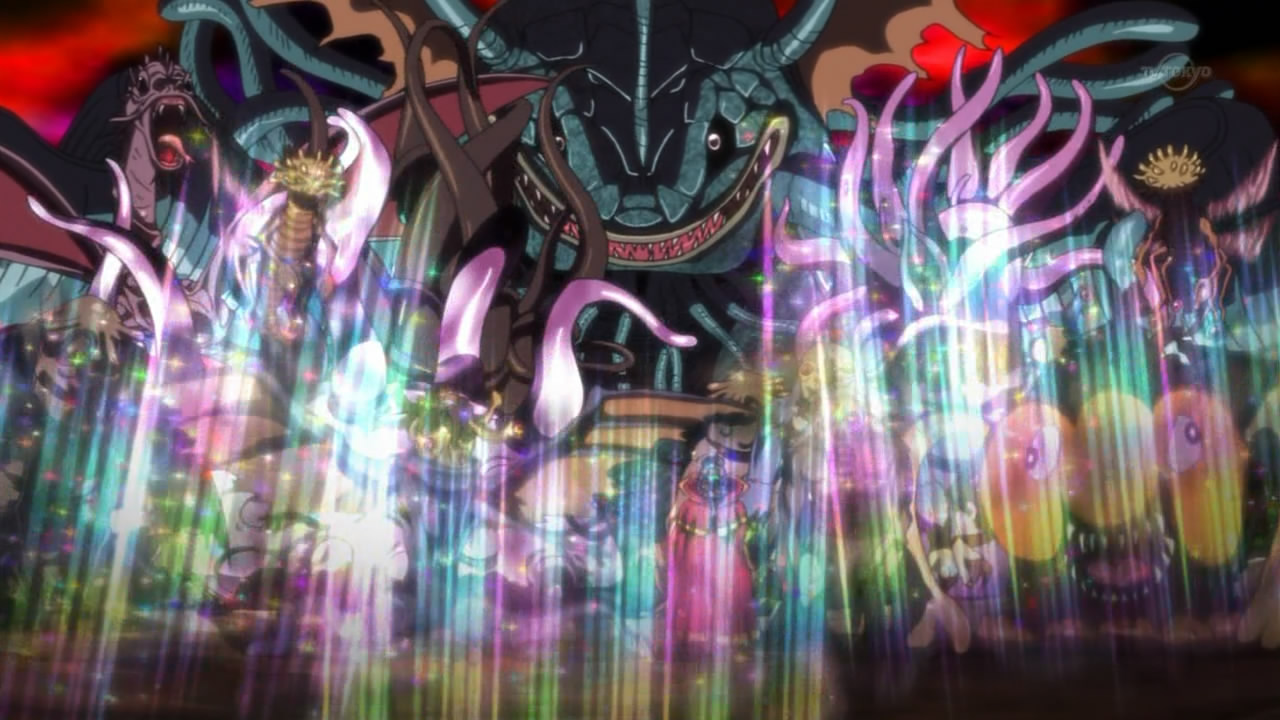
(15:15)
It's somewhat difficult to see, but in the bottom right corner there is a monster that appears that greatly resembles "Spoo" (スプー supuu), a popular Japanese meme.S1 Image for reference:
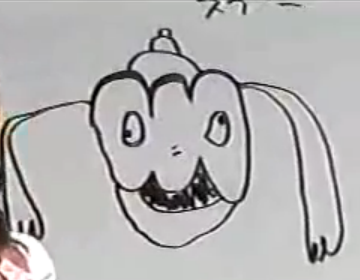
This image originated from "Okaa-san to Issho" (おかあさんといっしょ), "Together With Mom", a Japanese children's TV show. In 2006, one of the performers on the show, Haida Shouko, drew a sketch of Spoo, one of the characters that appears on the show. Her sketch ends up not really looking like the original character, however, and the image became very popular on the internet.
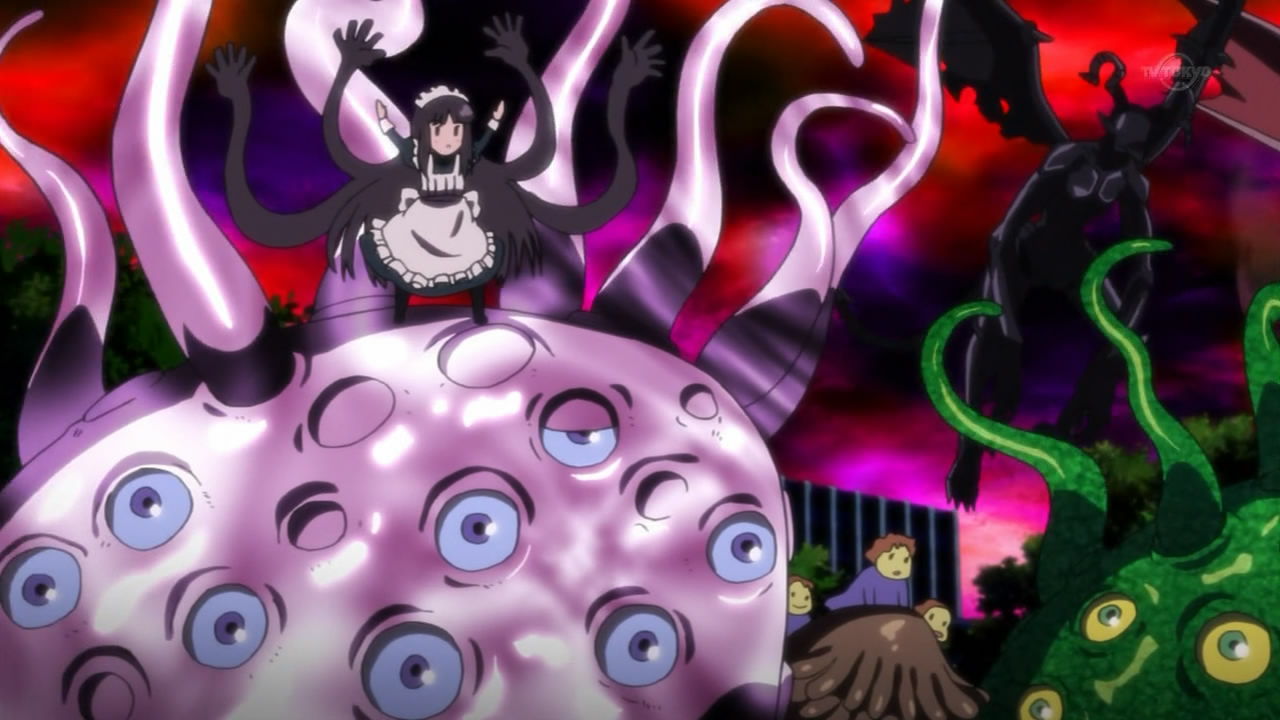
(15:17)
The maid that appears on top of the shoggoth, like the maids that appear in episode 11 at 12:00, is based on an illustration on page 271 of volume 6 of the "Haiyore! Nyaruko-san" light novel series. Image for reference:
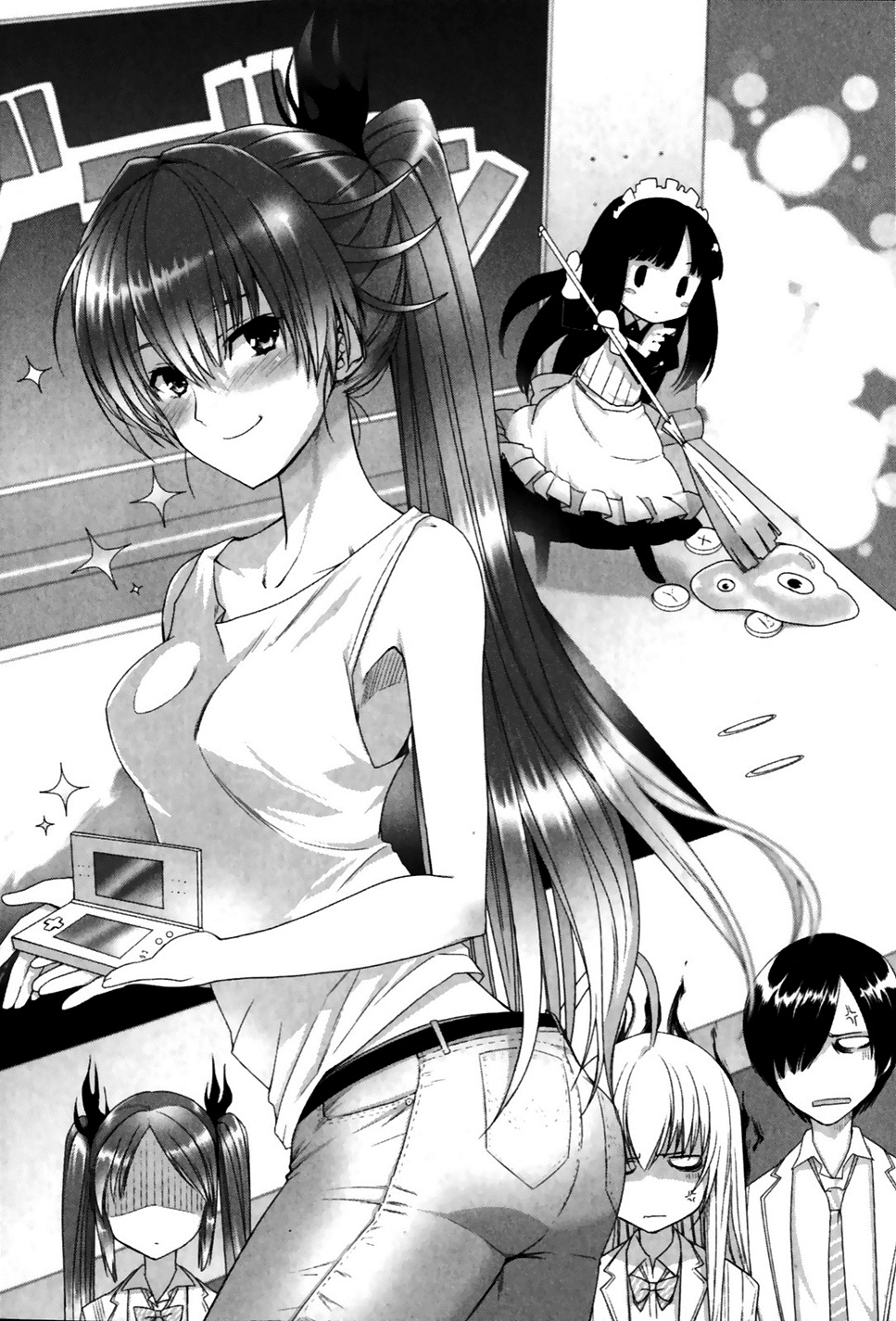
On a related note, the maid that appears here is based on Tekeri (テケリ) from "Uchi no Meido ha Futeikei" (うちのメイドは不定形), "My Maid is Amorphous", a Cthulhu Mythos inspired light novel written by Shizukawa Tassou (静川龍宗) and published in 2010. Images for reference:
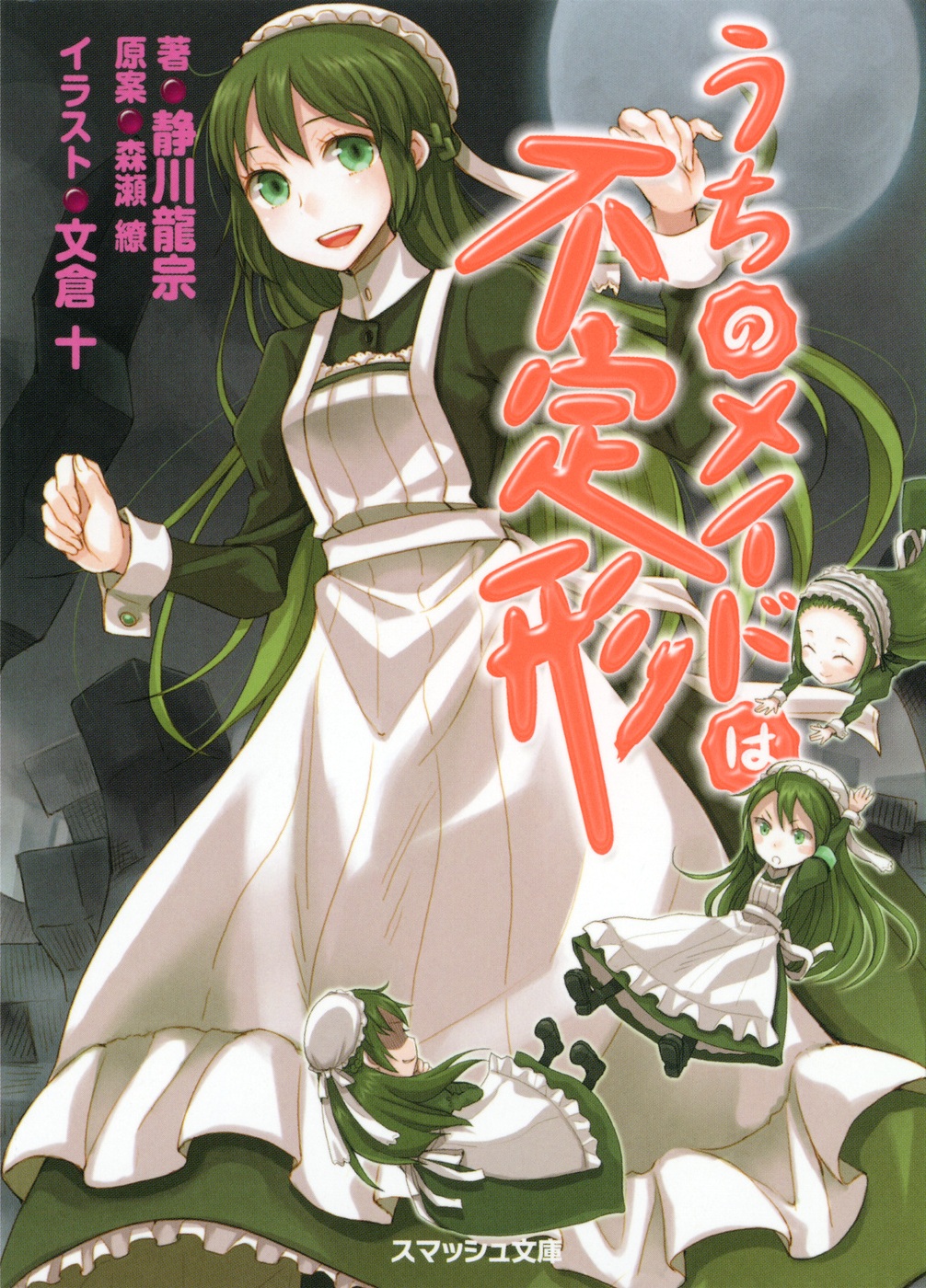
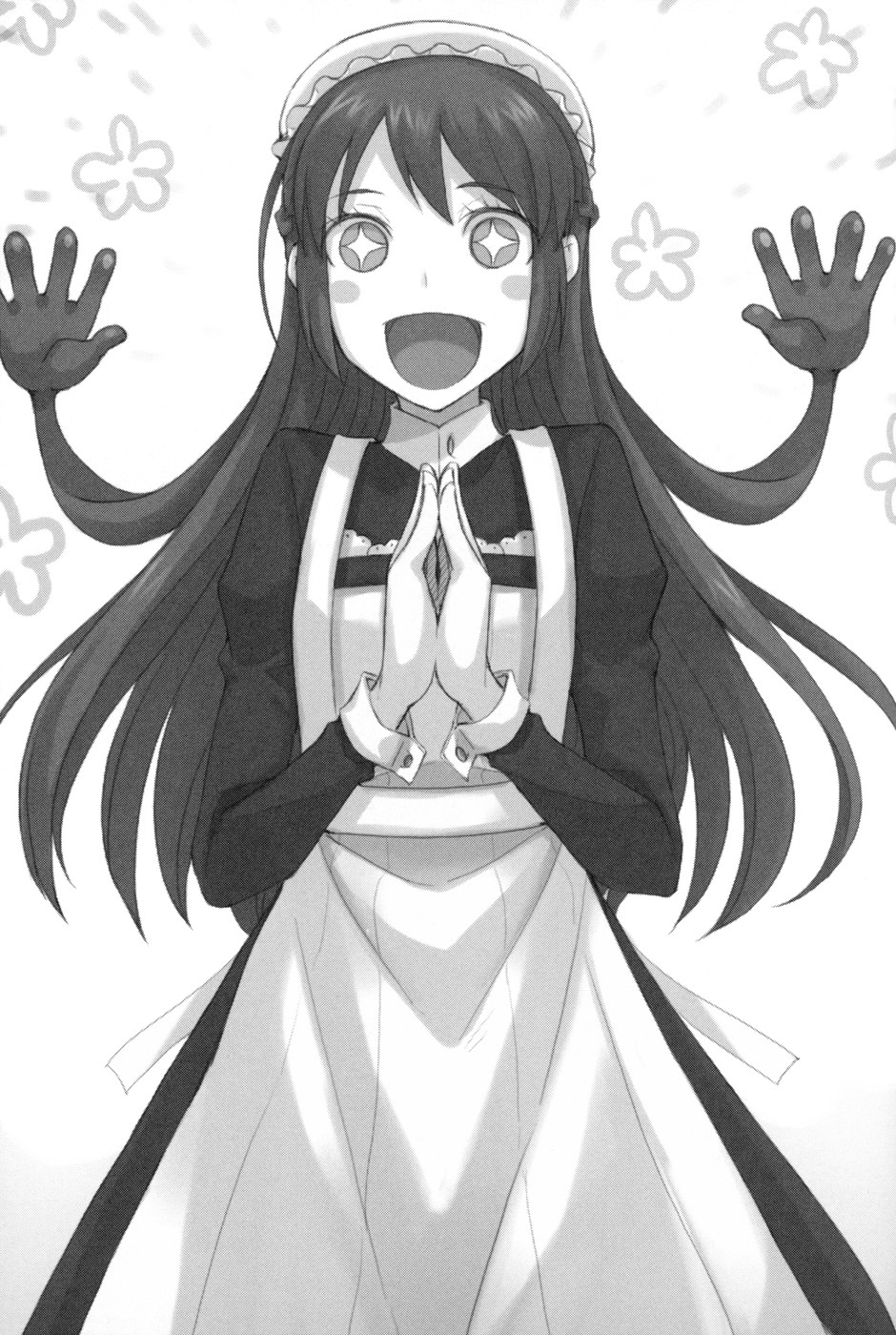
In addition to the visual similarity, the connection is made clear by the following line on page 270 of volume 6 of the "Haiyore! Nyaruko-san" light novel series.S5 When Cthune (クー音 Kuune), Cthuko's cousin, shows off what she bought, she says,
「どう、これ! すごいでしょ! 『テケリ』だよ! 地球の日本、それも蜷川区でしか配信されない伝説のモンスターなんだよ!」To explain, in "Uchi no Meido ha Futeikei", Tekeri is a shoggoth from the Cthulhu Mythos. In "At the Mountains of Madness", a story written by H. P. Lovecraft and first published in 1931, a shoggoth is described to be "a shapeless congeries of protoplasmic bubbles". This is why Tekeri is described as "futeikei" (不定形), "amorphous", in the title. Her name is based on "Tekeli-li", a phrase shoggoths are known to endlessly repeat in the Cthulhu Mythos. Ninagawa-ku (蜷川区), Ninagawa Ward, is the name of the fictional city that is the setting of this light novel.
"What do you think of this! Isn't it amazing! It's 'Tekeri'! It's a legendary monster that isn't sold anywhere except in the Ninagawa Ward of Japan on Earth!"
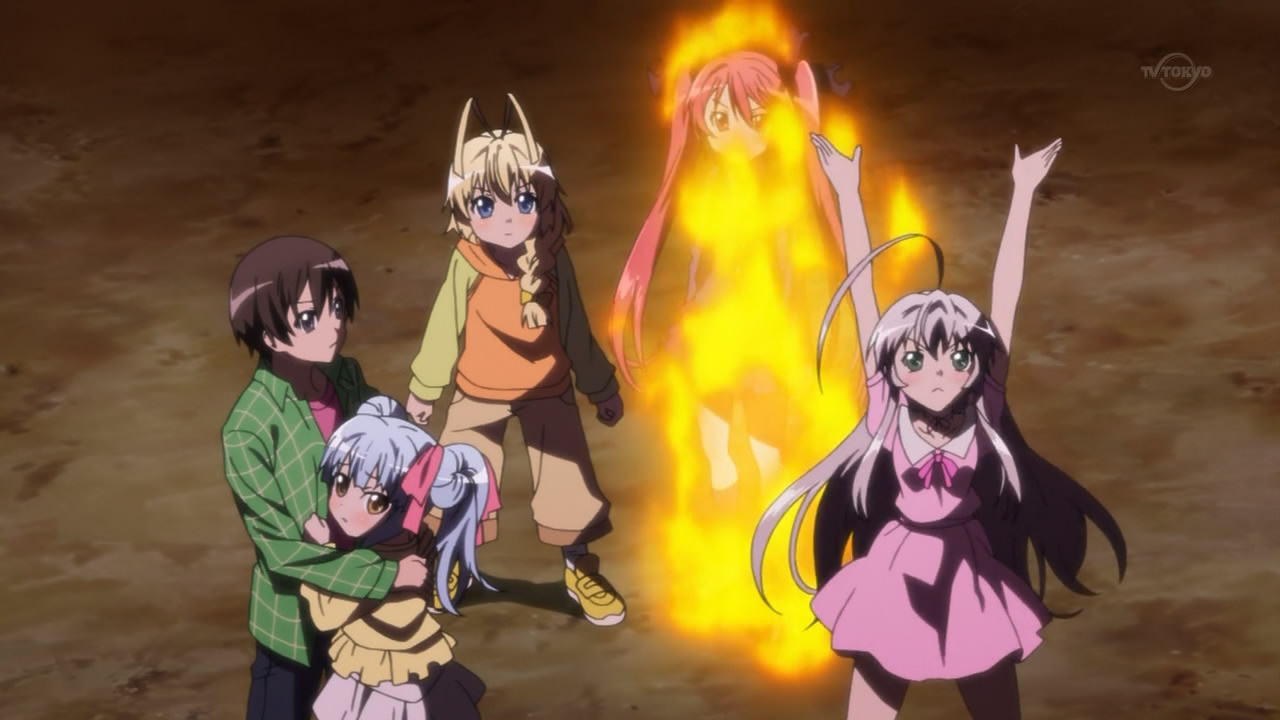
(16:10)
Nyaruko's pose is referencing "Dai Henshin" (大変身), "Great Transformation", used by Kamen Rider X starting from episode 28 of "Kamen Rider X" (仮面ライダーX), a Japanese TV show about a masked super hero that aired in 1974.S3 Images for reference:


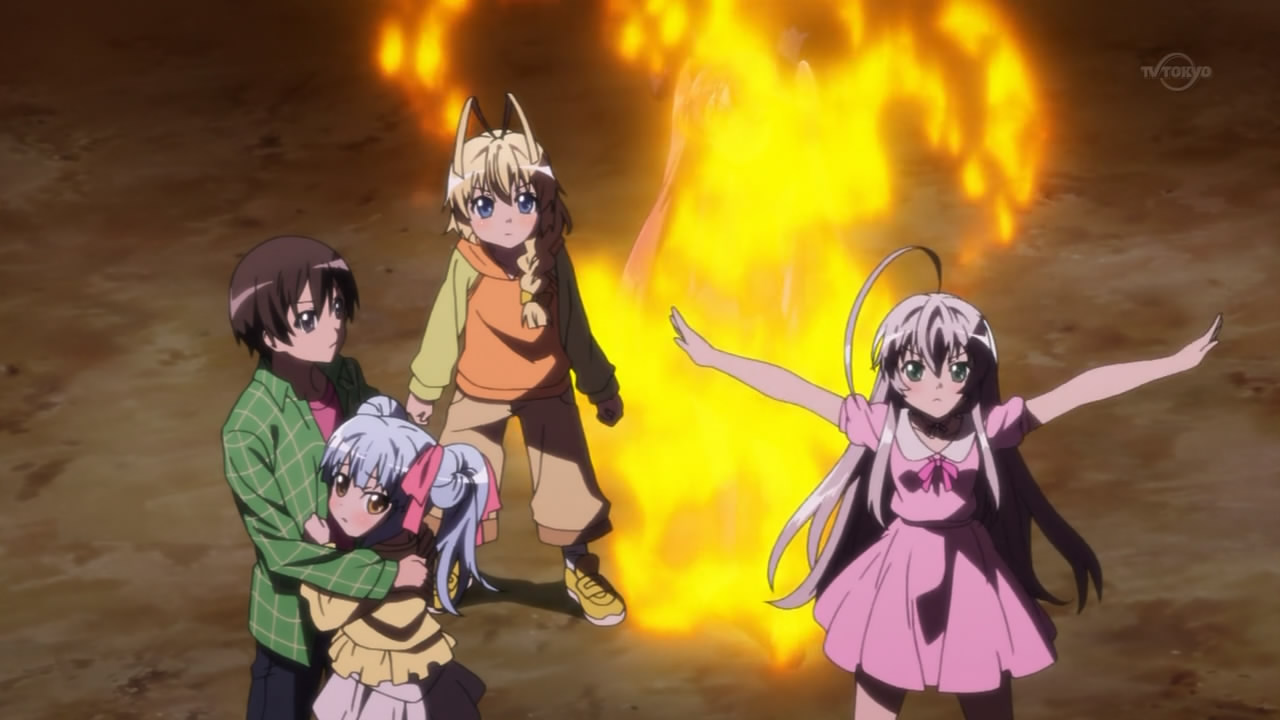
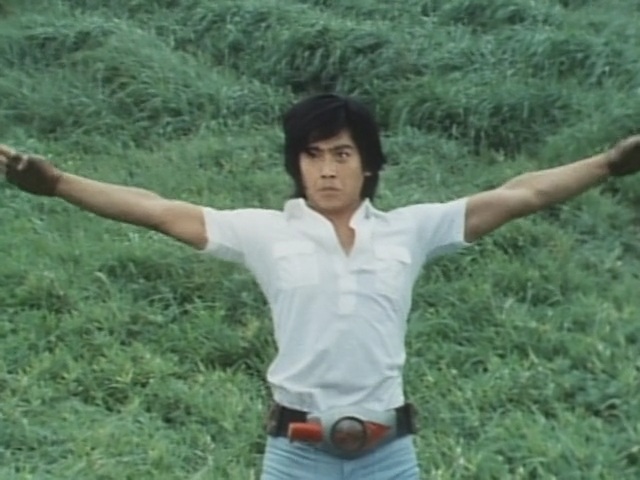
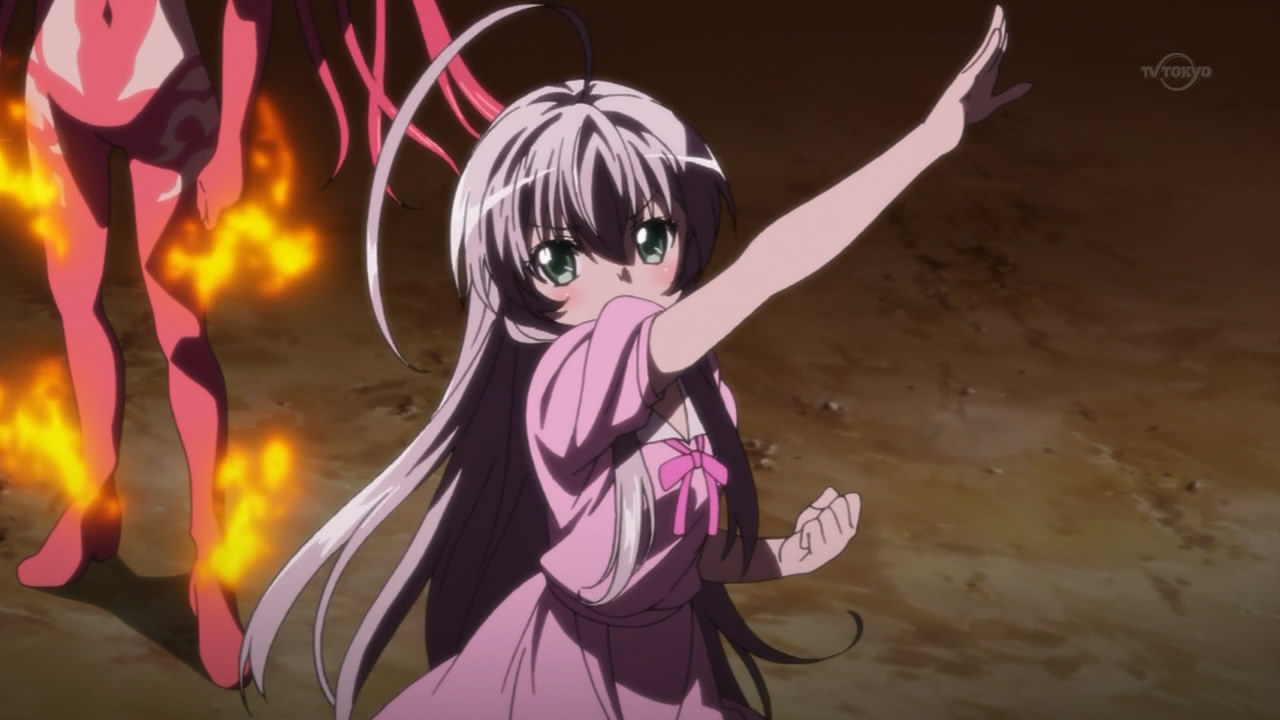
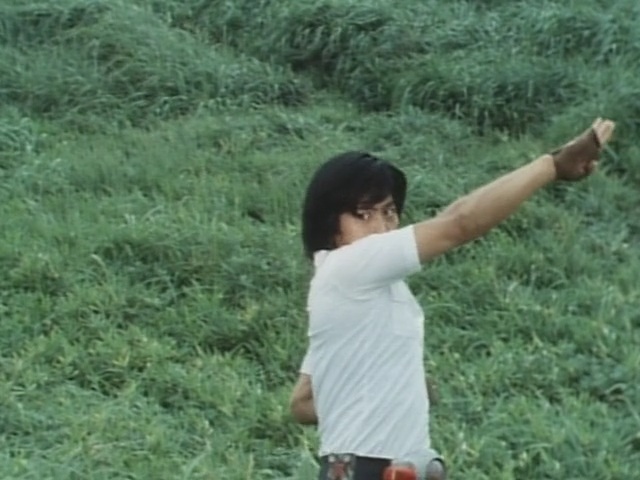
"My strength has made you cry!" (16:17)
The Japanese line is "Watashi no tsuyosa ni omae ga naita!" (私の強さにお前が泣いた!). This is referencing the catch phrase of Kintarosu (キンタロス) from "Kamen Rider Den-O" (仮面ライダー電王), a Japanese TV show about a masked super hero that aired from 2007 to 2008. His line goes, "Ore no tsuyosa ni omae ga naita!" (俺の強さにお前が泣いた!), which has the same meaning as above.
"Go, Fang." (16:23)
The Japanese line is "Ike... Fangu" (行け・・・ファング). This is referencing Fin Fangs from "Mobile Suit Gundam 00", an anime that aired from 2007 to 2008. They are remote controlled flying weapons that are similar to Fin Funnels, also from the "Gundam" series. In addition, often times in "Mobile Suit Gundam 00", when using Fin Fangs, characters will say "Ike yo, fangu!" (行けよ、ファング!), which has the same meaning as above.S1 Video for reference: https://youtu.be/XNT6F9BlU8E?t=22s
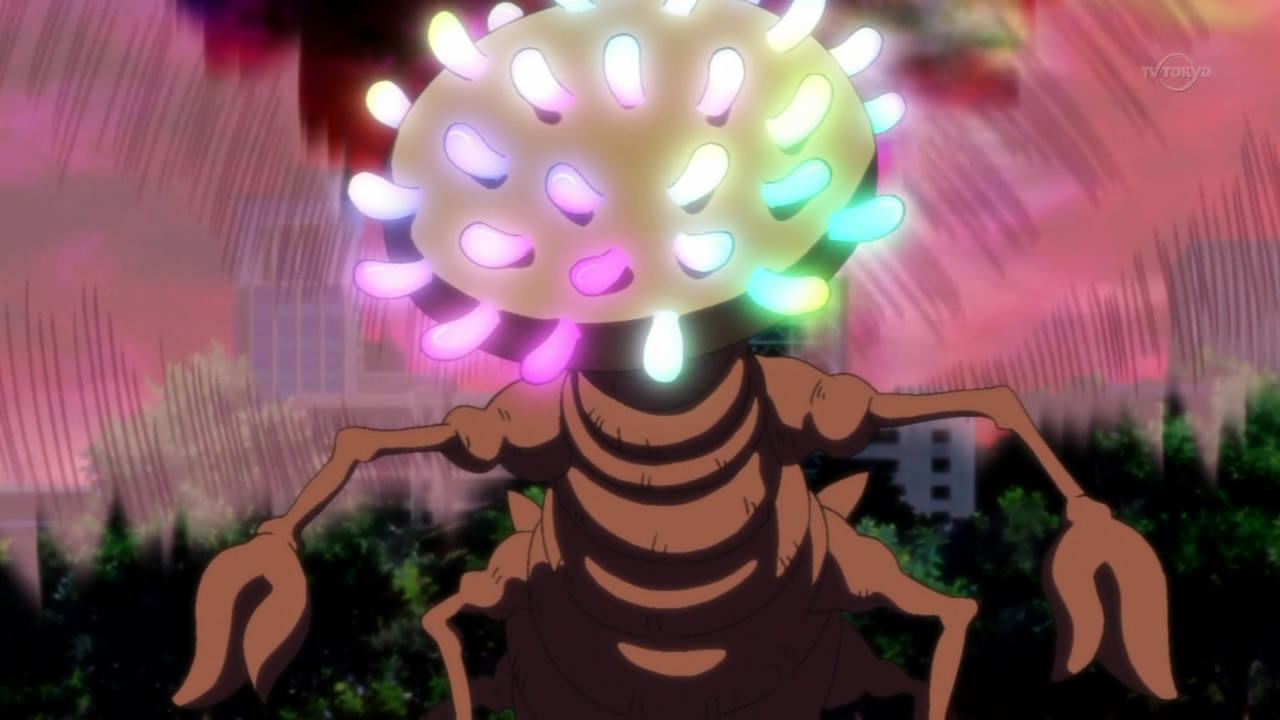
(16:34)
The creature that appears here is a Mi-go, a species of creature in the Cthulhu Mythos.S1 In "The Whisperer in Darkness", a short story written by H. P. Lovecraft and first published in 1931, it is described as follows:
"They were pinkish things about five feet long; with crustaceous bodies bearing vast pairs of dorsal fins or membraneous wings and several sets of articulated limbs, and with a sort of convoluted ellipsoid, covered with multitudes of very short antennae, where a head would ordinarily be."In addition, the head of the Mi-go shown here is glowing multiple colors. This is referencing how in "The Whisperer in Darkness" the following is stated:
"They talked with their heads, which changed colour in different ways to mean different things."
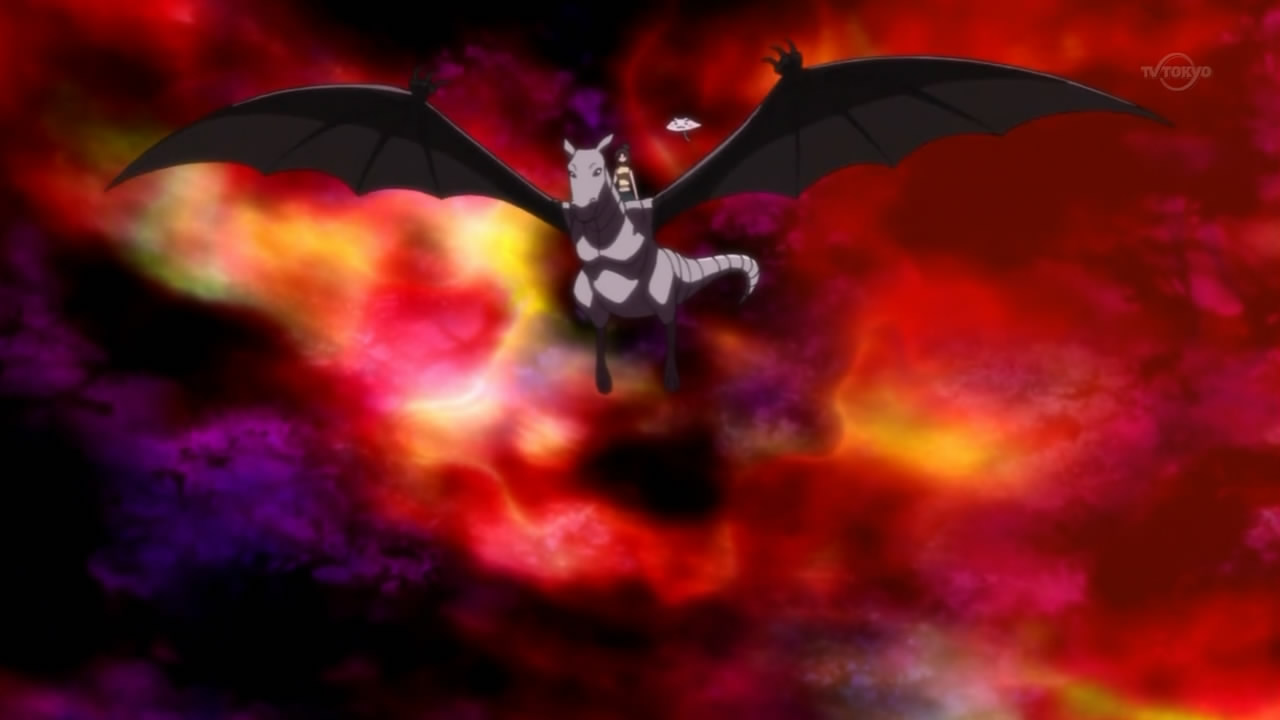
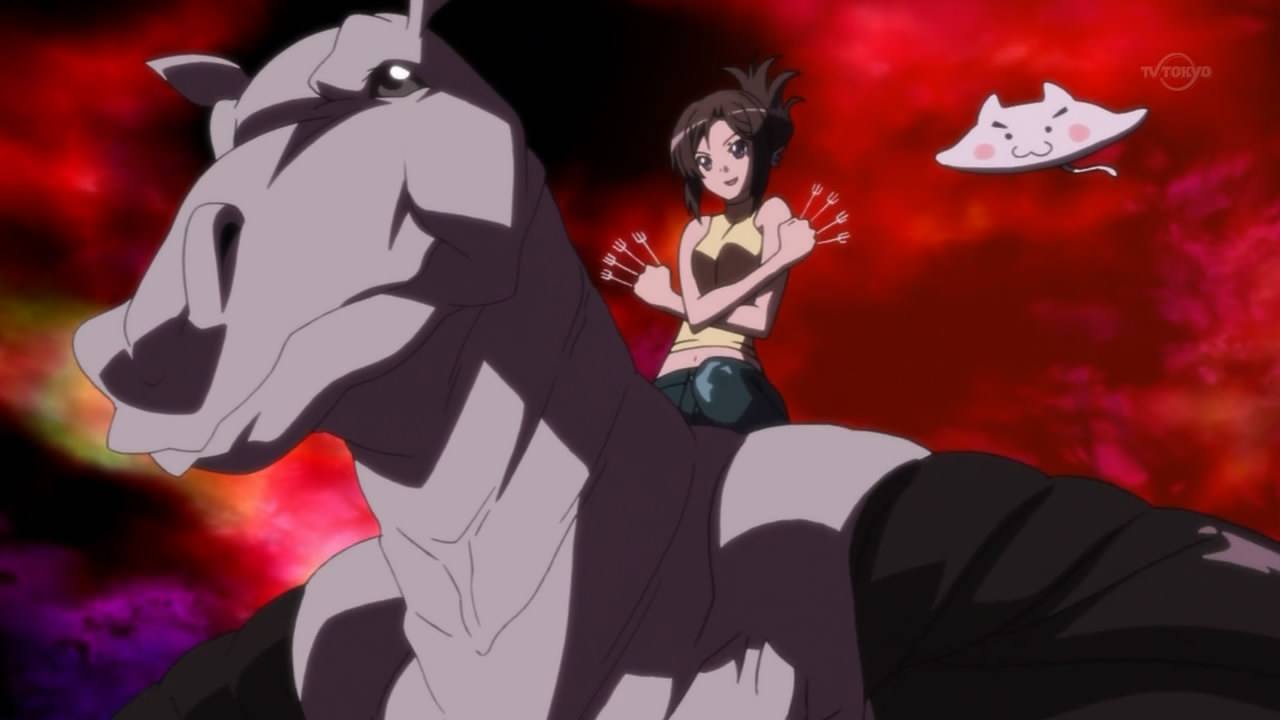
~< `・ω・´> (16:39)
The white creature that appears here is the Twitter profile picture of Aisora Manta (逢空万太), the author of the "Haiyore! Nyaruko-san" light novel series. Screen capture for reference:

"Monsters, count up your sins!" (16:48)
The Japanese line is "Kaibutsu tachi! Anata no tsumi wo kazoenasai!" (怪物たち!あなたの罪を数えなさい!). This is referencing the catch phrase of Kamen Rider W from "Kamen Rider W" (仮面ライダーW), a Japanese TV show about a masked super hero that aired from 2009 to 2010. His original line is "Saa, omae no tsumi wo kazoero!" (さあ、お前の罪を数えろ!), which translates to "Now, count up your sins!".
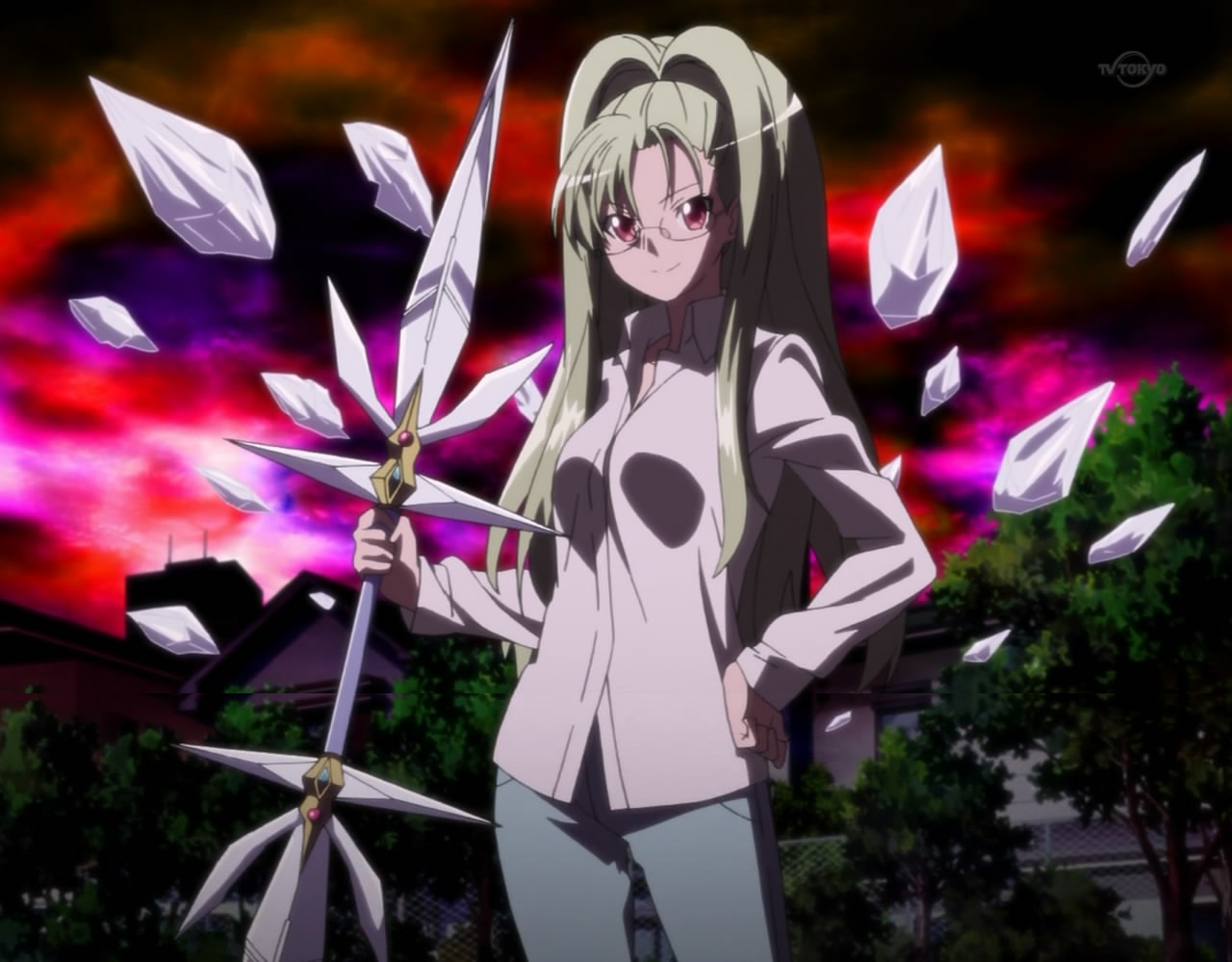
(17:01)
Luhy's Ice Lancer is based on a sword used by Tekkaman Hiver, the Tekkaman form of Yumi Francois, the main character of "Tekkaman Blade II", an anime series released in 1994. The connection is that the person who voices Luhy, Kouda Mariko (國府田マリ子), also voices Yumi.S3 In addition, the Ice Lancer (アイスランサー aisu ransaa) is based on the Tekka Lancer (テックランサー tekka ransaa), a double-bladed lance used by Tekkaman Blade, another main character in "Tekkaman Blade II" who is the main character of "Tekkaman Blade", the prequel of "Tekkaman Blade II" that aired from 1992 to 1993. Images for reference (Hiver and her sword on the left, Blade and his Tekka Lancer on the right):
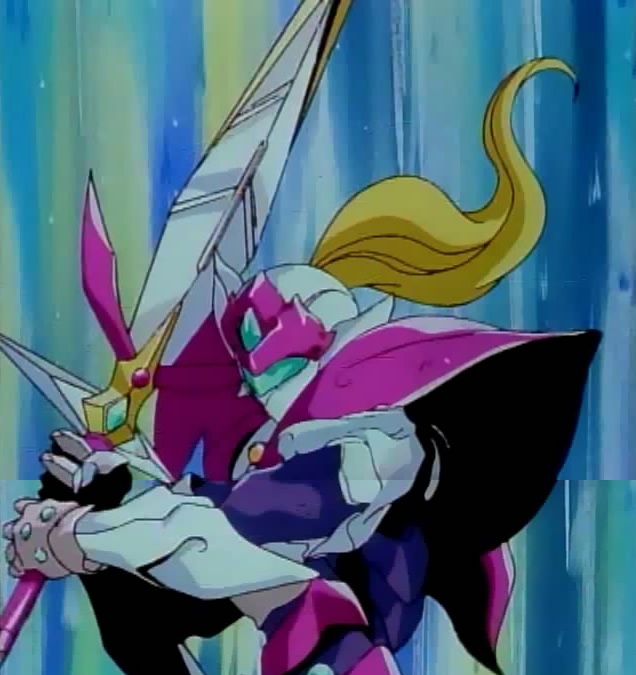
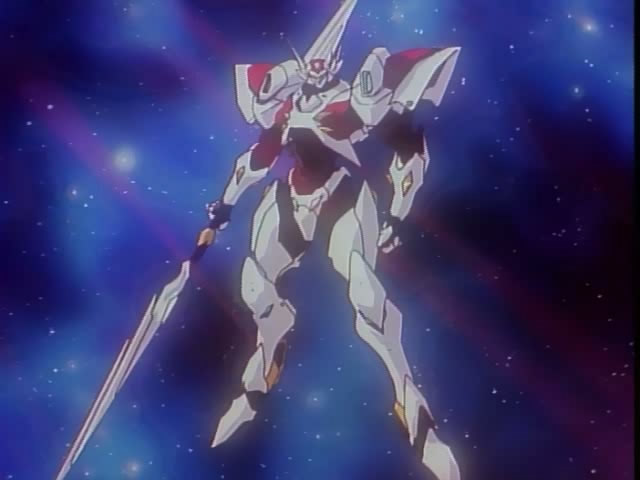
"Nyar Shthan." (17:17)
The Japanese line is "Nyarushutan" (にゃるしゅたん). This is referencing a chant used in a ritual to summon Nyarlathotep in "The Complete Masks of Nyarlathotep", a "Call of Cthulhu" RPG scenario book published by Chaosium in 1996.S4 The original chant goes, "Nyar shthan, Nyar gashanna!" (にゃる・しゅたん! にゃる・がしゃんな!). Here is an excerpt from "The Complete Masks of Nyarlathotep" for reference.
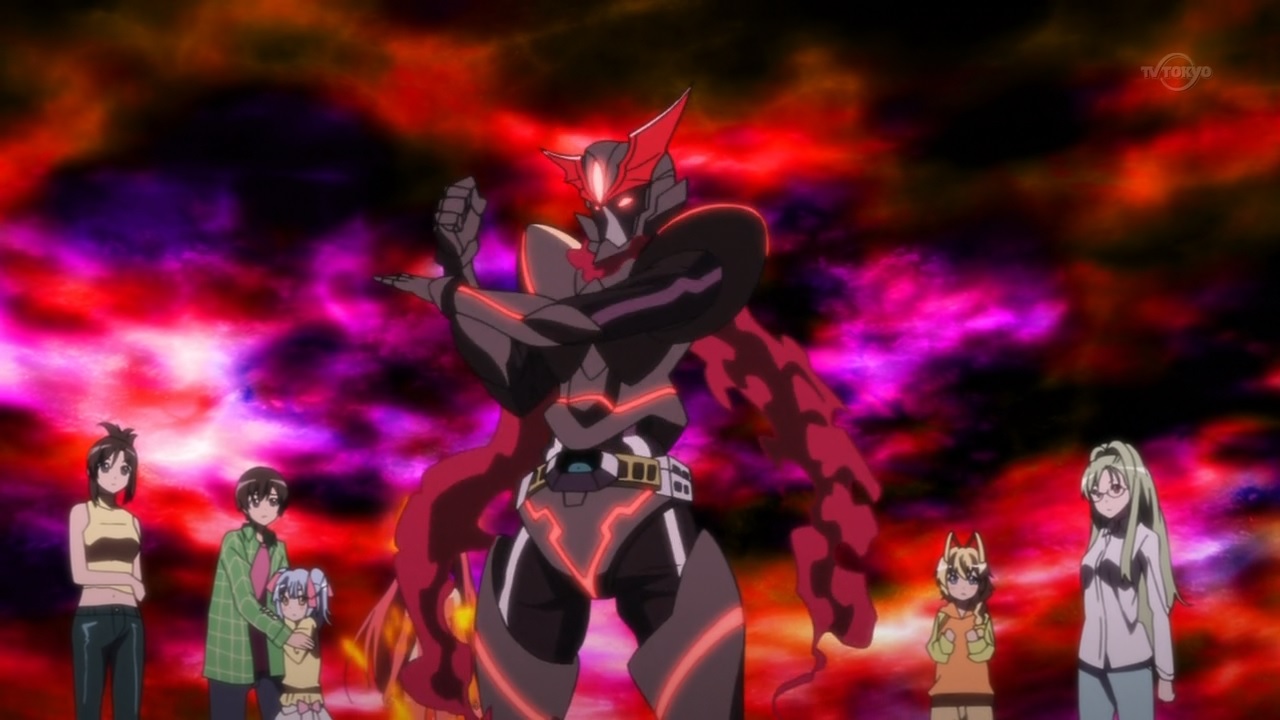
(17:22)
Nyaruko's poses here are referencing those of Kamen Rider Black from "Kamen Rider Black" (仮面ライダーBLACK), a Japanese TV show about a masked super hero that aired from 1987 to 1988.S1 Images for reference:


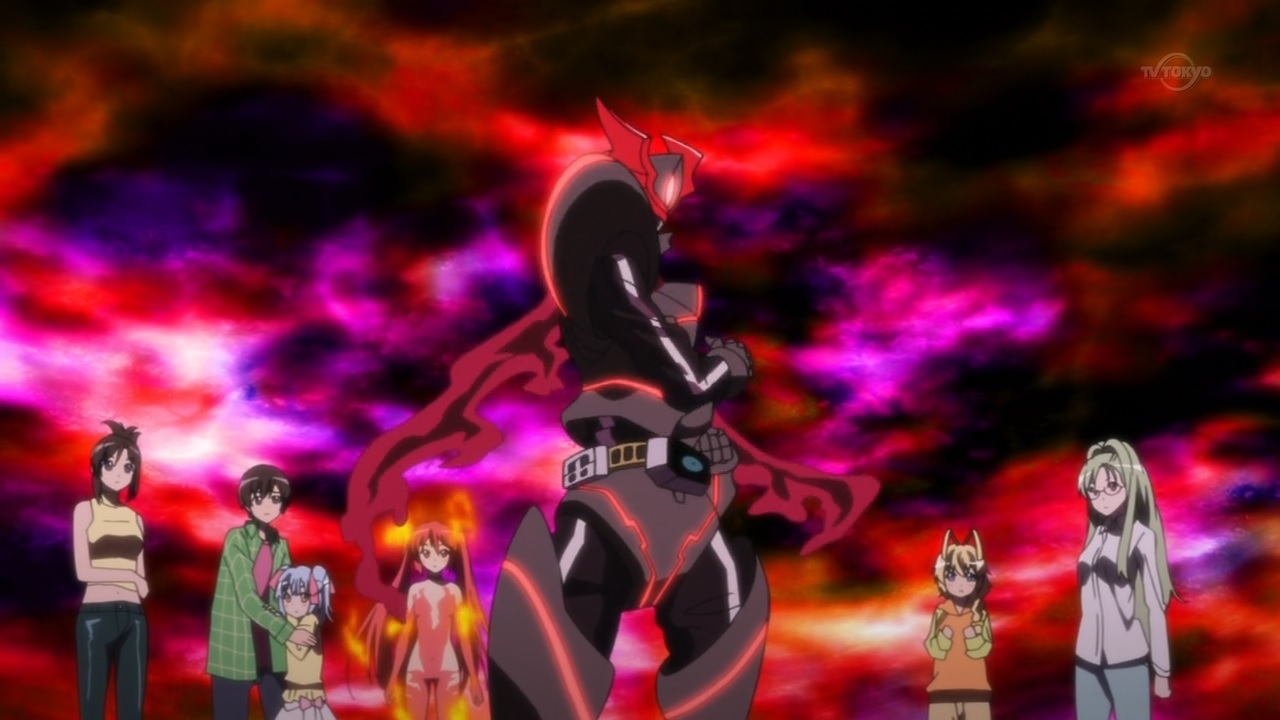

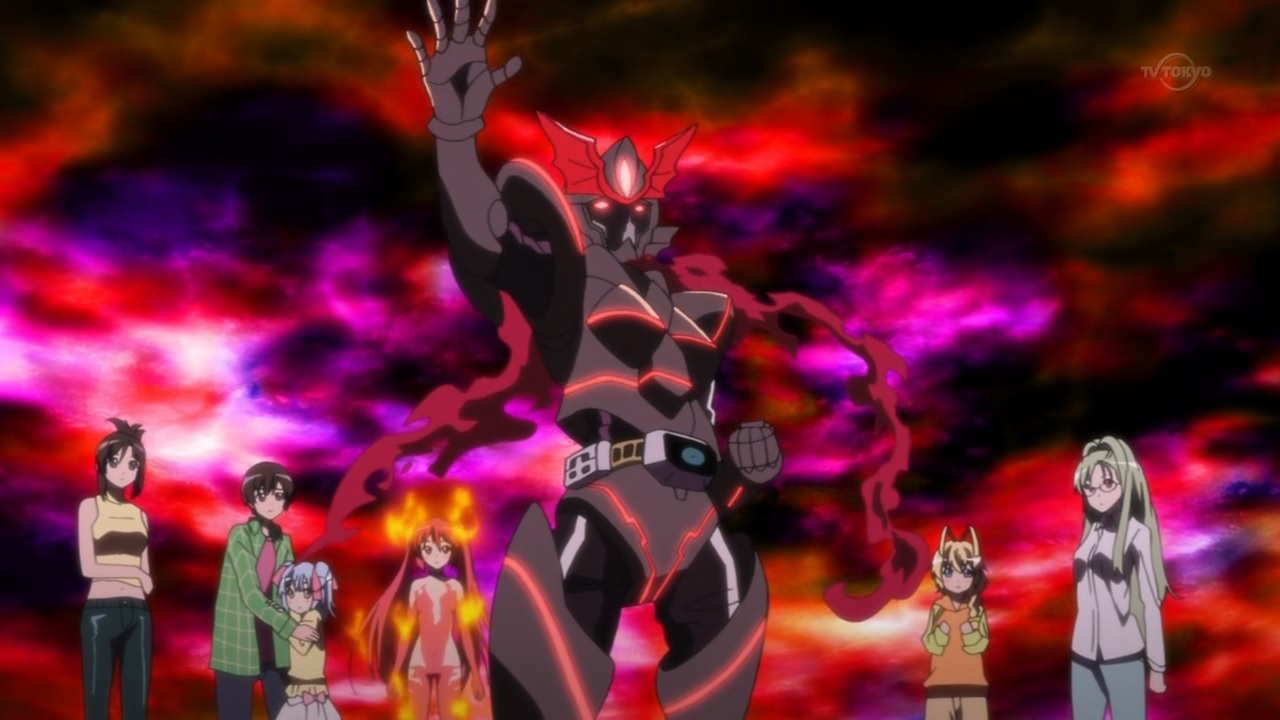
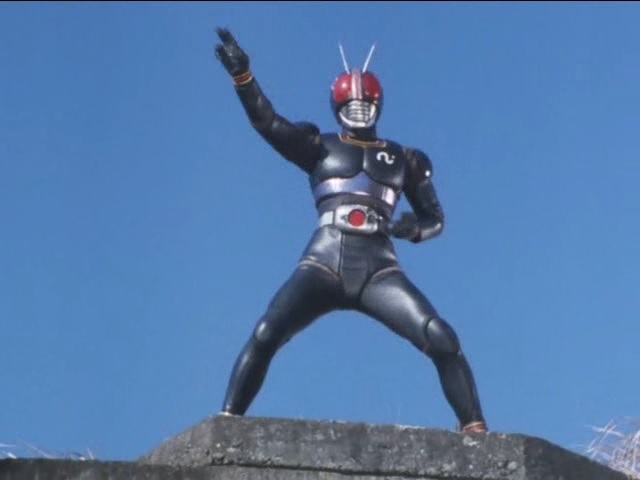
"What is this?" (17:30)
The Japanese line is "Nanja koryaa!?" (なんじゃこりゃあ!?). Like in episode 2 at 12:50, this is a reference to the same line said by Detective Shibata Jun when he is killed in the line of duty in episode 111 of "Taiyou ni Hoero!" (太陽に吠えろ!), "Bark at the Sun!", a Japanese television drama that aired from 1972 to 1987.S1
"With these tentacles of ultimate brutality, I will punish you myself." (17:48)
The Japanese line is "Kono saishuu kichiku shokushu wo motte, watashi mizukara shobatsu wo ataeru" (この最終鬼畜触手をもって、私自ら処罰を与える). This is referencing "DoDonPachi" (怒首領蜂), a Japanese vertical space shooter game first released in 1997.S1 If one beats the game while fulfilling certain criteria, then the game will loop back to the beginning. However, in this second loop the amount of bullets the enemies fire is greatly increased. In addition, once the last boss is defeated a hidden stage is unlocked which contains two secret bosses. In this stage the true mastermind of the series reveals himself and says,
「よくもここまできたものだ。貴様等は私の全てを奪ってしまった。これは許されざる反逆行為といえよう。この最終鬼畜兵器をもって貴様等の罪に私自らが処罰を与える。死ぬがよい。」Image for reference:
"Yokumo koko made kita mono da. Kisama tou ha watashi no subete wo ubatte shimatta. Kore ha yurusarezaru hangyaku koui to ieyou. Kono saishuu kichiku heiki wo motte kisama tou no tsumi ni watashi mizukara ga shobatsu wo ataeru. Shinu ga yoi."
"How dare you come this far. You have stolen everything from me. This shall be considered an unforgivable act of treason. With this weapon of ultimate brutality, I will personally punish you for your crimes. Die."
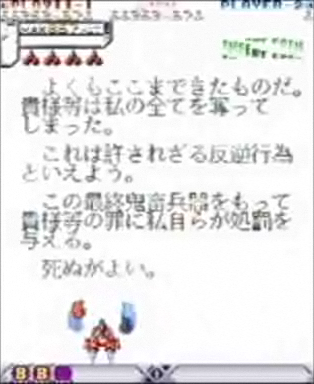
Video for reference: http://www.nicovideo.jp/watch/sm83312
"Now you will surely die. Good bye." (17:59)
The Japanese line is "Iyoiyo motte shinu ga yoi. Soshite sayounara" (いよいよもって死ぬがよい。そしてさようなら). This is referencing "DoDonPachi Daifukkatsu" (怒首領蜂大復活), a Japanese vertical space shooter game released in 2008 and the fifth game in the "DonPachi" series. Like with "DoDonPachi", if one beats the game while fulfilling certain criteria, then a second loop occurs. In this second loop, upon beating the last boss a hidden stage is unlocked in which the true final boss confronts the player and says, "Iyoiyo motte shinu ga yoi. Soshite sayounara." (いよいよもって死ぬがよい。そしてさようなら。), which has the same meaning as above.S1 Image for reference:
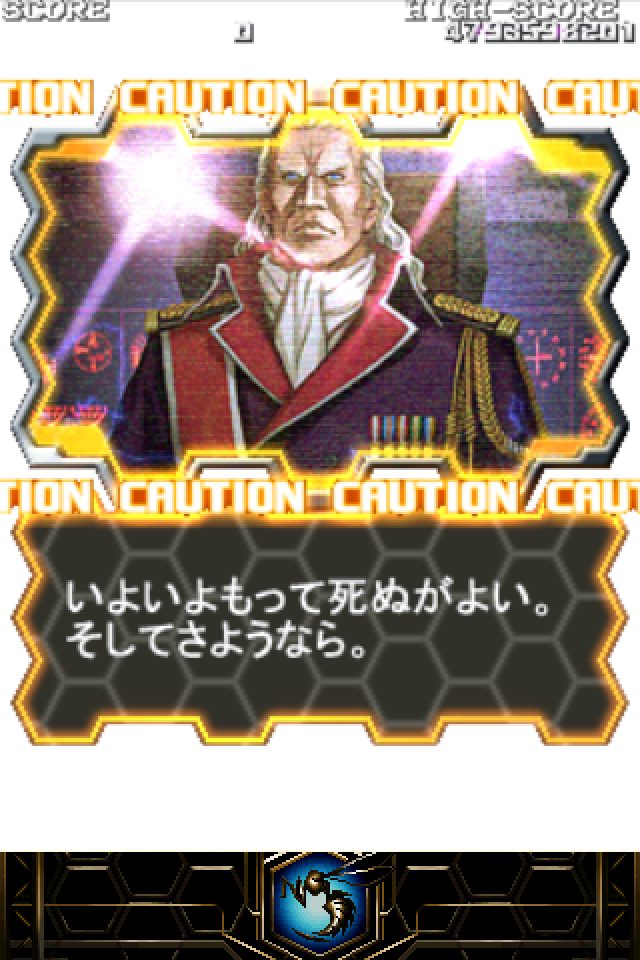
Source of image: http://e531k466.cocolog-nifty.com/evac/2011/07/post-a5de.html
Video for reference: https://youtube.com/watch?v=pZwft_8qj08
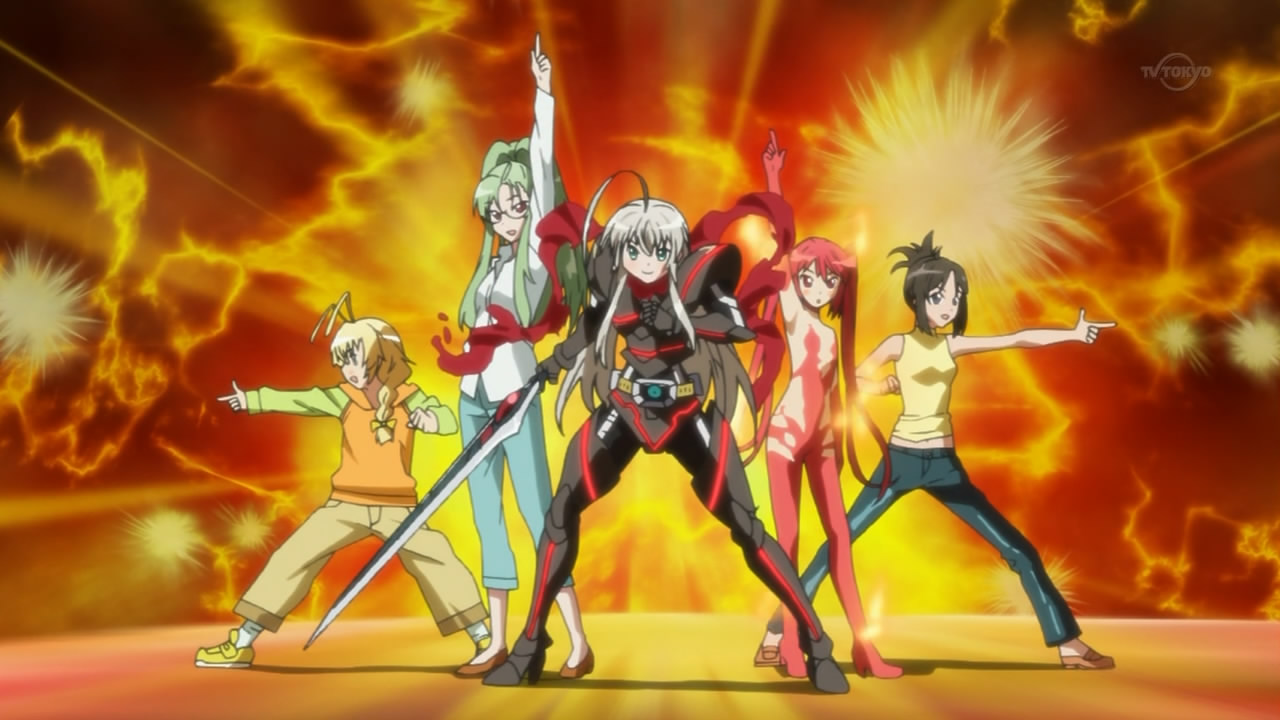
(18:22)
The poses that Nyaruko and company make in this scene are referencing those of the Go-ongers from "Engine Sentai Go-onger".S1 Image for reference:
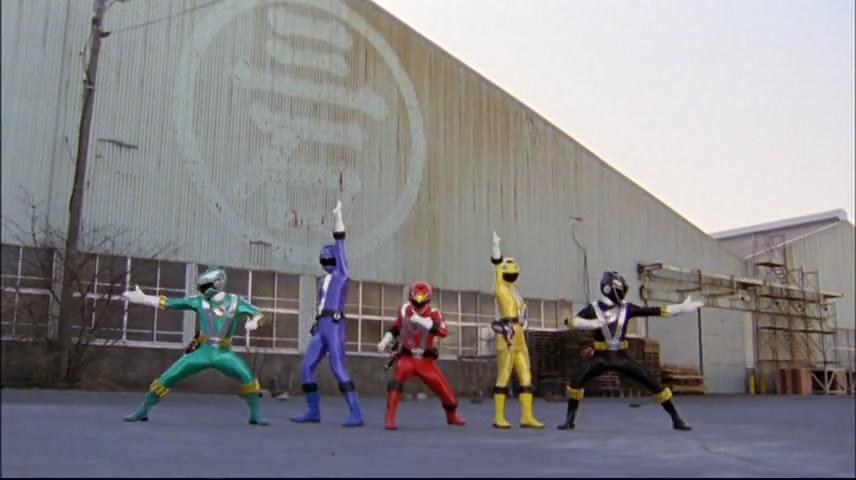
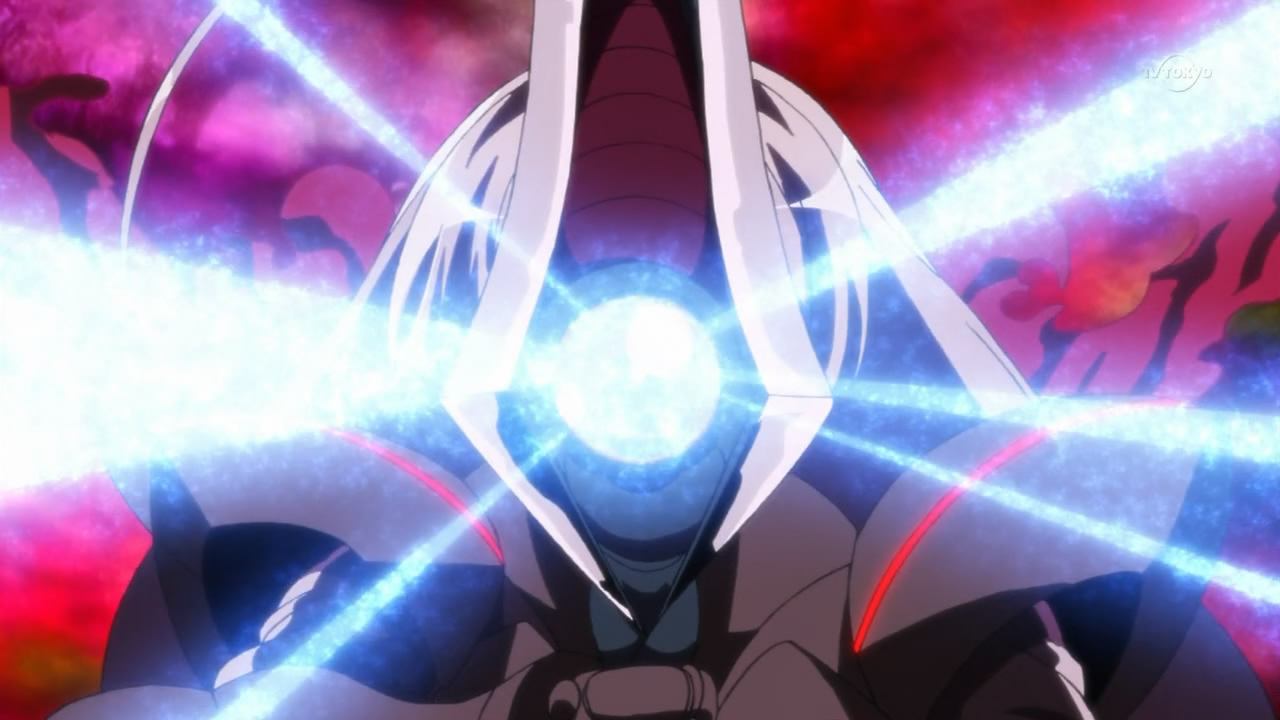
(18:28)
Nyaruko's pose in the image to the right is a very commonly used pose in anime, however it is strongly attributed to Sunrise, an animation studio famous for animating the "Gundam" series.S1 In particular, the way in which Nyaruko holds her sword upright in front of her as her sword lights up and the light steadily peels off to reveal the blade, the lightning flashes in the background, and the pose itself, all appear to be referencing Great Exkaiser when he uses his finishing attack, Thunder Flash, in "Yuusha Ekusukaizaa" (勇者エクスカイザー), "Brave Exkaiser", a mecha anime produced by Sunrise that aired from 1990 to 1991. Images for reference:

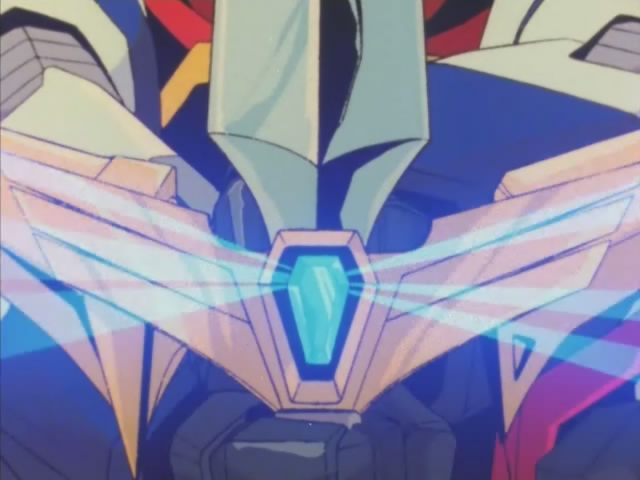
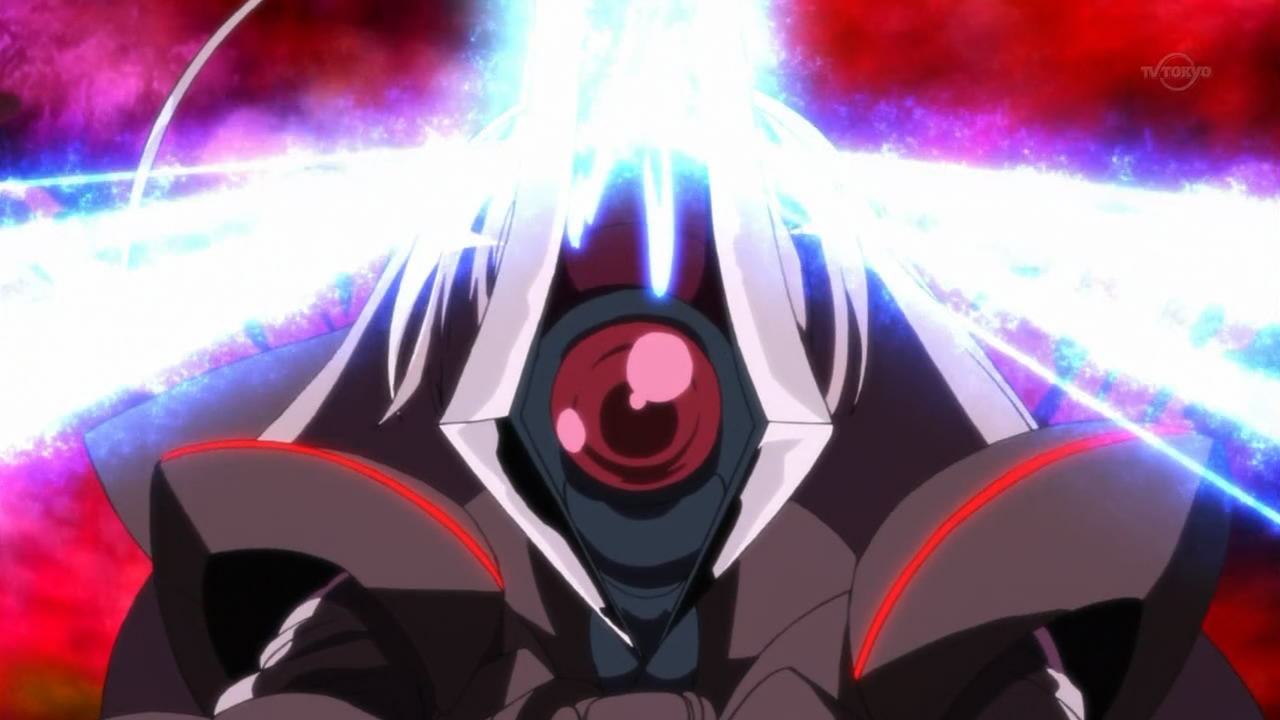
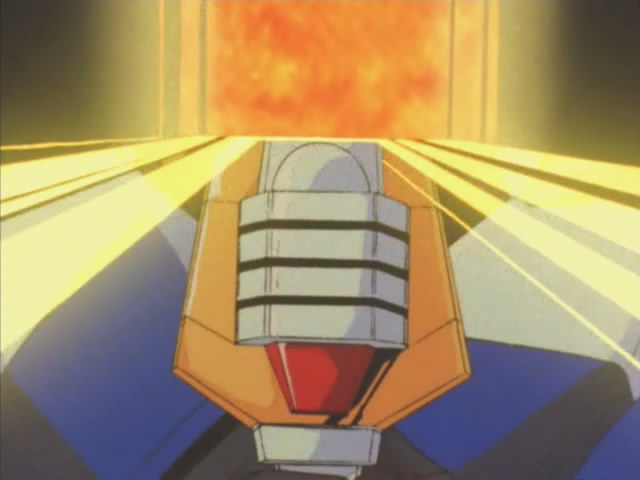
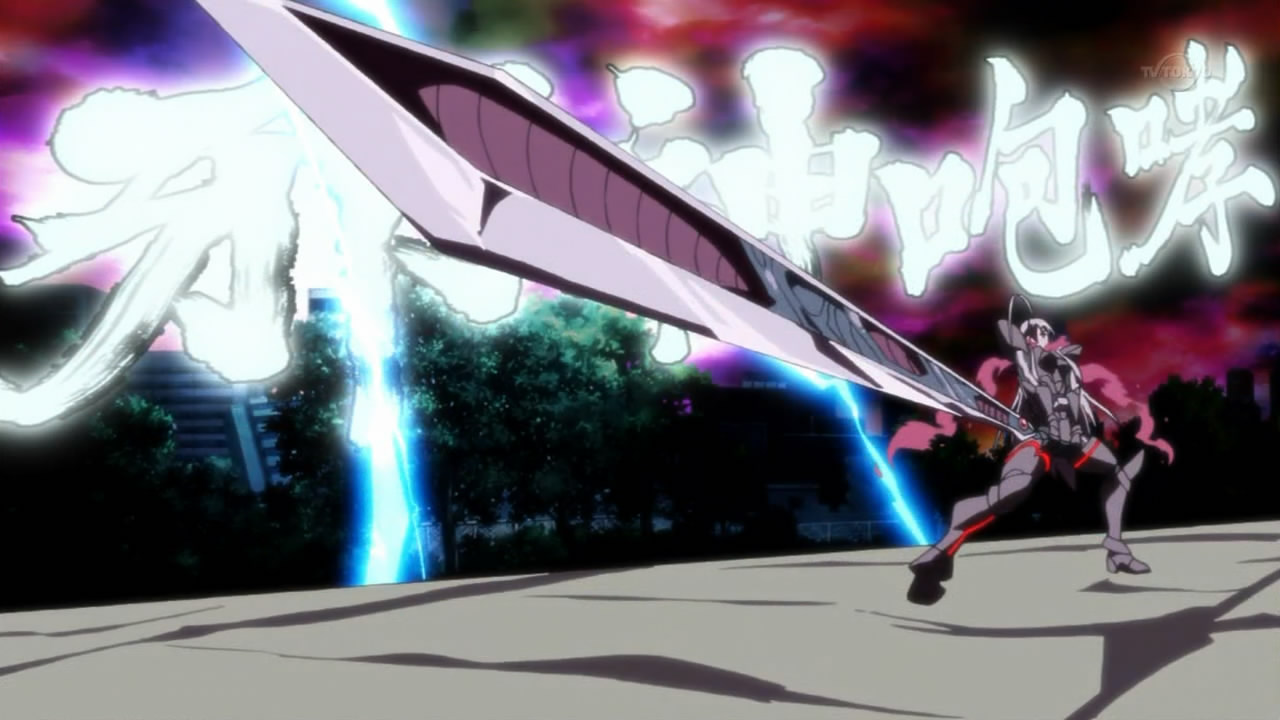
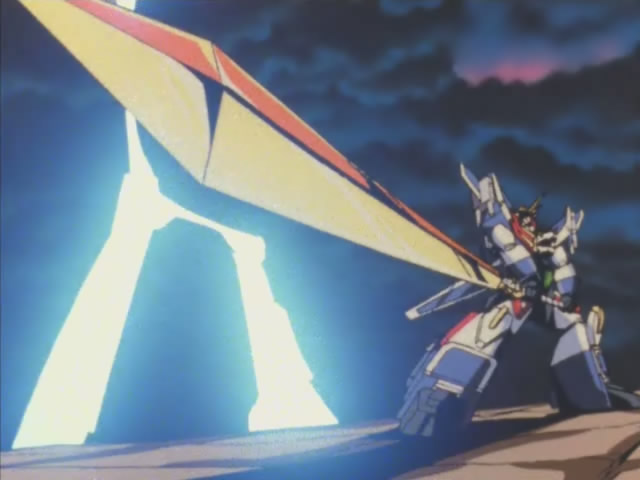
"I draw forth the sword that smites evil!" (18:29)
The Japanese line is "Ware ha ma wo tatsu ken wo toru!" (我は魔を斬つ剣を執る!). This is referencing lines said by Daijuuji Kurou (大十字九郎) and Al-Azif (アル・アジフ) in "Zanma Taisei Demonbein" (斬魔大聖デモンベイン), "Deus Machina Demonbane", a visual novel based on the Cthulhu Mythos that was released by Nitroplus (ニトロプラス) in 2003. The original lines go as follows:
「憎悪の空より来たりて・・・」Video for reference: https://youtube.com/watch?v=_2WObW4GBgI
「正しき怒りを胸に・・・」
「我らは魔を断つ剣を執る!」
「汝、無垢なる刃!デモンベイン!」
"Zouo no sora yori kitarite..."
"Tadashiki ikari wo mune ni..."
"Warera ha ma wo tatsu ken wo toru!"
"Naji, muku naru yaiba! Demonbein!"
"From the hate-scorched sky..."
"With righteous anger in our hearts..."
"We draw forth the sword that smites Evil!"
"Thou art the innocent blade! Demonbane!"
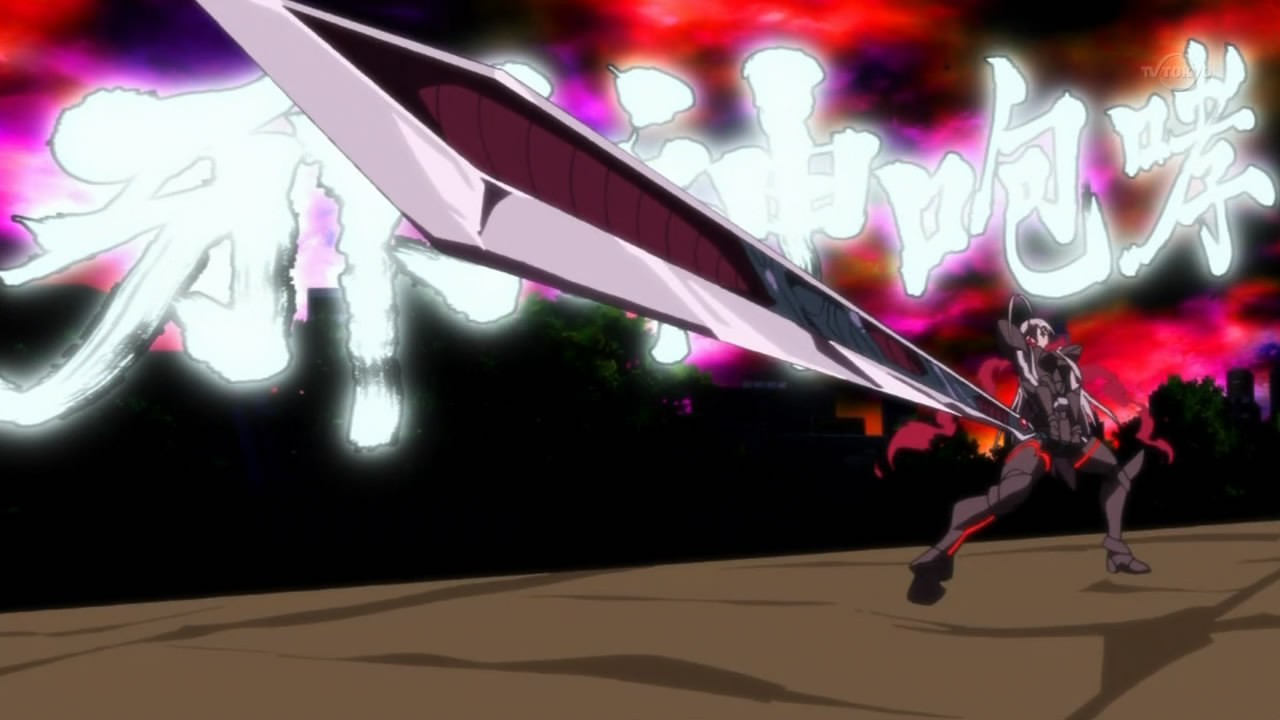
(18:32)
The Japanese text reads "Jashin Houkou" (邪神咆哮), which translates to "Roar of the Evil God". This is referencing "Kishin Houkou Demonbein" (機神咆吼デモンベイン), "Roar of the Machine God Demonbane", a visual novel released by Nitroplus (ニトロプラス) in 2004.S2 It is an updated version of "Zanma Taisei Demonbein" (斬魔大聖デモンベイン), "Deus Machina Demonbane".
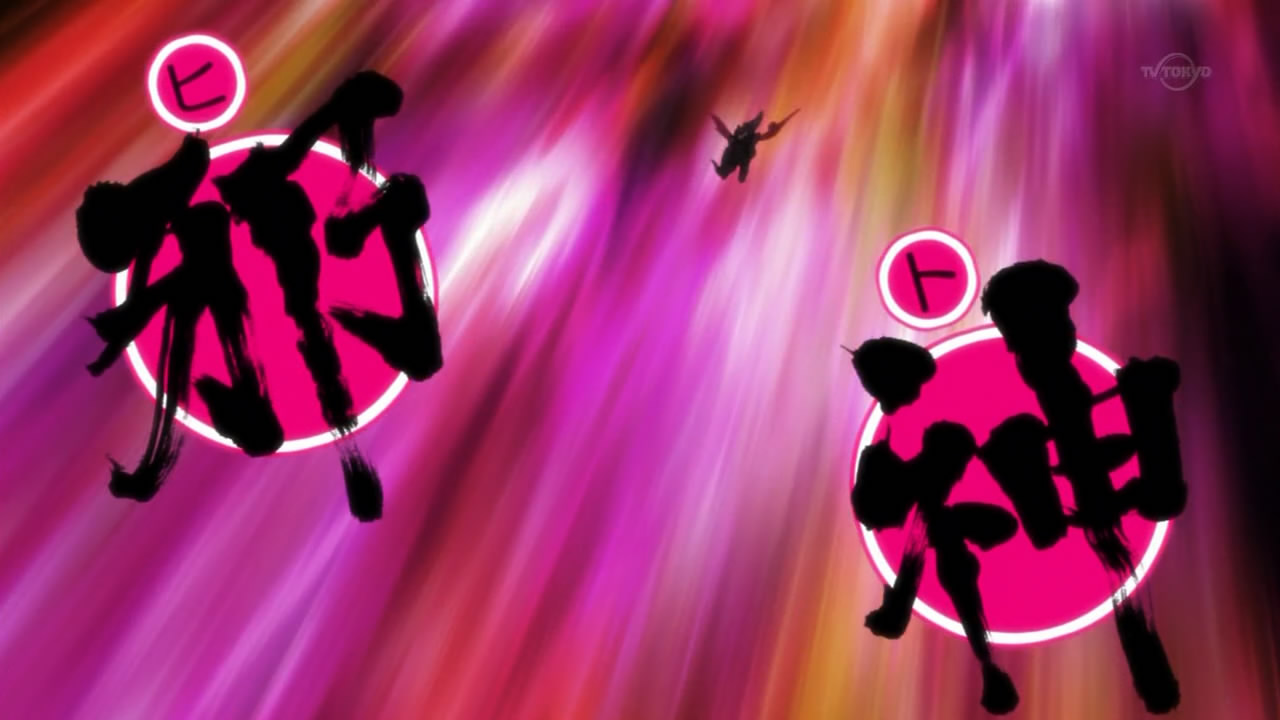
(18:50)
The large characters read 「邪神」 (jashin) meaning "evil god" while the smaller characters read 「ヒト」 (hito) meaning "person", stating that the text is written as "evil god" but read as "person". Like in episode 4 at 11:37, this is referencing a line from "At the Mountains of Madness", a story written by H. P. Lovecraft and first published in 1936. In the story, the main character discovers the remains of the Elder Things, a species of creature in the Cthulhu Mythos. After inspecting their ruins and learning of their past, the main character sympathizes with the Elder Things and realizes how human-like the Elder Things were, and exclaims, "Radiates, vegetables, monstrosities, star-spawn—whatever they had been, they were men!". In this way of thinking, Nyaruko is likening evil gods to people.
"Hate the person, not the mountain of games!" (18:51)
The Japanese line is "Hito wo nikunde! Tsumigee wo nikumazu!" (人を憎んで!積みゲーを憎まず!). The term "tsumigee" (積みゲー) more literally means "stacked games" or "piled up games". It refers to games that one buys but doesn't get around to playing, so they get piled up. Nyaruko's line is parodying a proverb that states, "Tsumi wo nikunde hito wo nikumazu" (罪を憎んで人を憎まず), which translates to "Hate the sin, not the person".S1
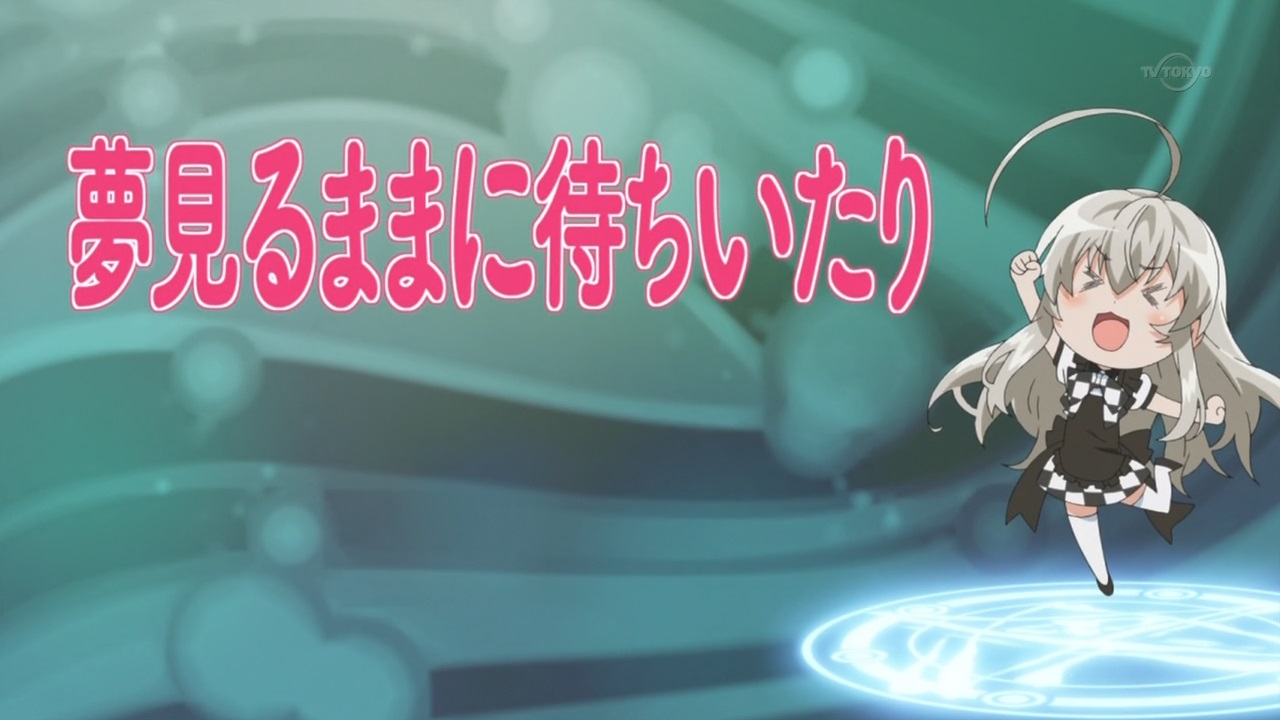
(19:04)
The title of this episode is "Yume miru mama ni machi itari" (夢見るままに待ちいたり), which translates to "He Waits, Dreaming". There are two references here:
* This is referencing "The Call of Cthulhu", a short story written by H. P. Lovecraft and first published in 1928. In the story there is a chant that goes as follows:
"Ph'nglui mglw'nafh Cthulhu R'lyeh wgah'nagl fhtagn"This chant is stated to mean the following:
"In his house at R'lyeh, dead Cthulhu waits dreaming".The Japanese translation of this chant goes as follows:
「死せるクトゥルー、ルルイエの館にて、夢見るままに待ちいたり」* The title of this episode is the original title of "Haiyore! Nyaruko-san" that Aisora Manta (逢空万太) used when he submitted the story to a GA Bunko contest.
"Shiseru Kutouruu, Ruruie no yakata nite, yume miru mama ni machi itari"

(22:42)
The game device that Cthuko is playing with is based on the Game Gear (ゲームギア), a handheld video game console released by Sega (セガ) in 1990.S2 Image for reference:

Source of image: https://en.wikipedia.org/wiki/File:Sega-Game-Gear-WB.png
On a related note, the official anime website for "Haiyore! Nyaruko-san", http://nyaruko.com/, has returned to normal. Image for reference:
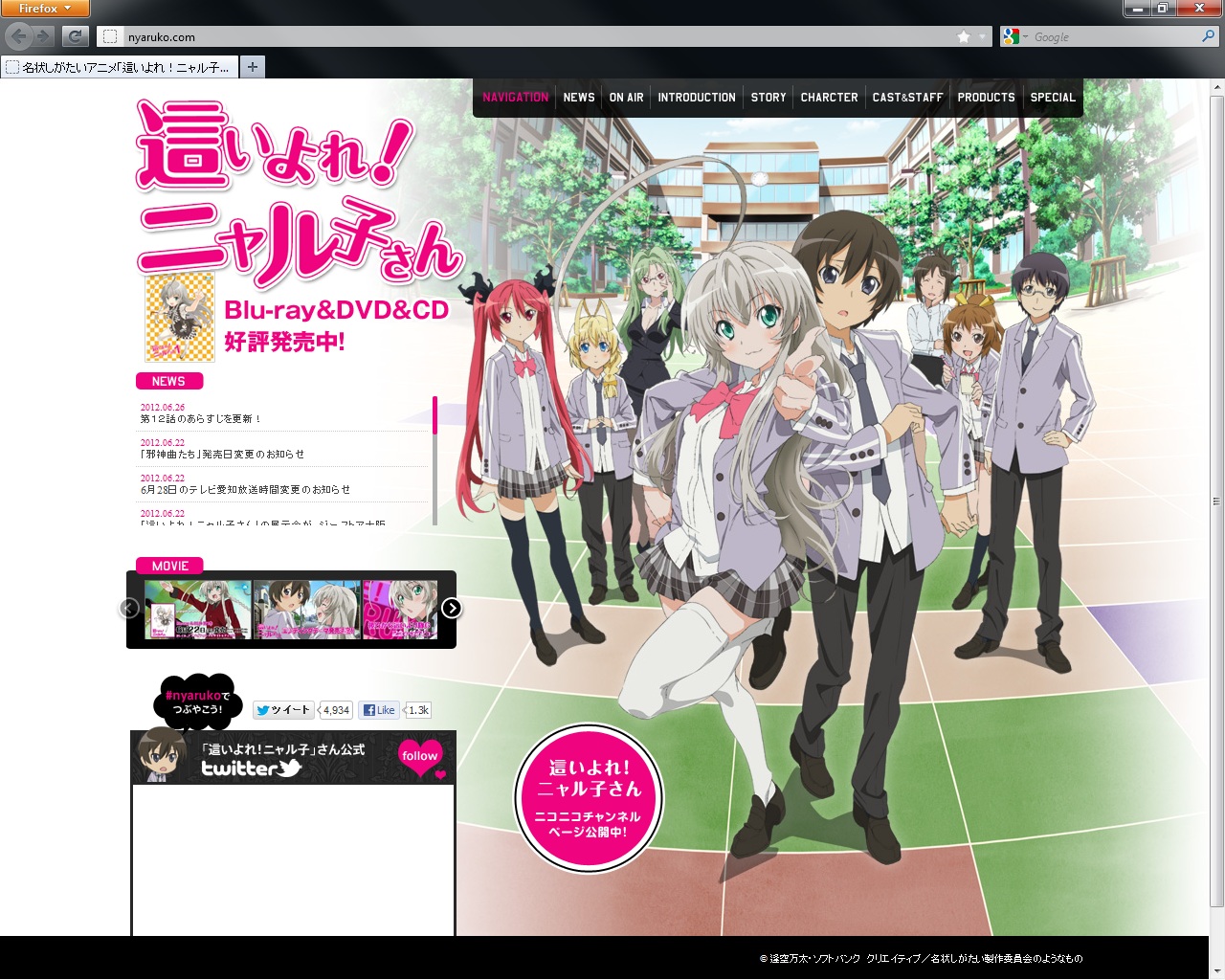
List of sources:
S1. Comments on this post
S2. A post at Steman Blog (ステマブログ)
S3. Japanese Nyaruko References Wiki (這いよれ! ニャル子さん 元ネタwiki)
S4. A blog by servitors about Cthulhu Mythos inspired works (クトゥルー/クトゥルフ神話作品発掘記)
S5. A blog post by T.Y.
S6. A blog post by KUNI
S7. A blog post by Kame Rasukaru (かめラスカル)
Thanks to everyone who contributed! This list wouldn't be nearly as long without you all. Well, this is the end. Thanks so much for reading! Let's meet again!
情報を教えてくださって本当にありがとうございました!皆さんがいなかったら、このリストはぜんぜん長くありません。じゃ、これは終わりですね。読んでくださって、本当にありがとうございました!また会いましょう!
Last updated March 5, 2013
Sitemap
Home
